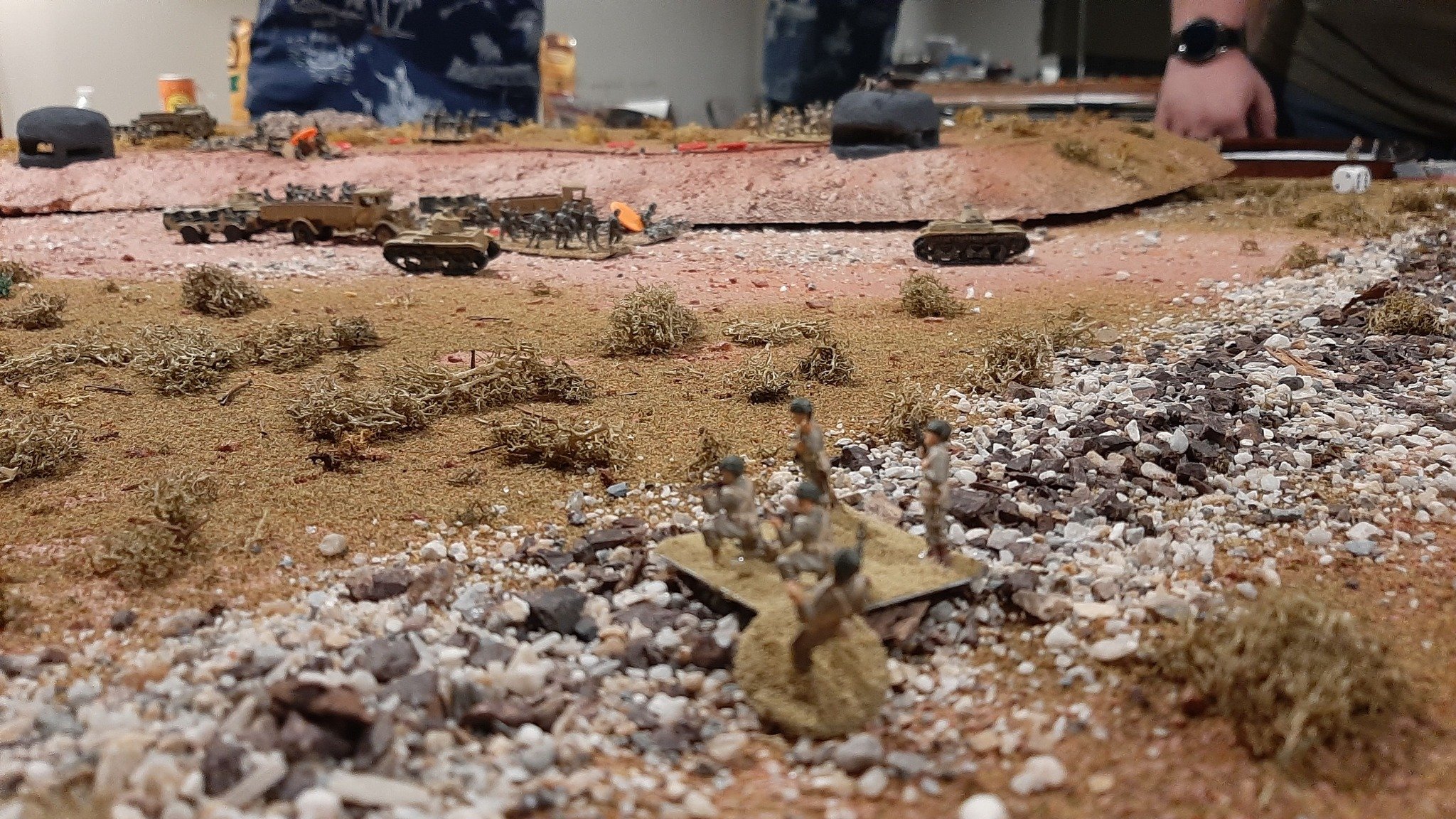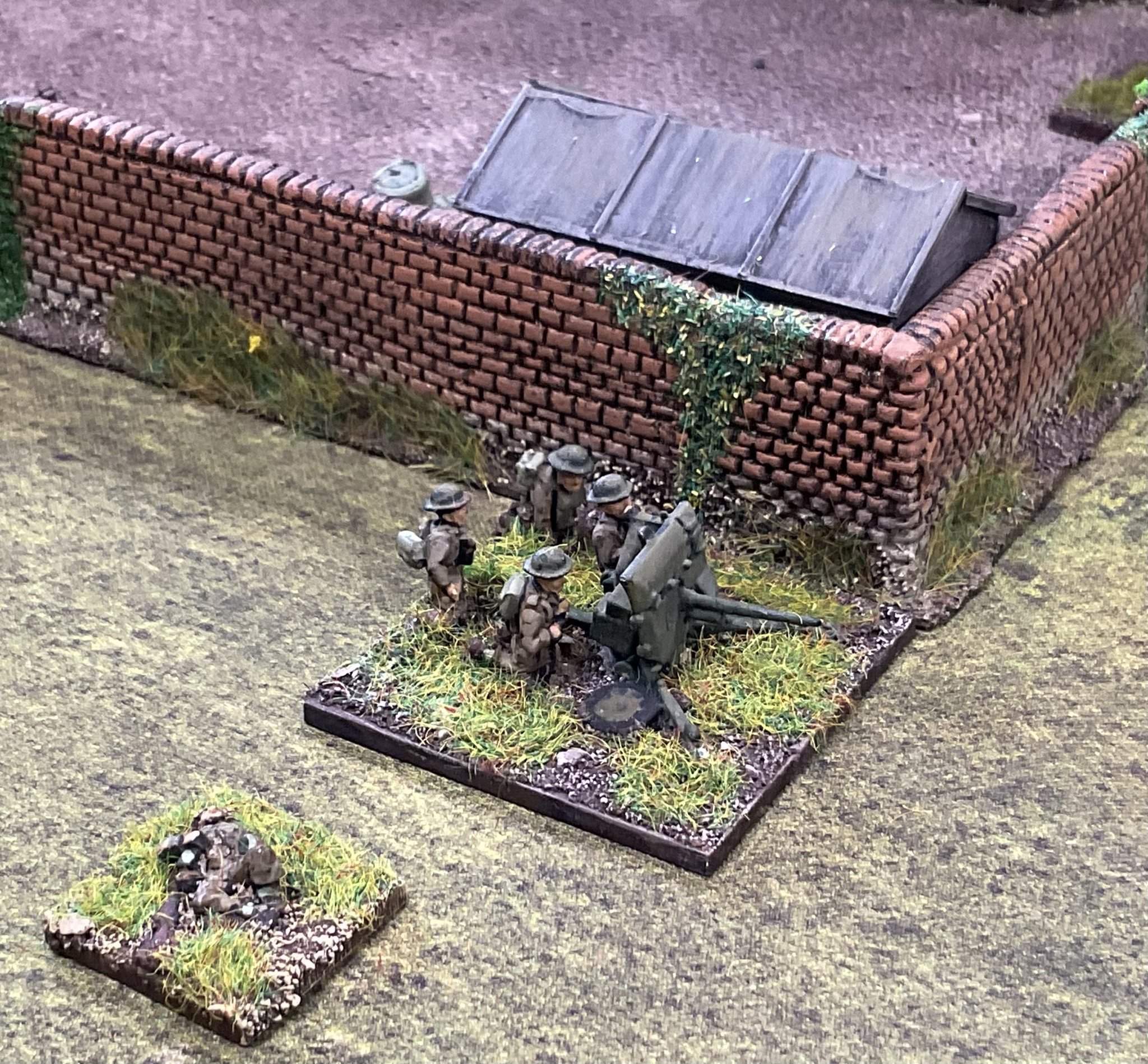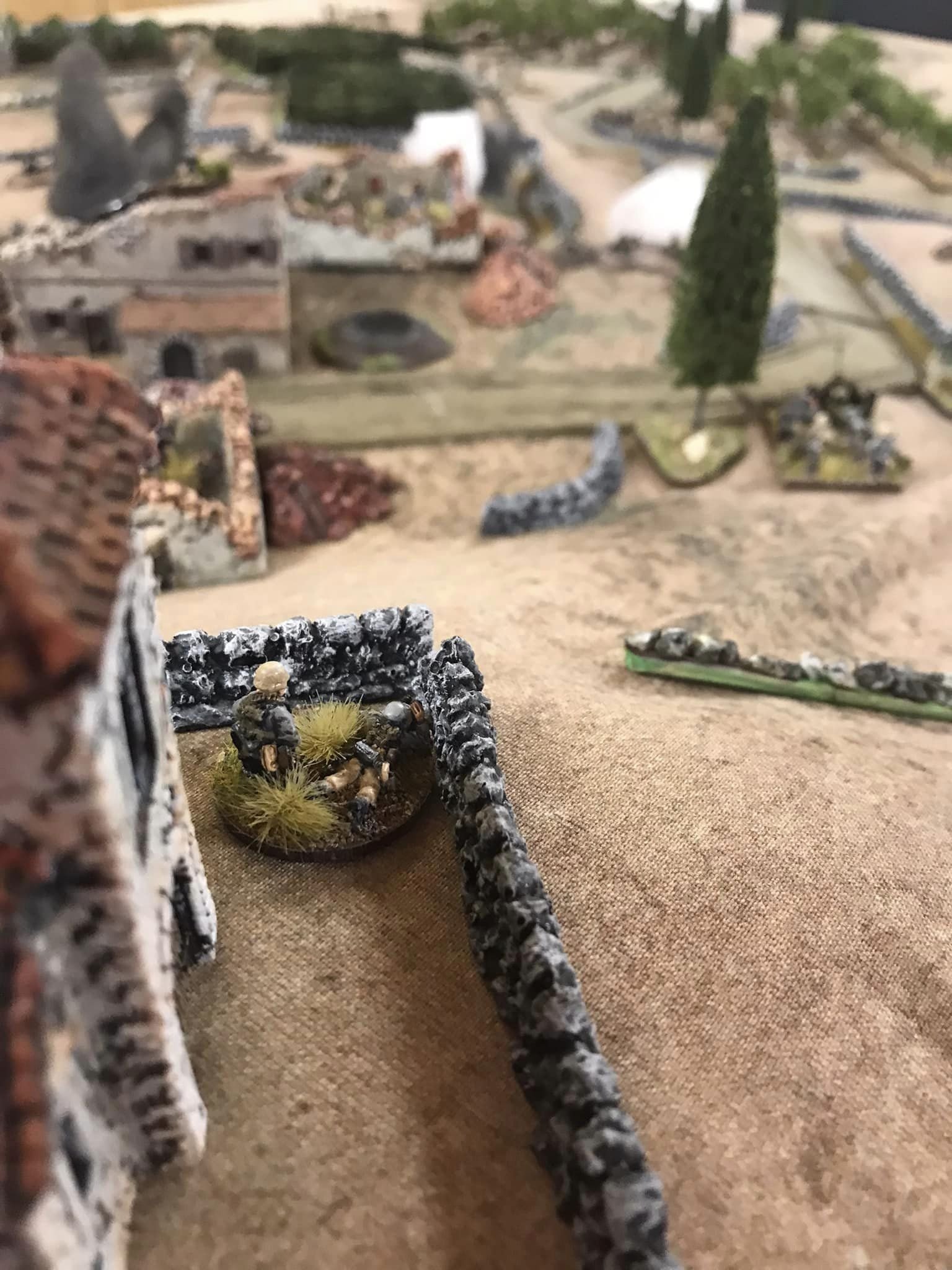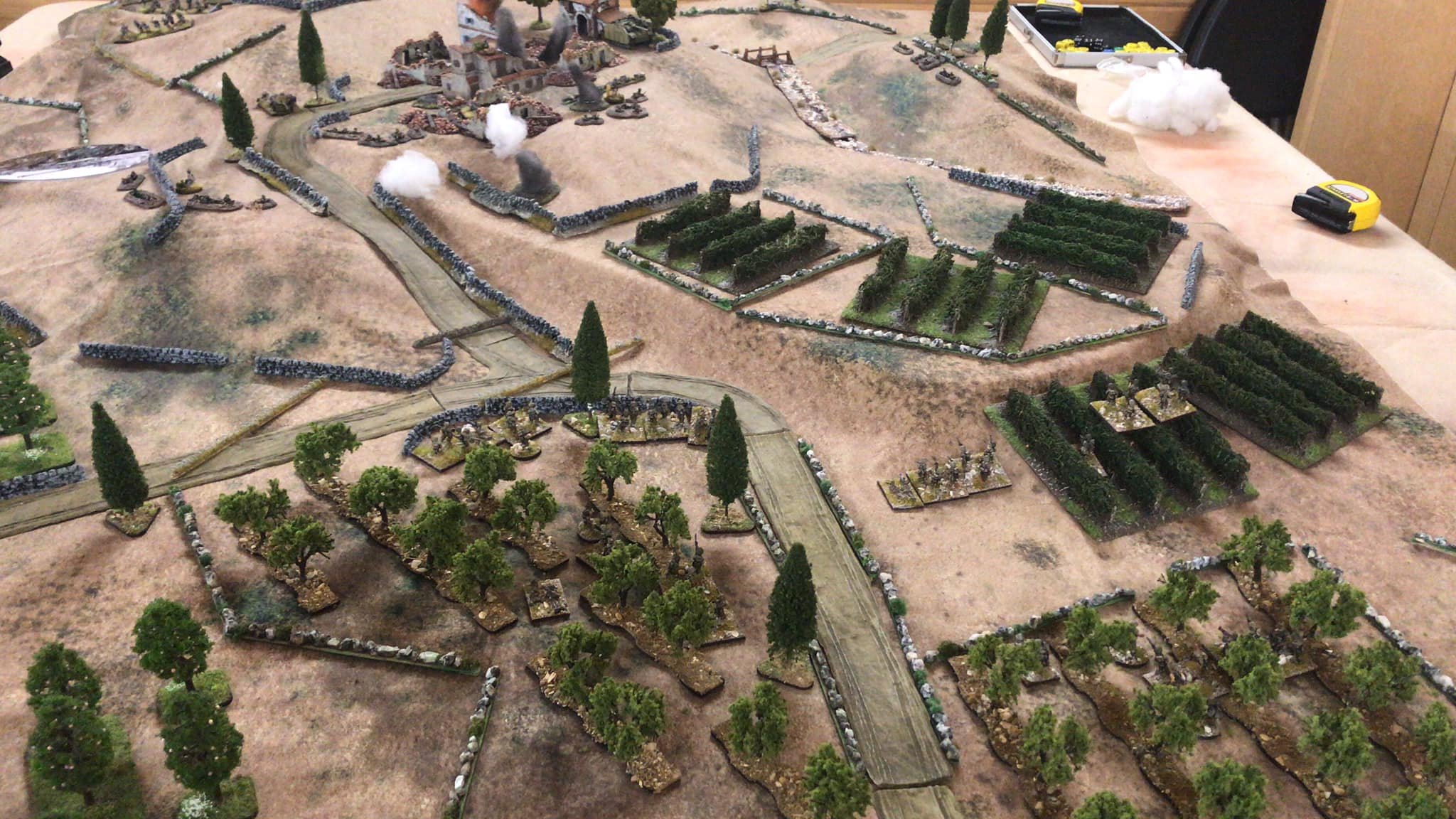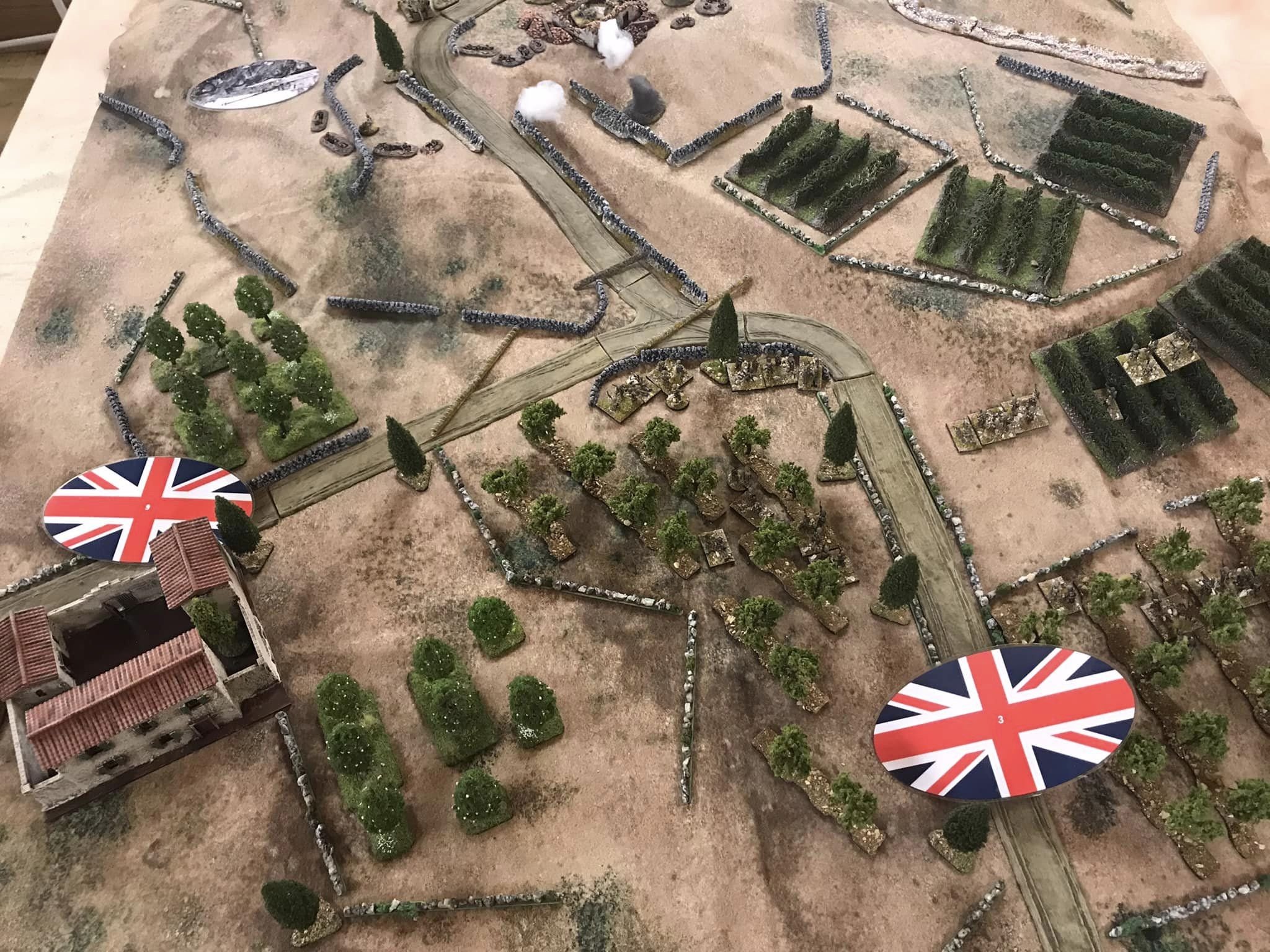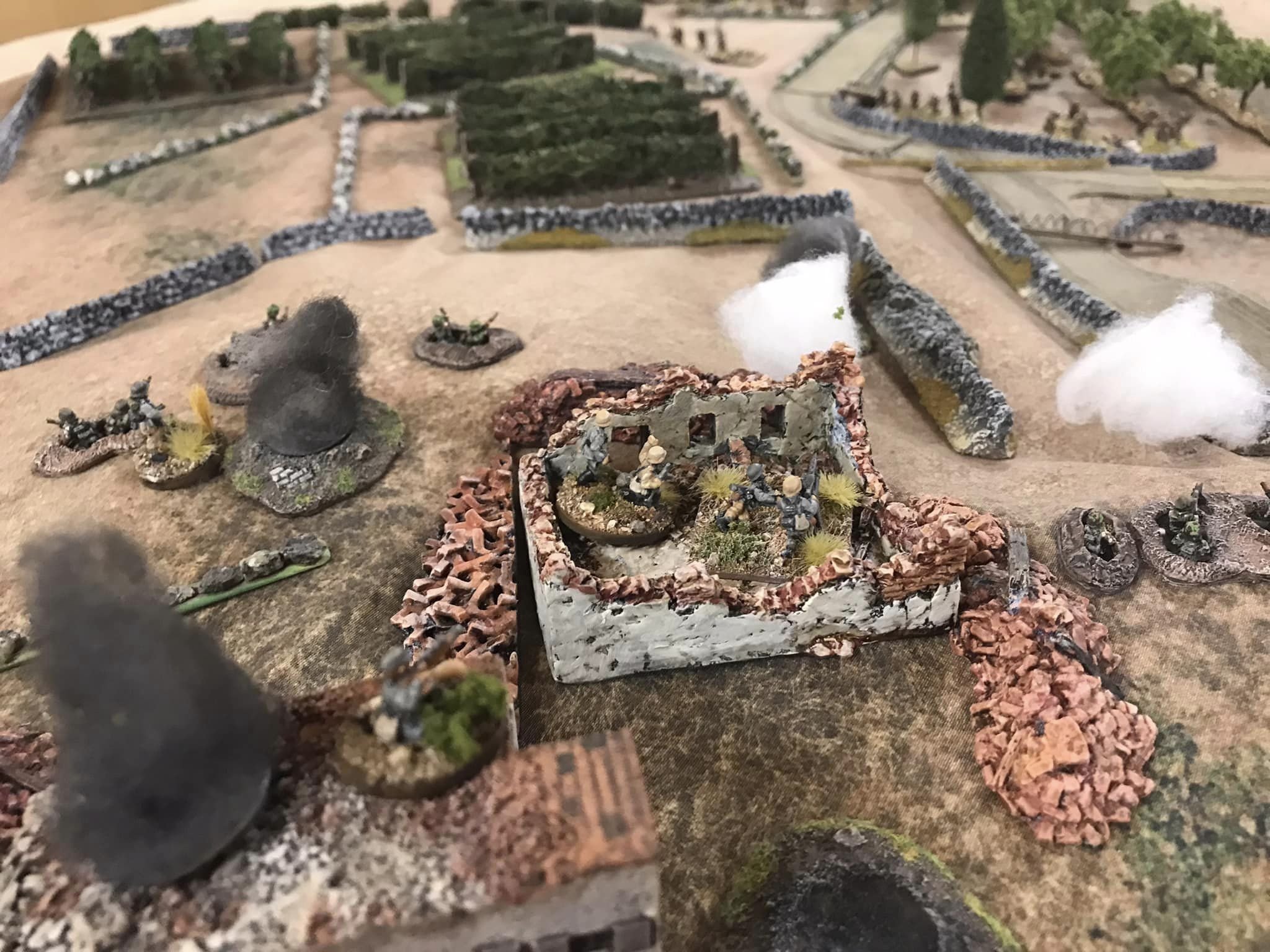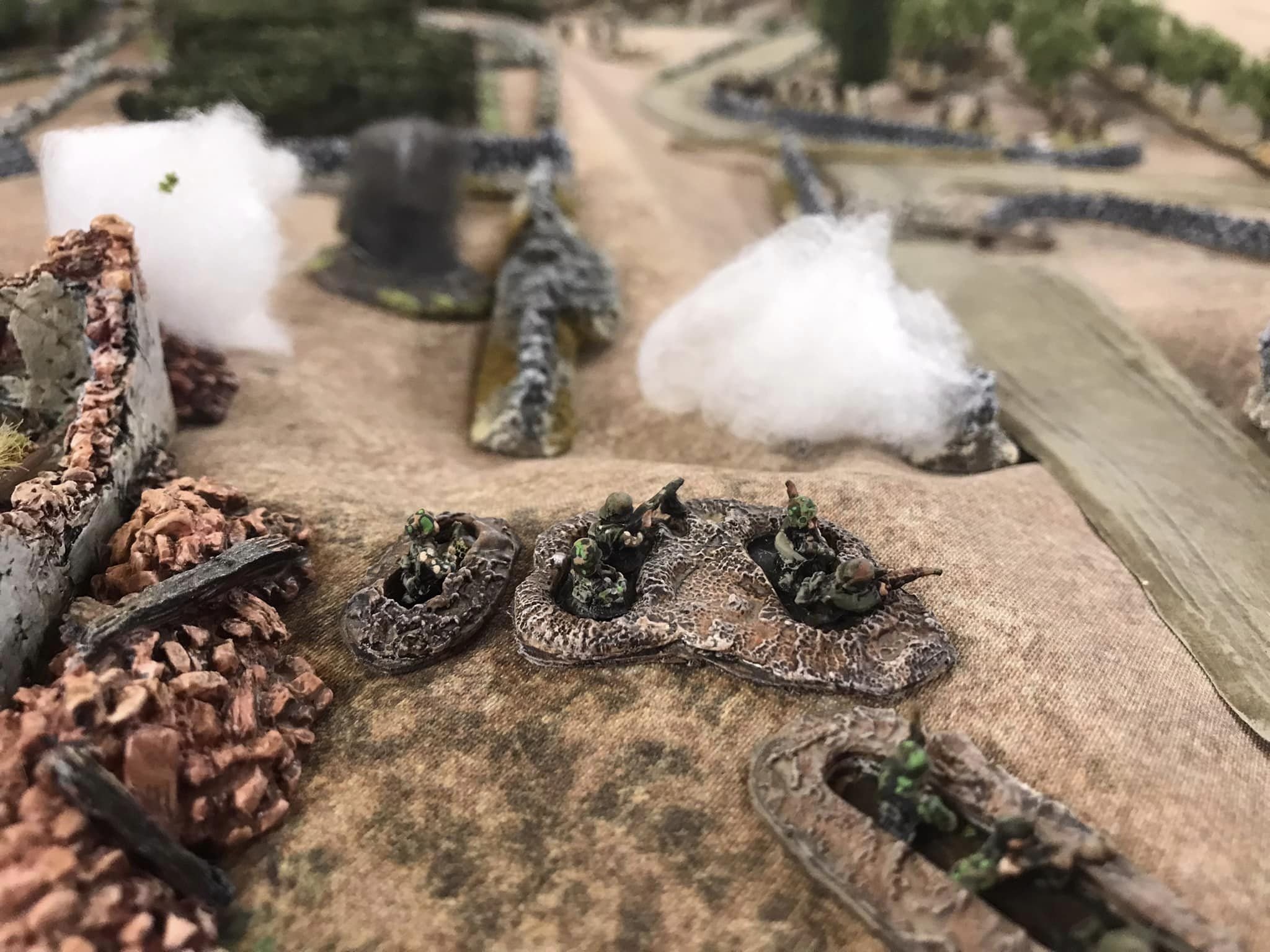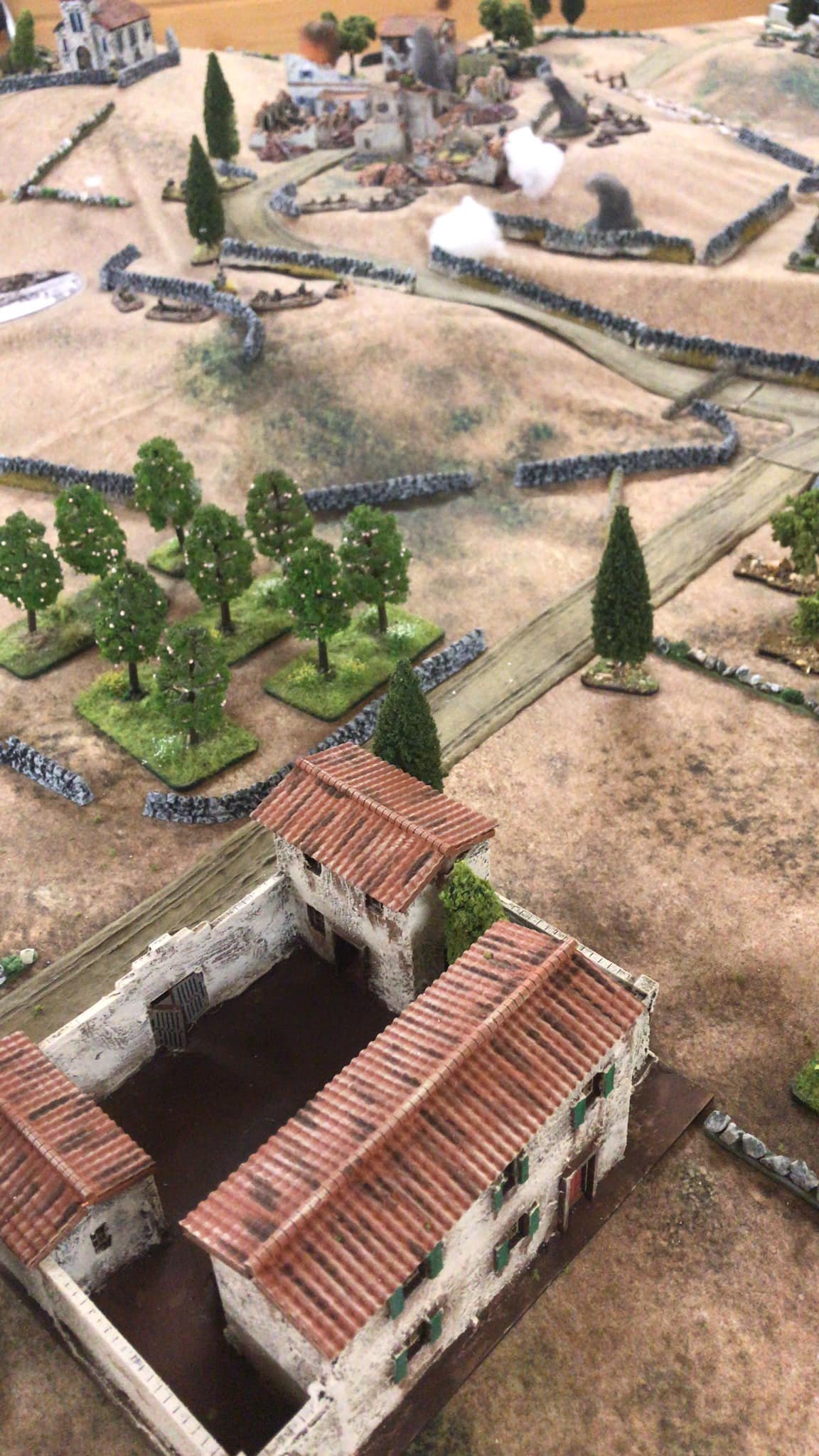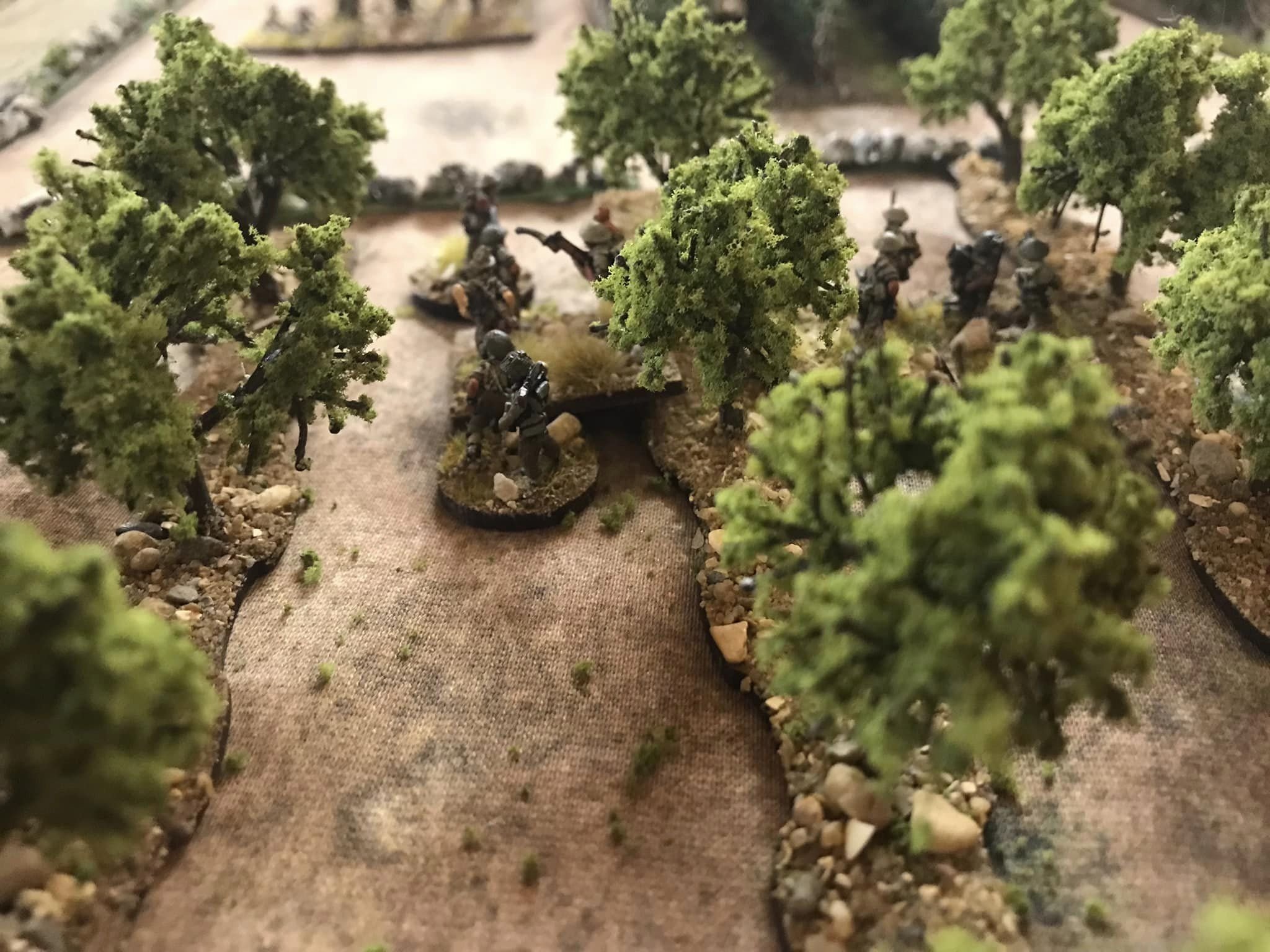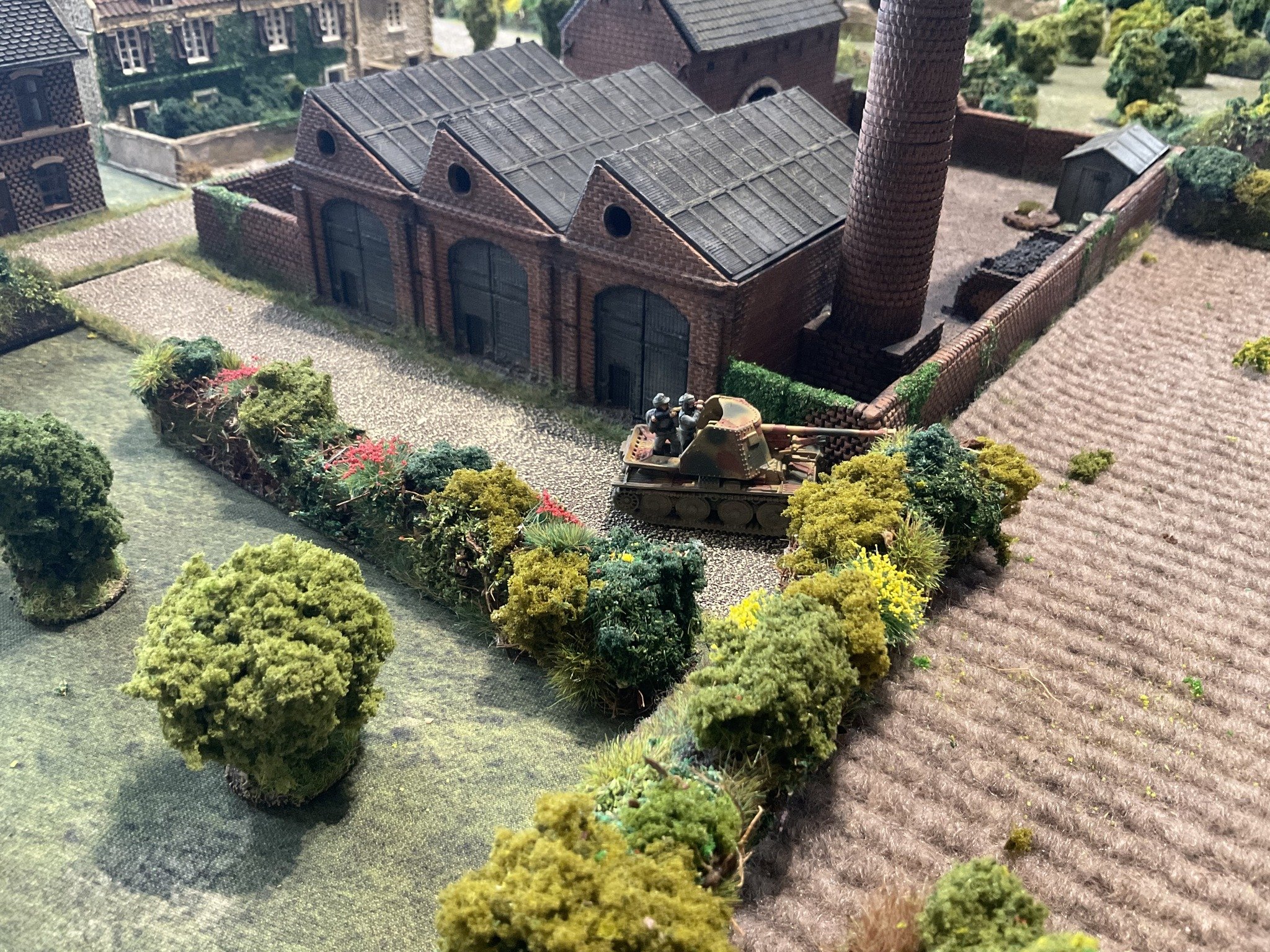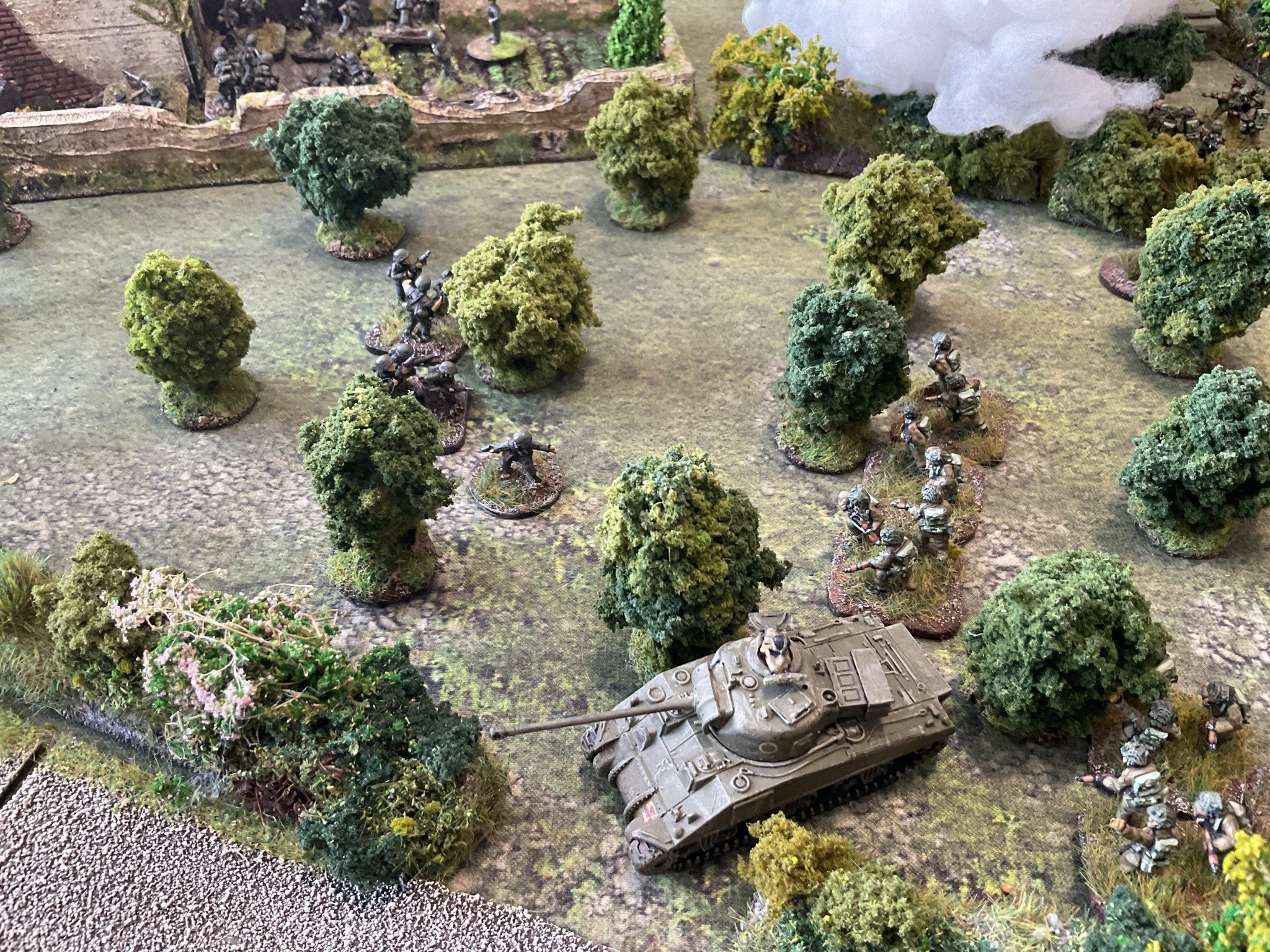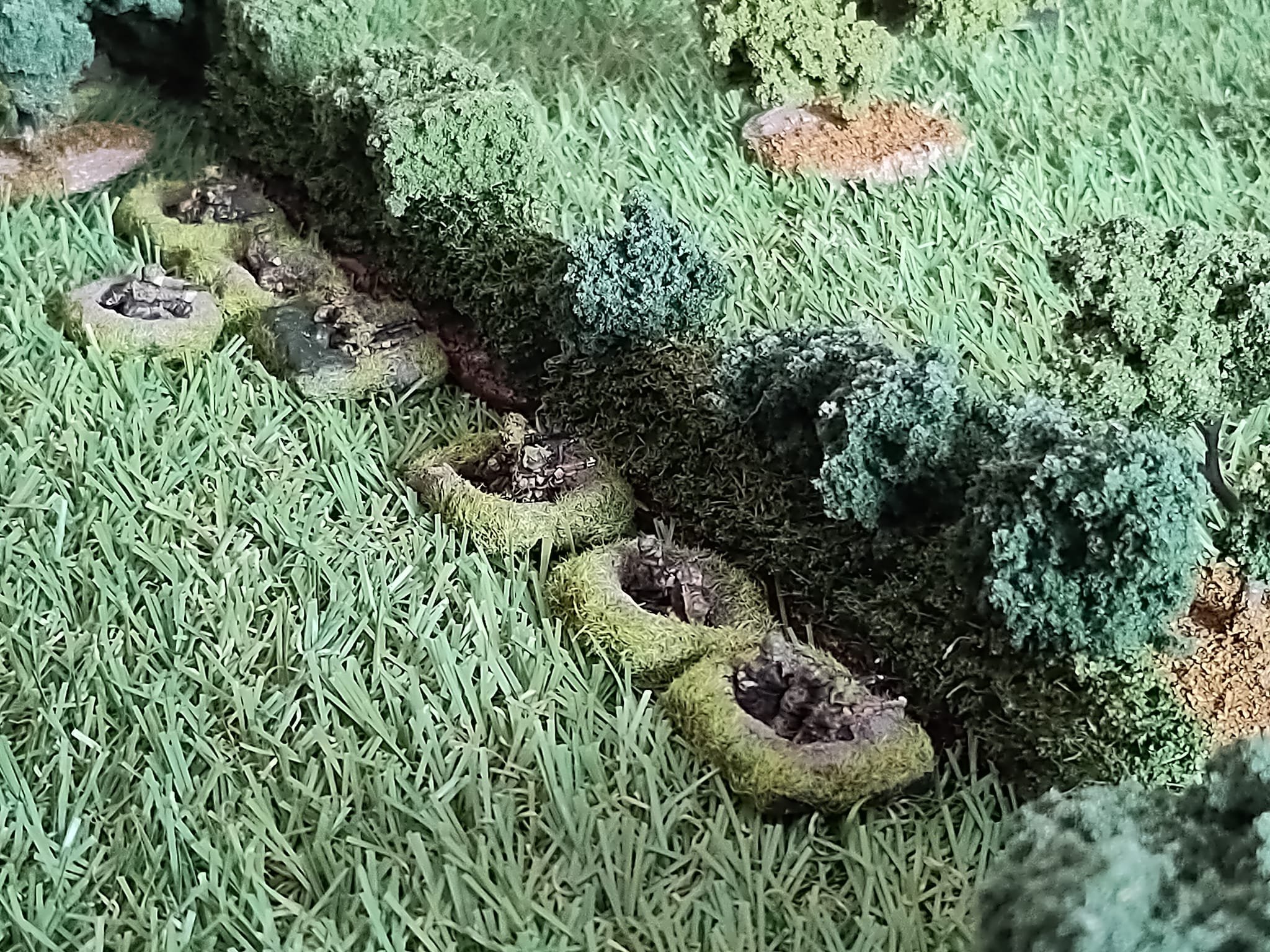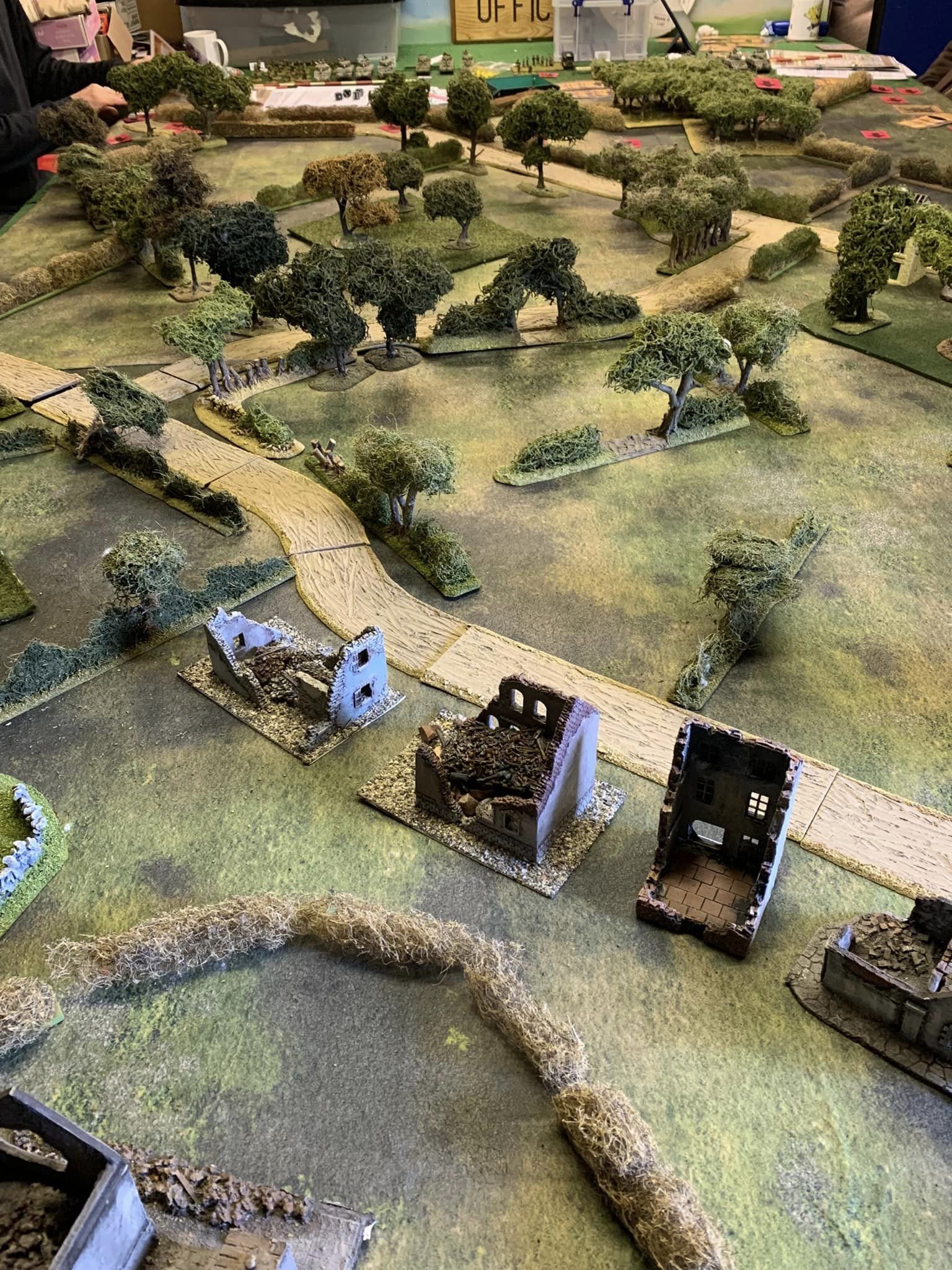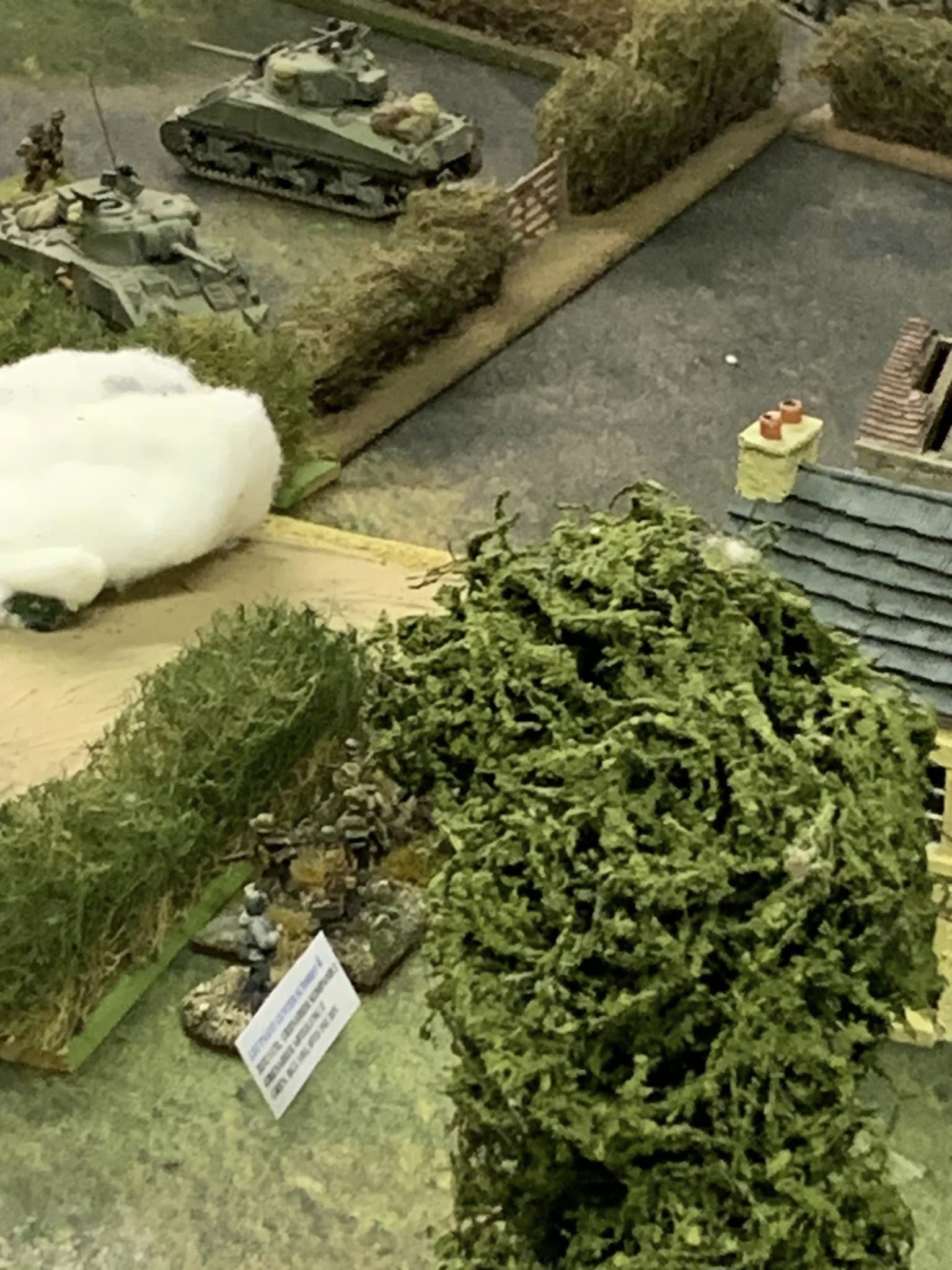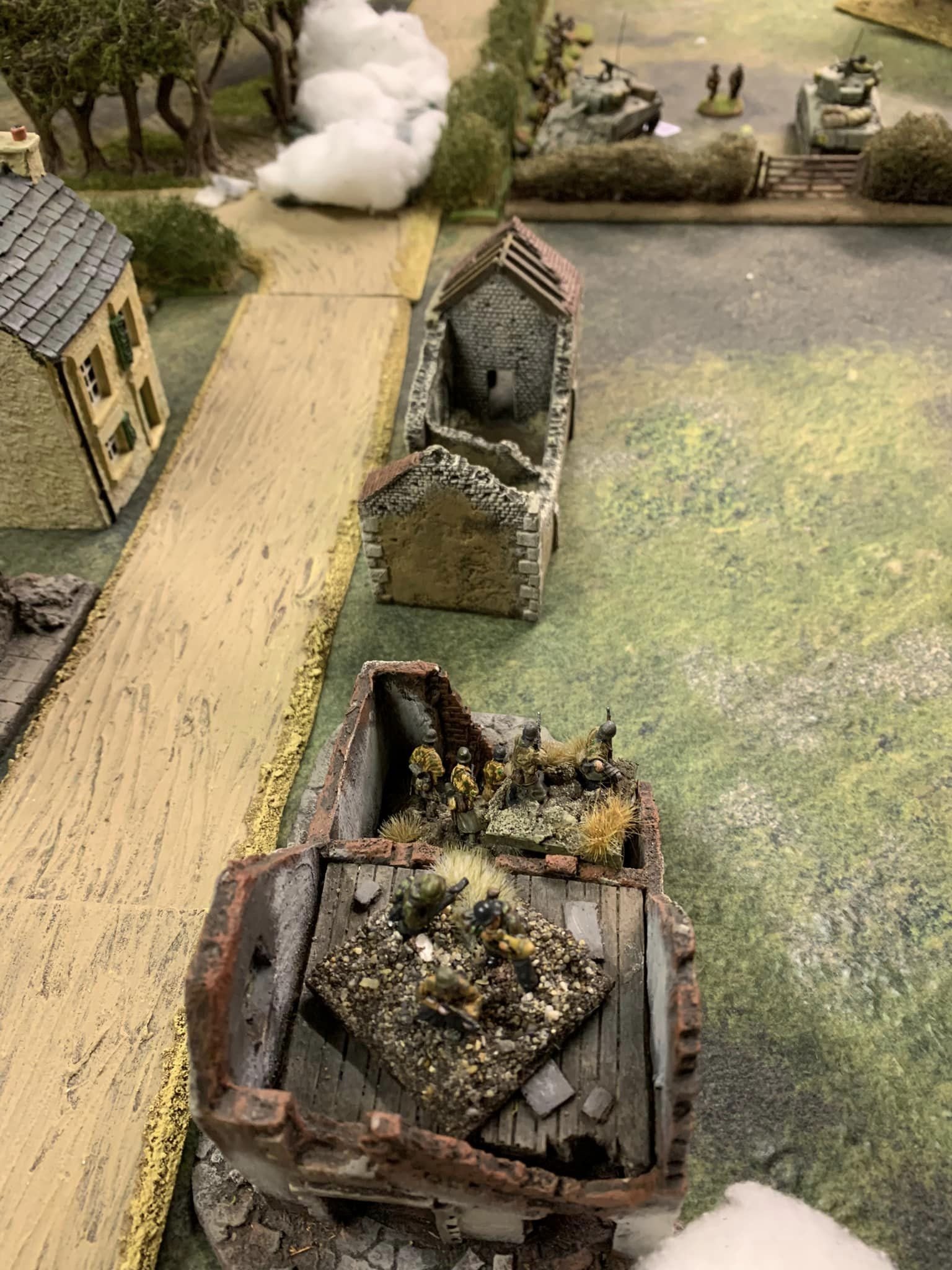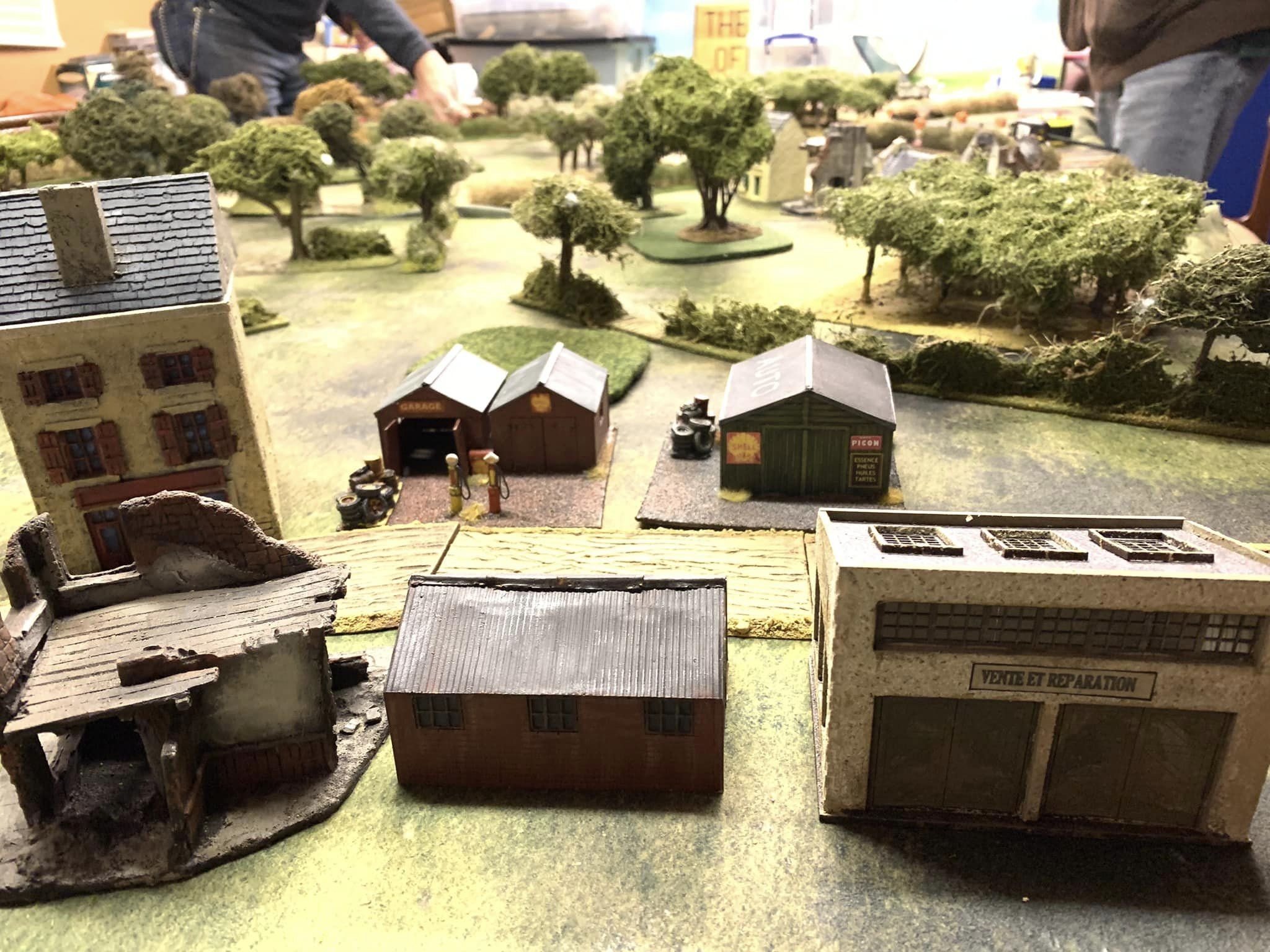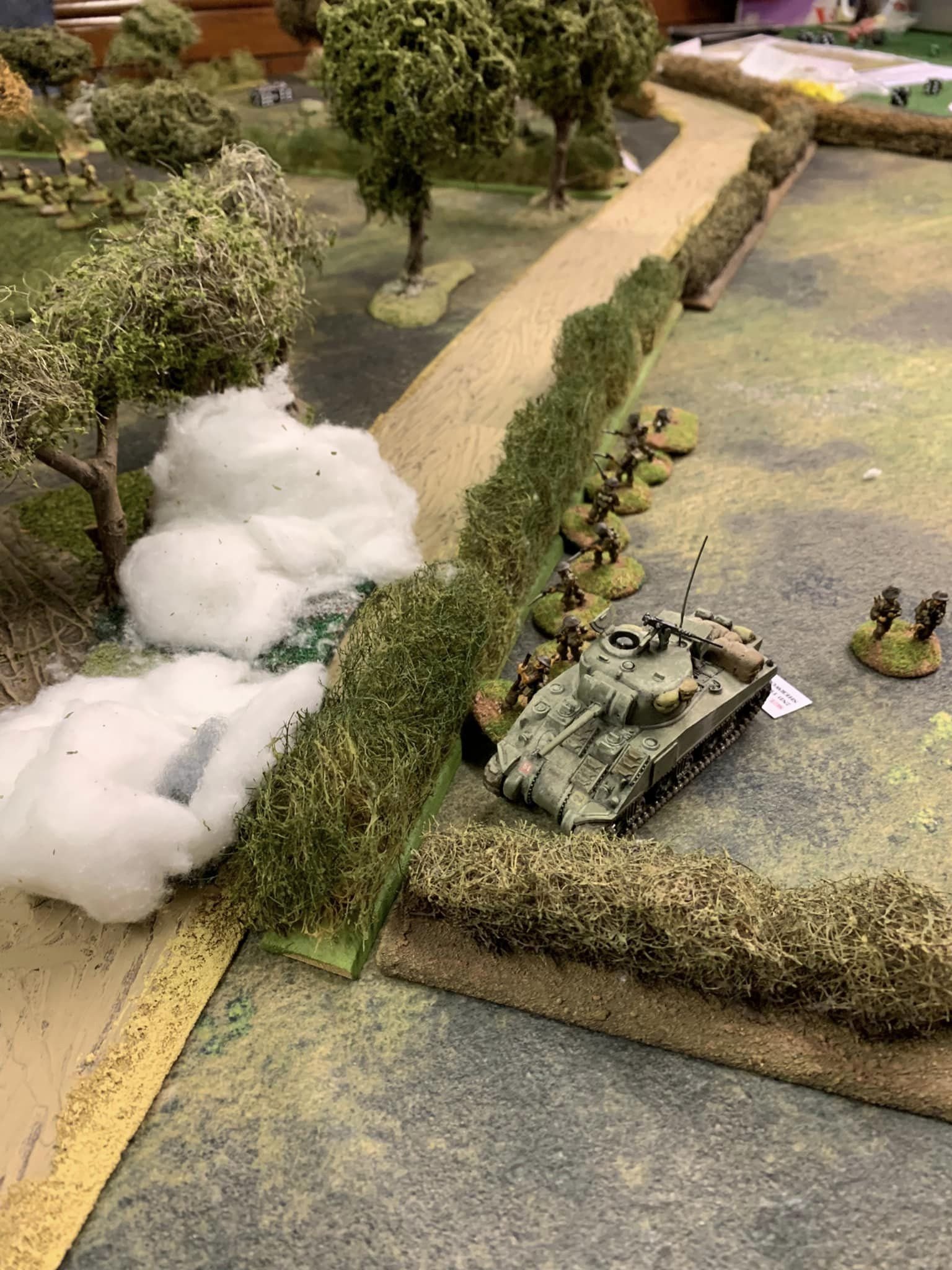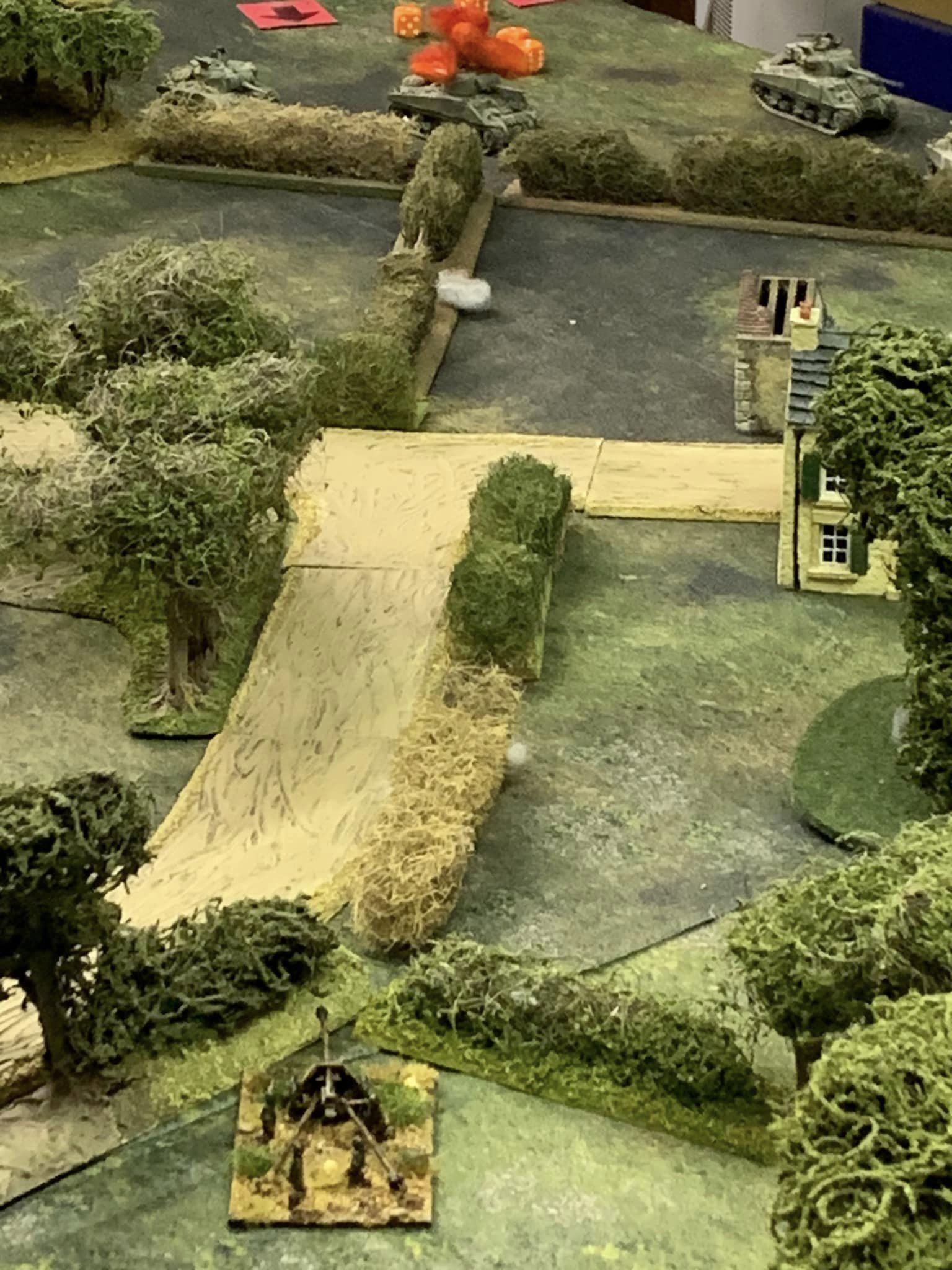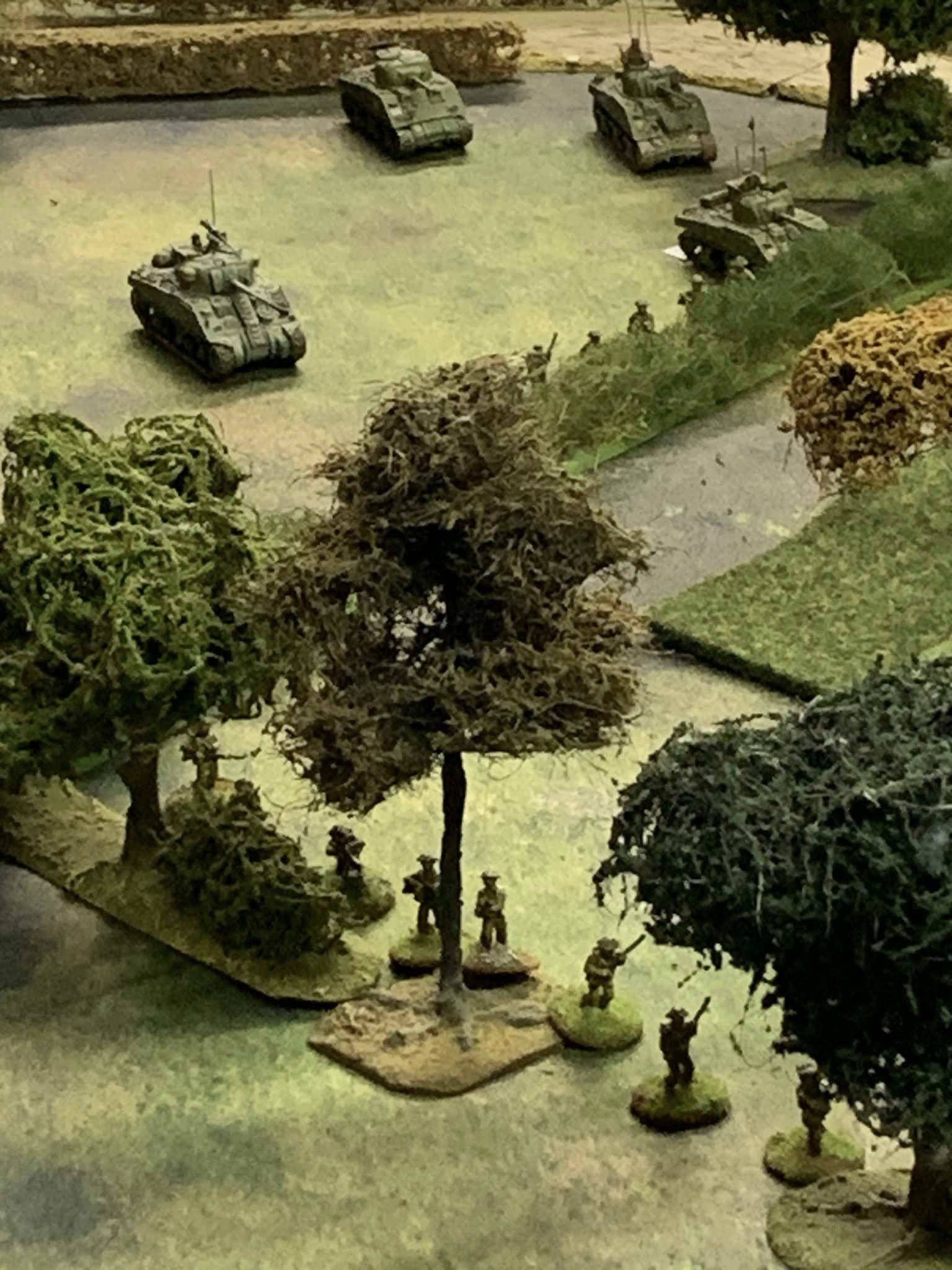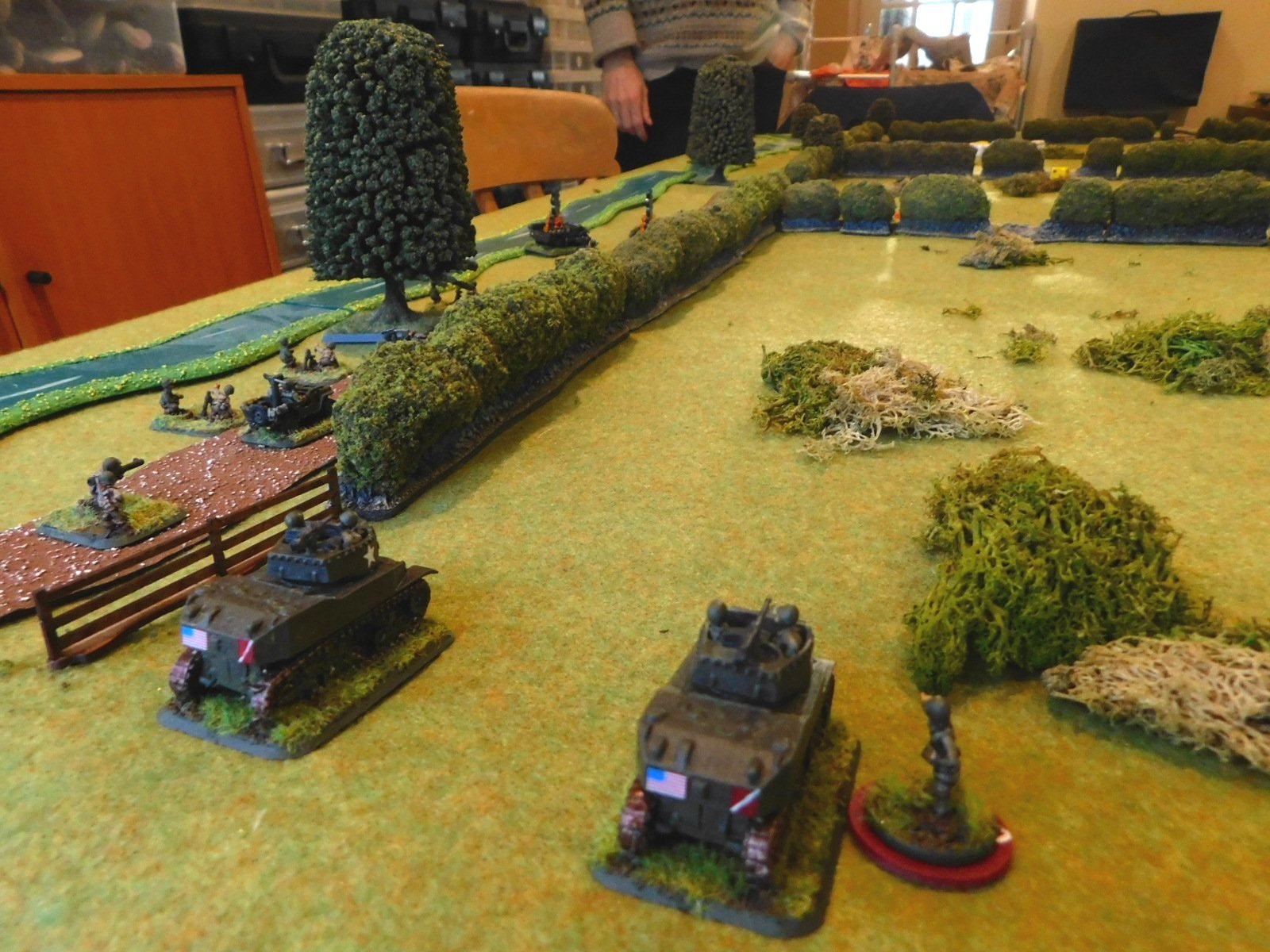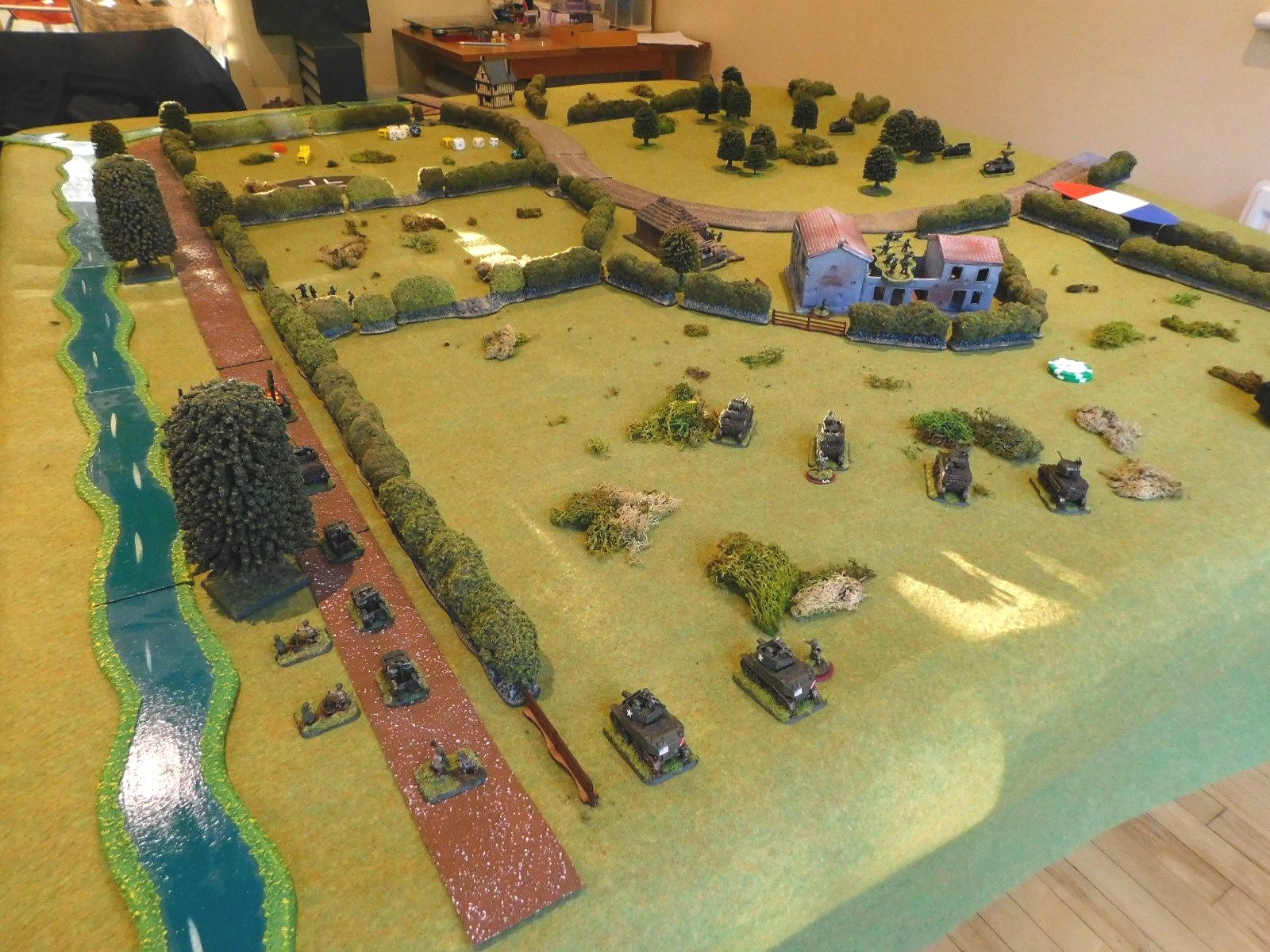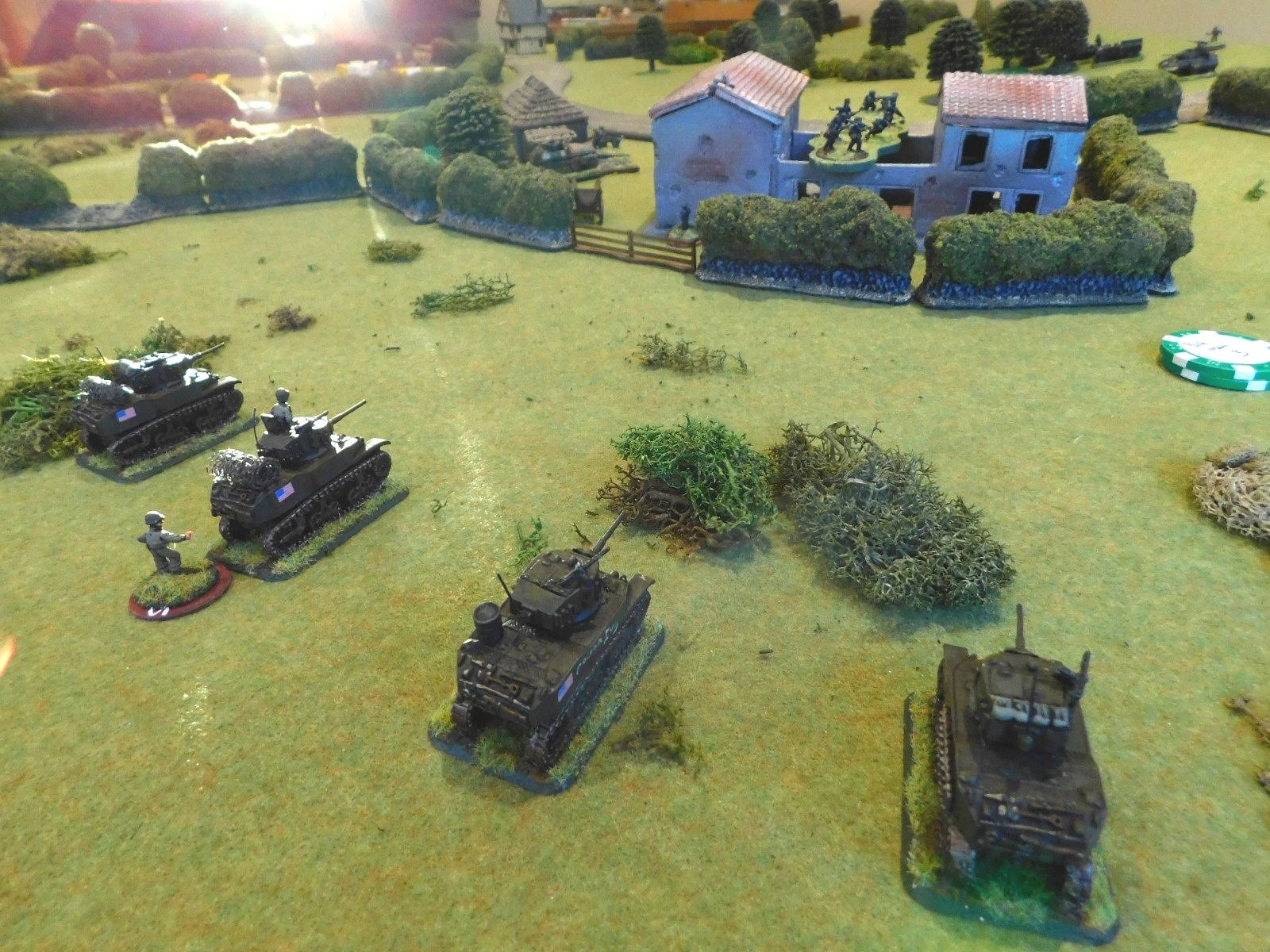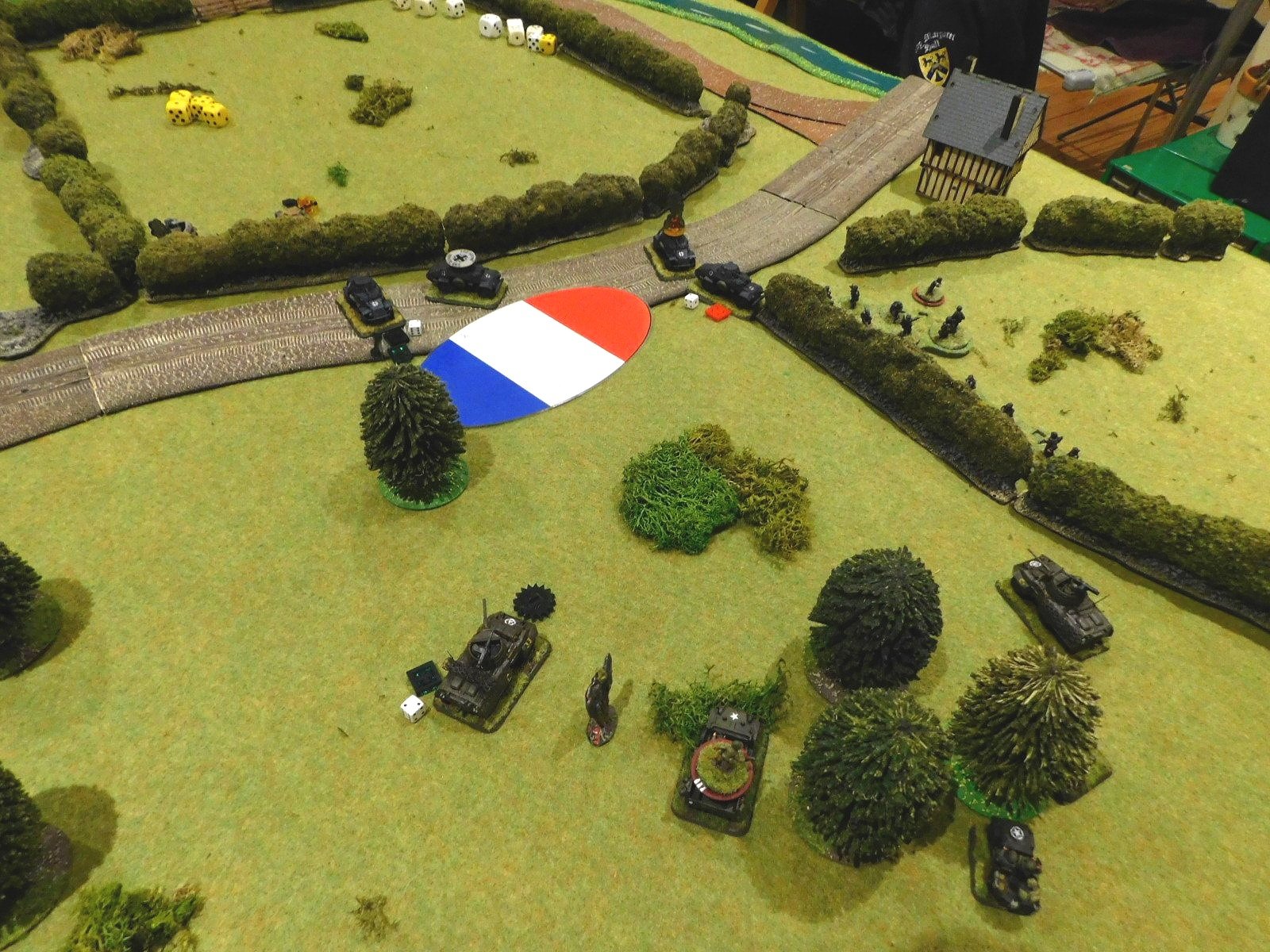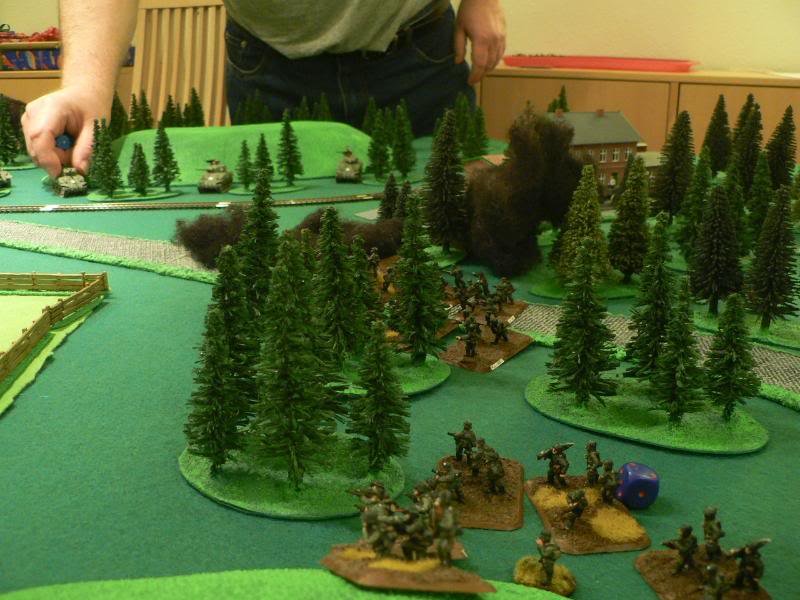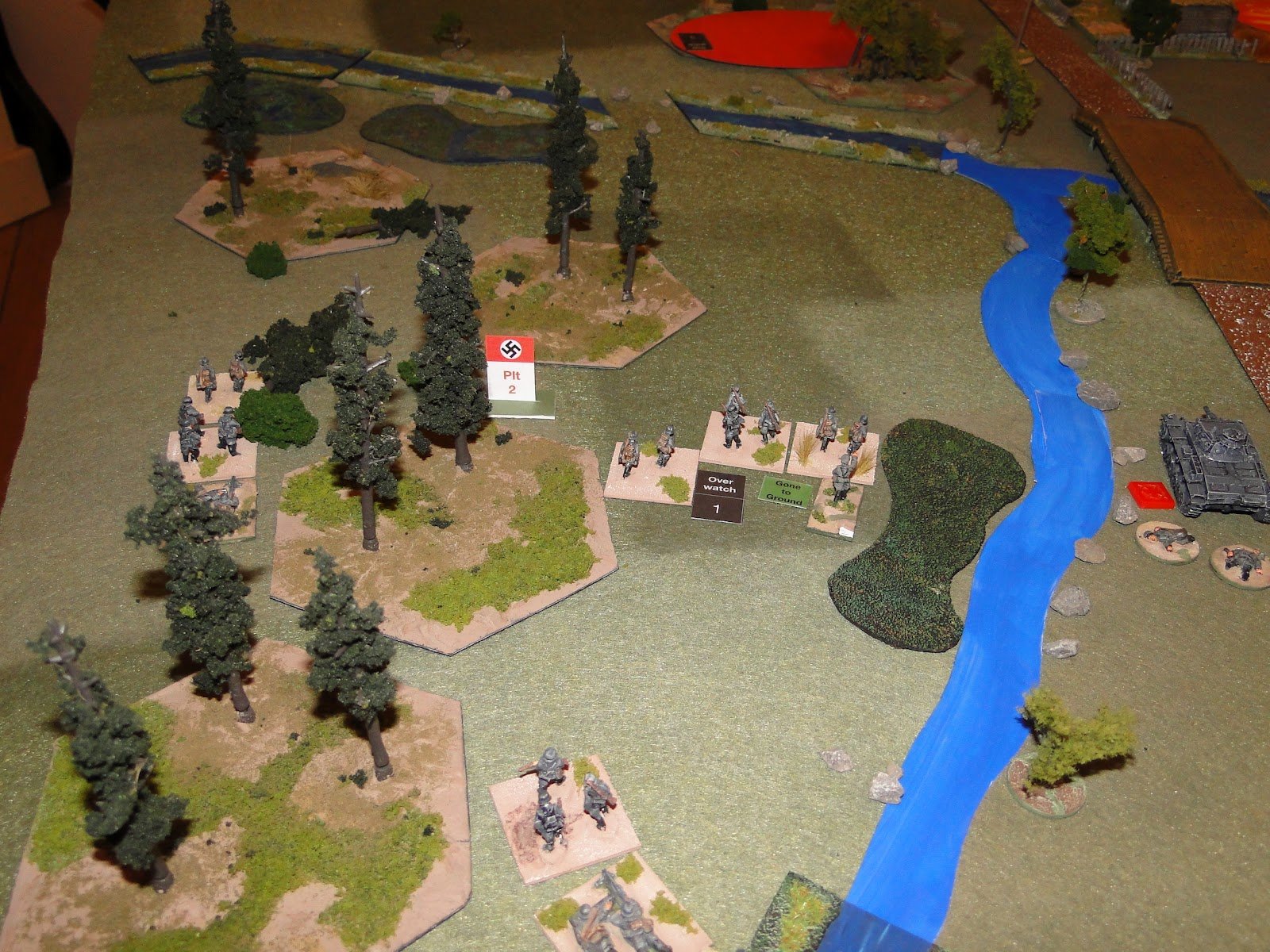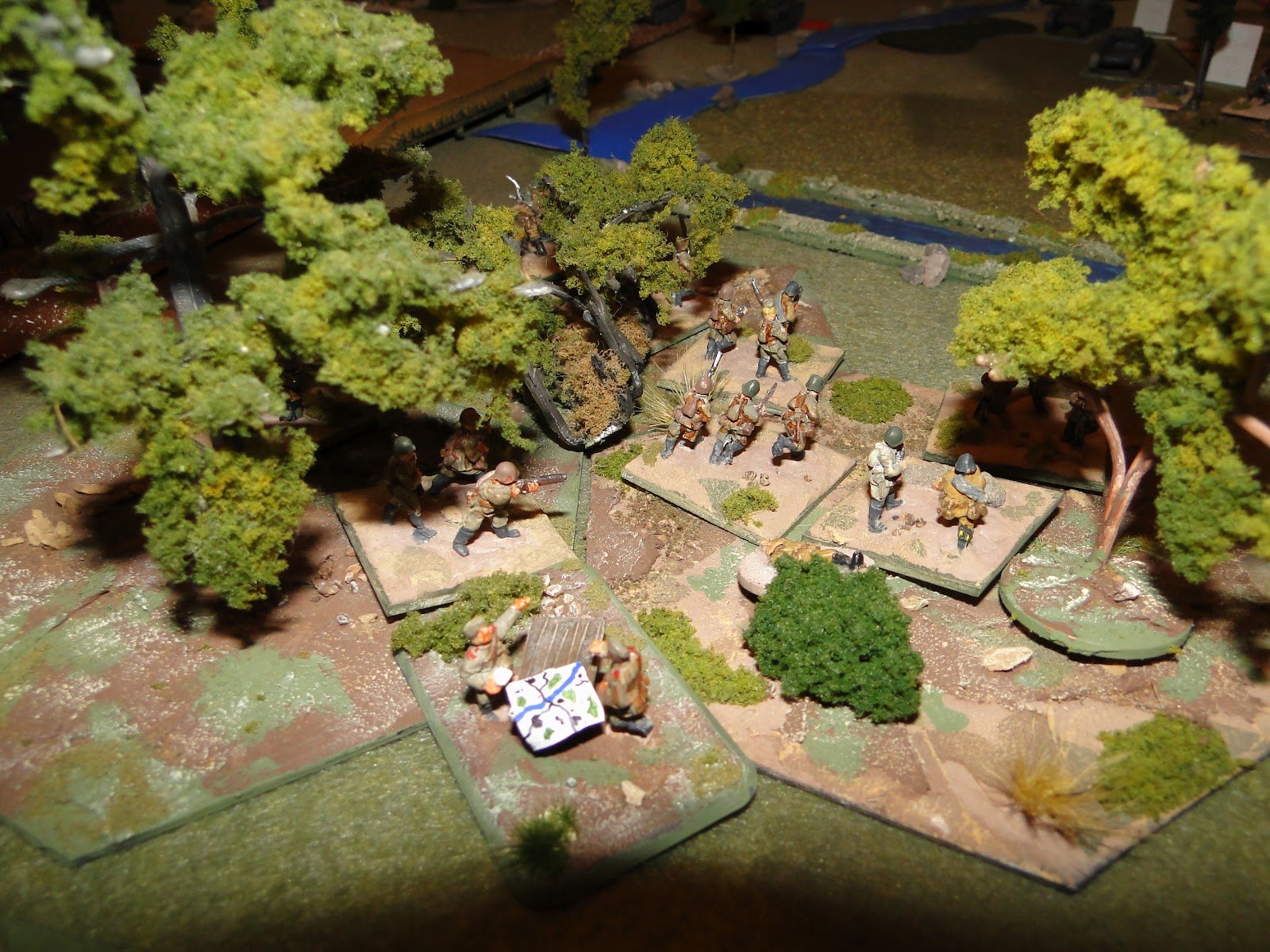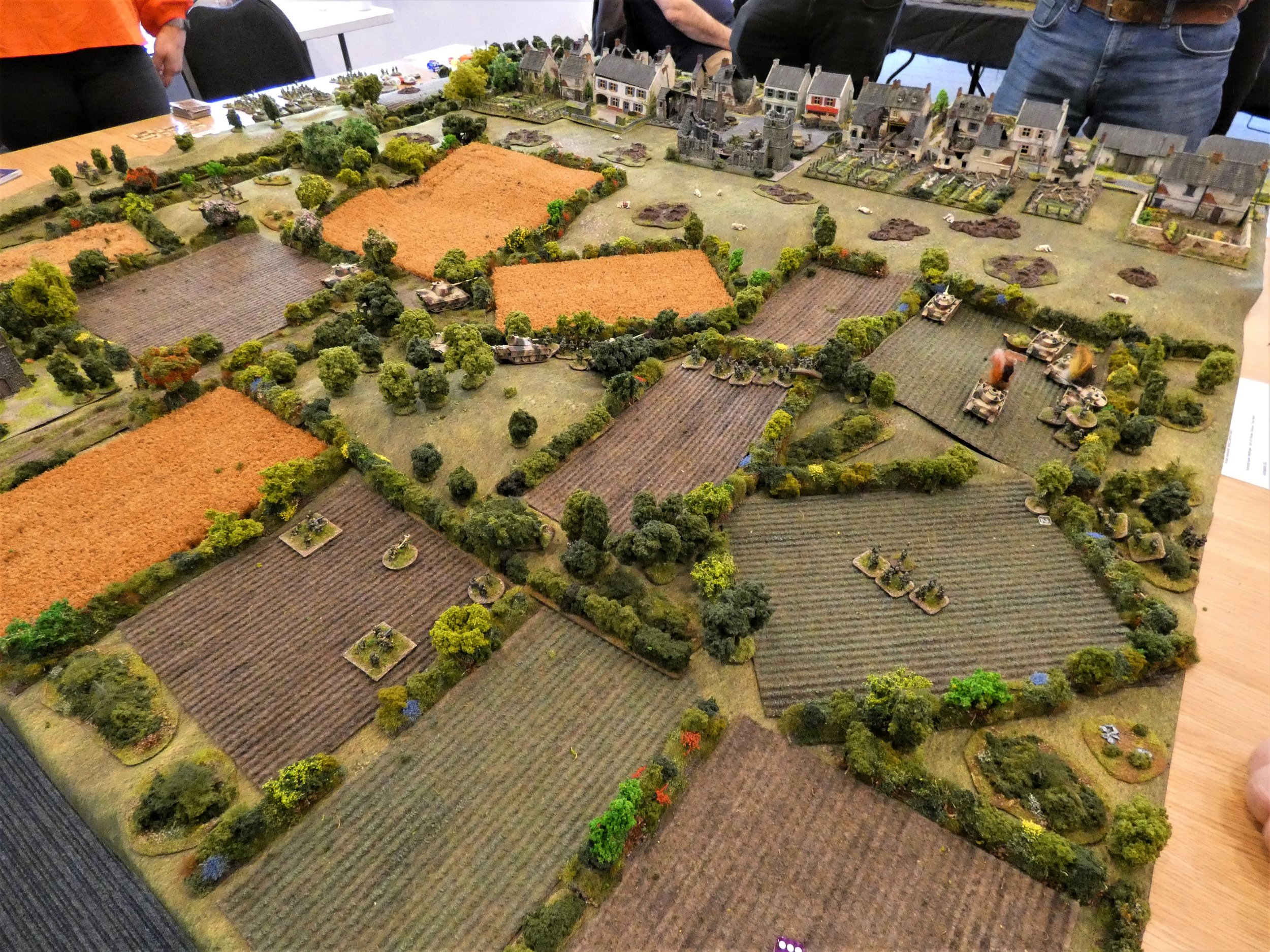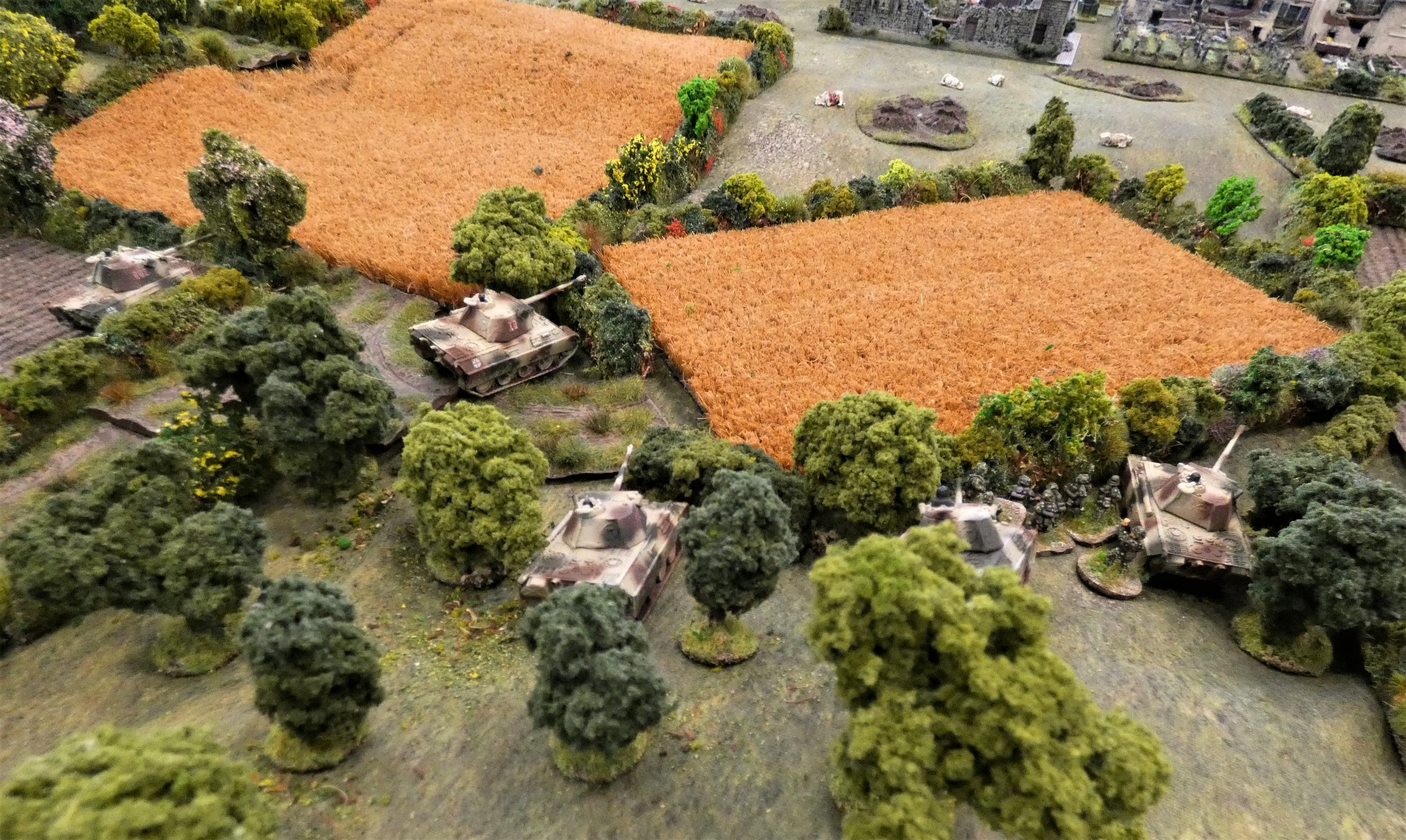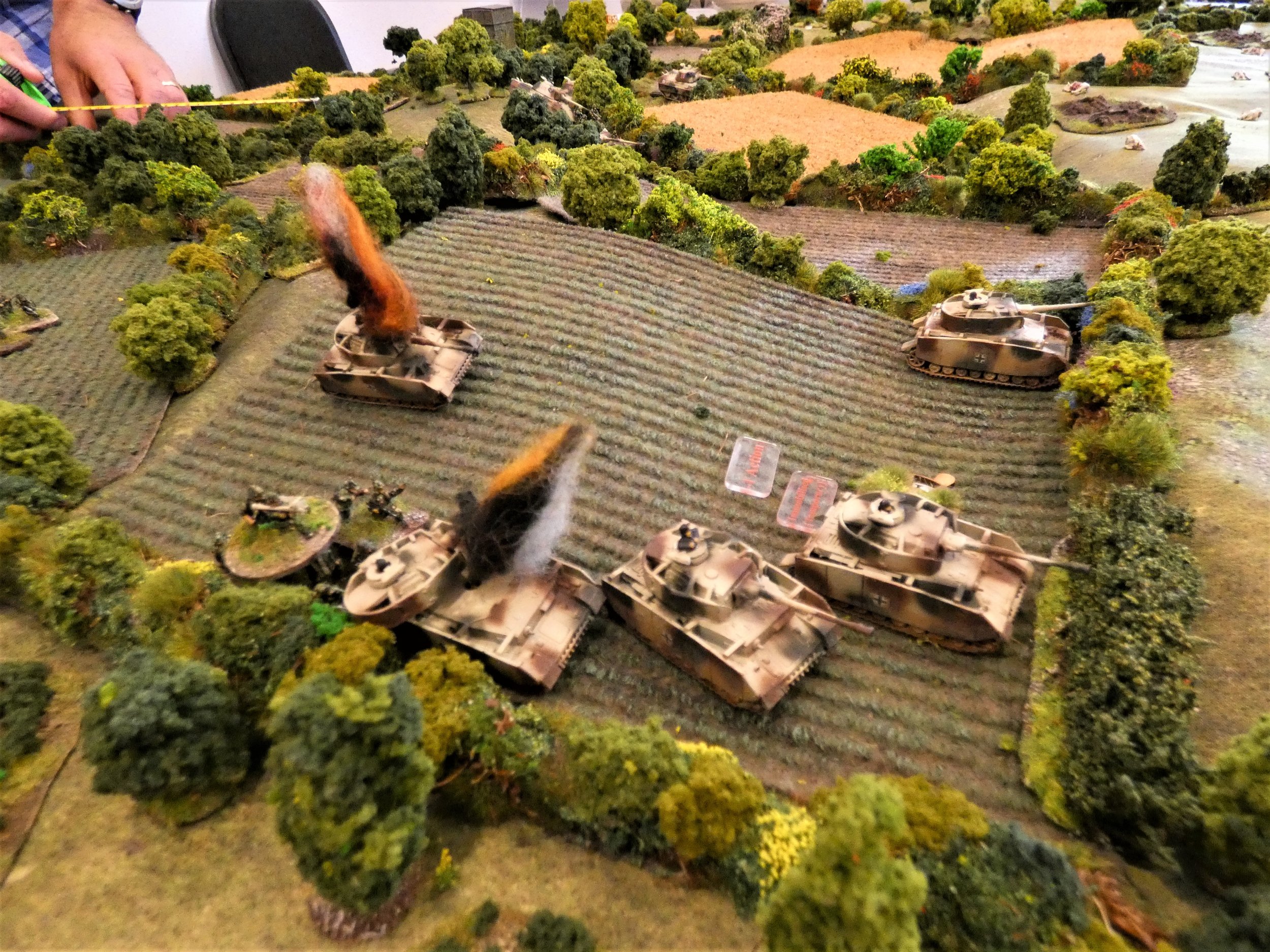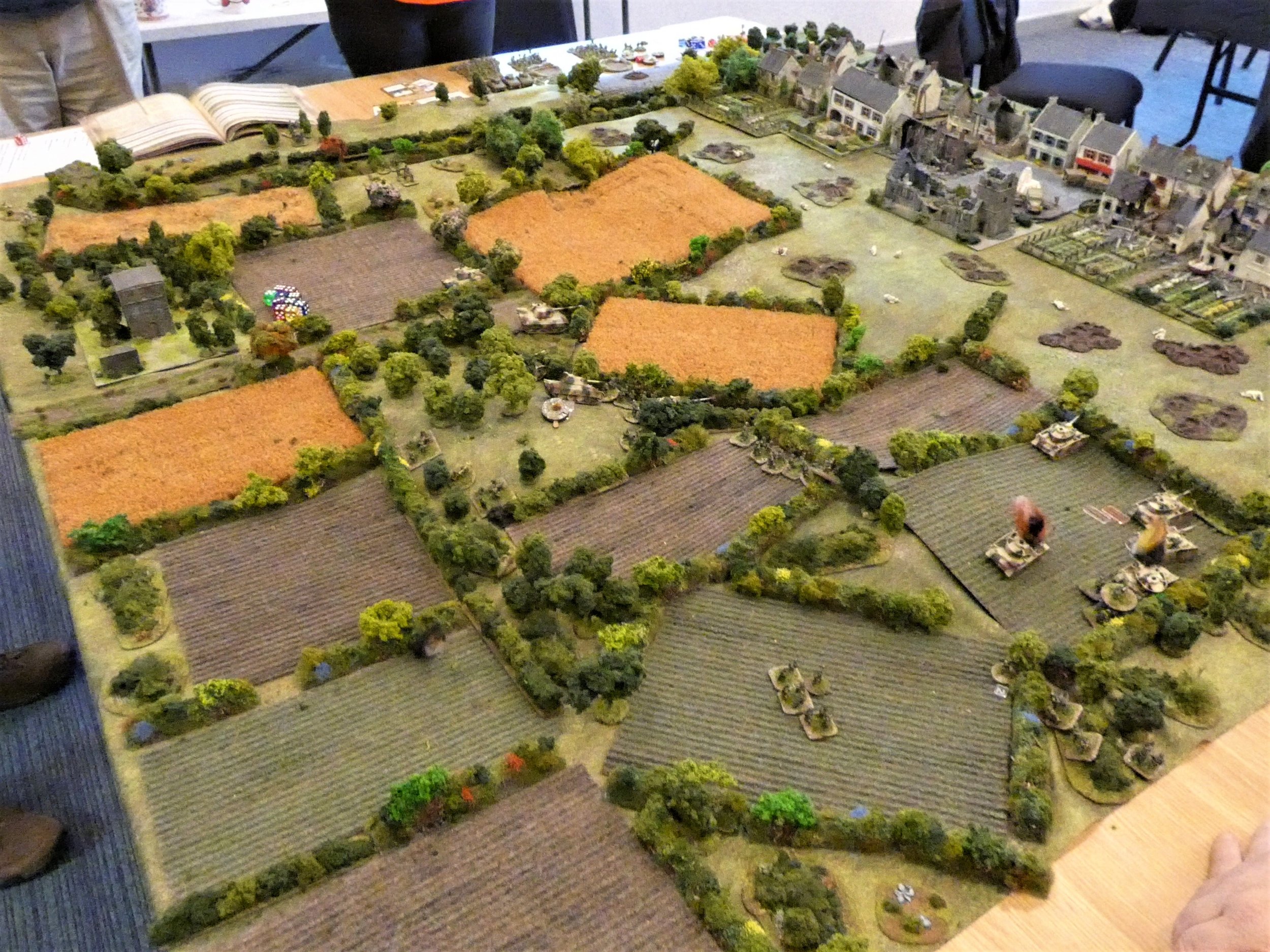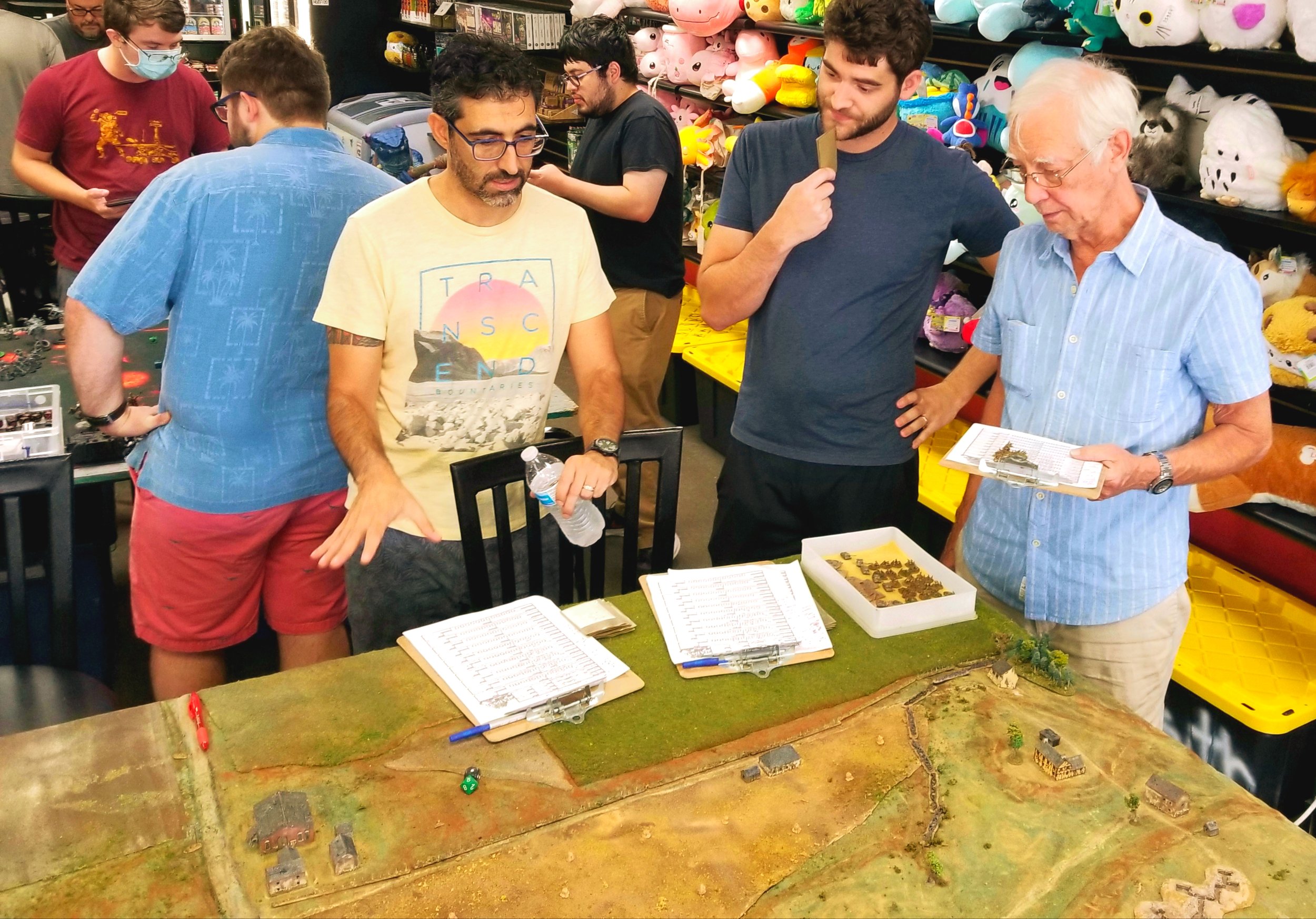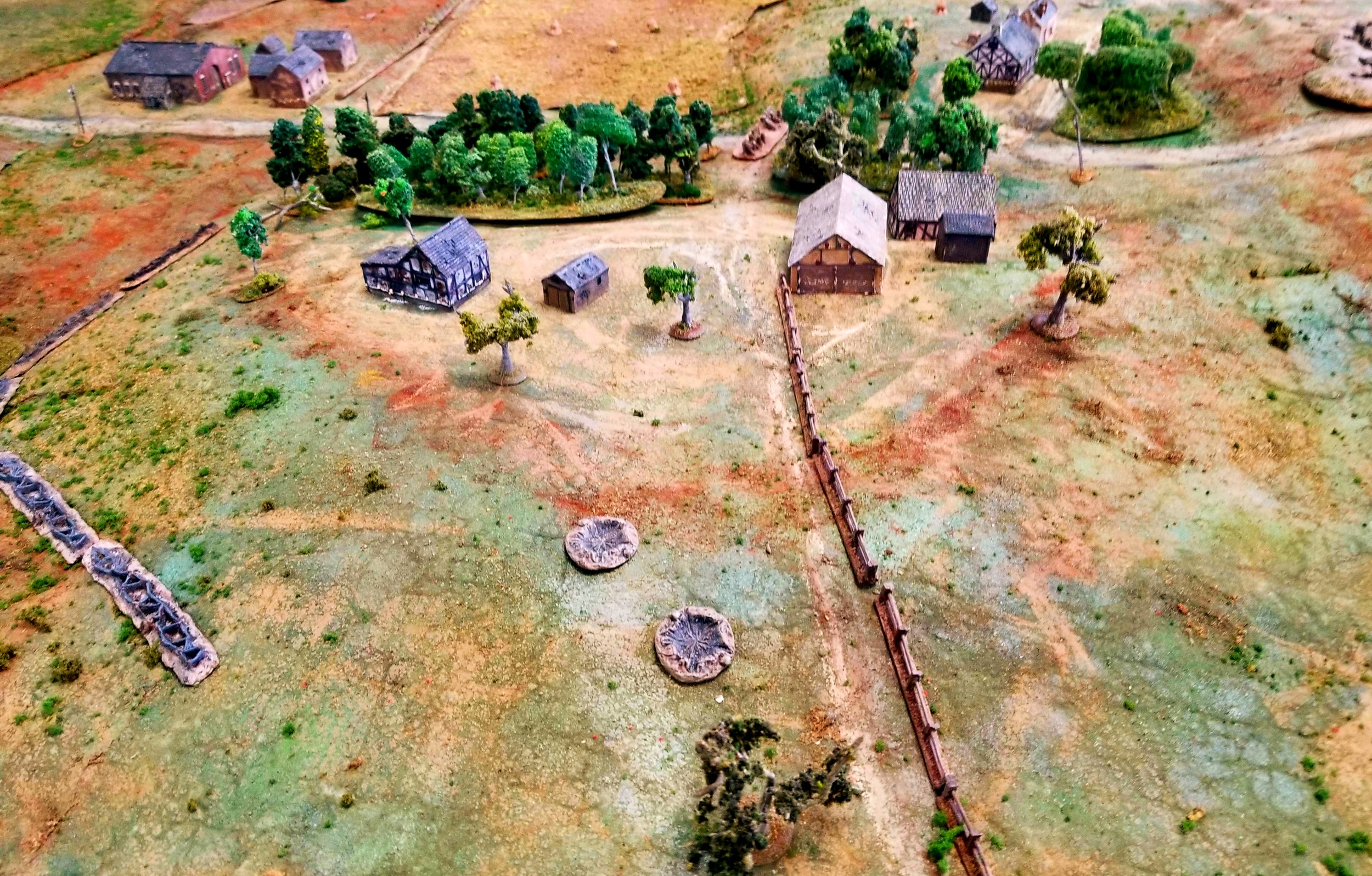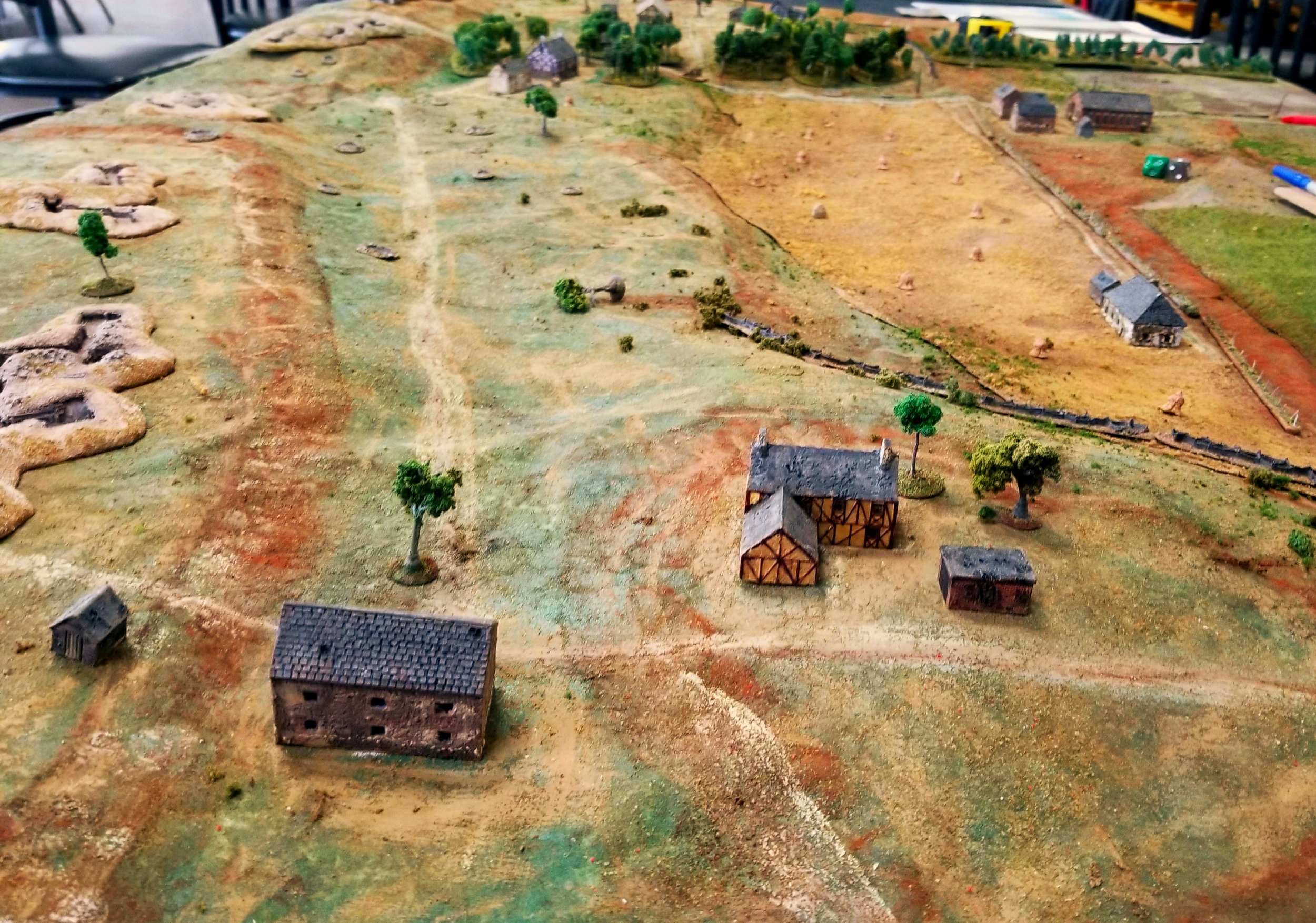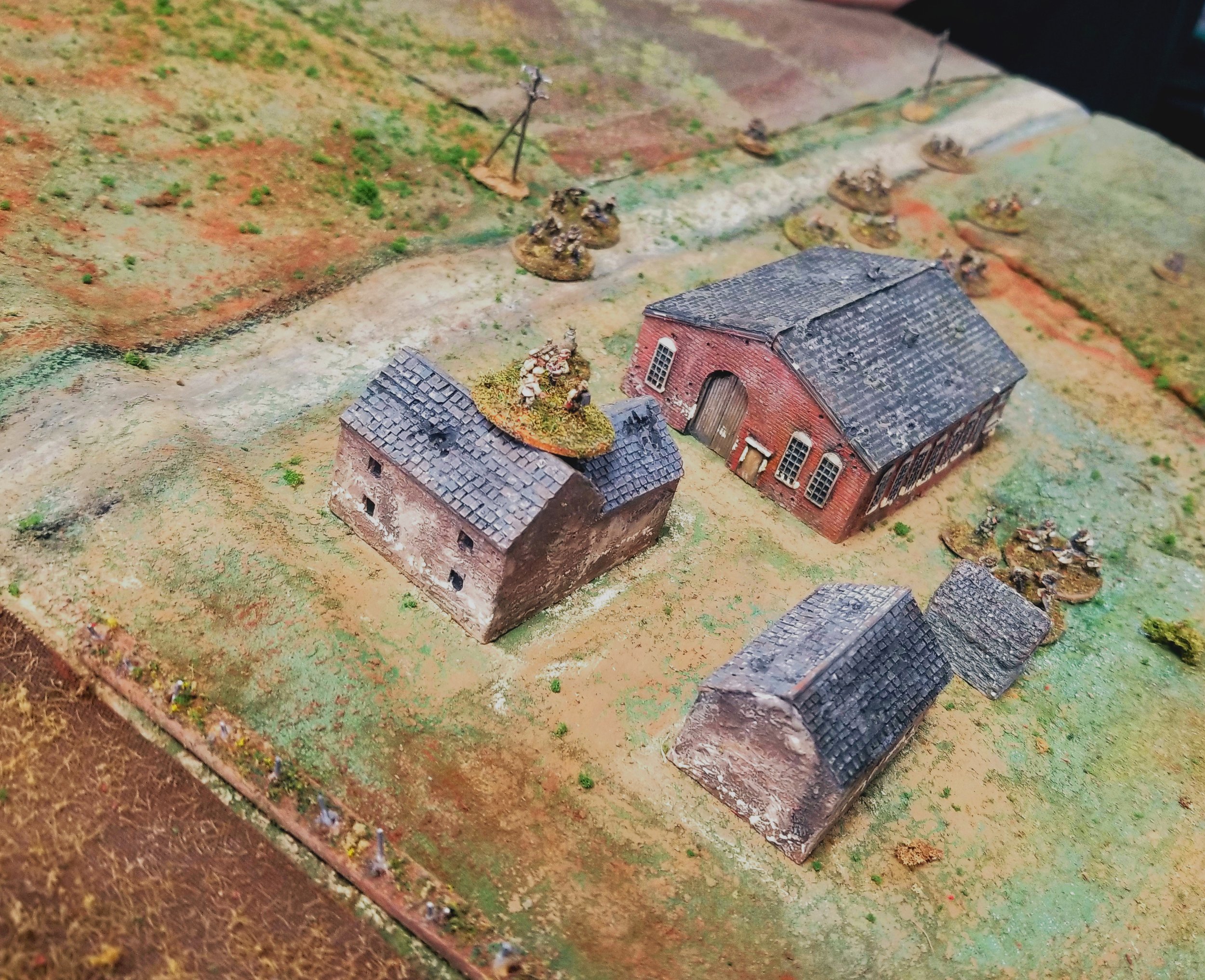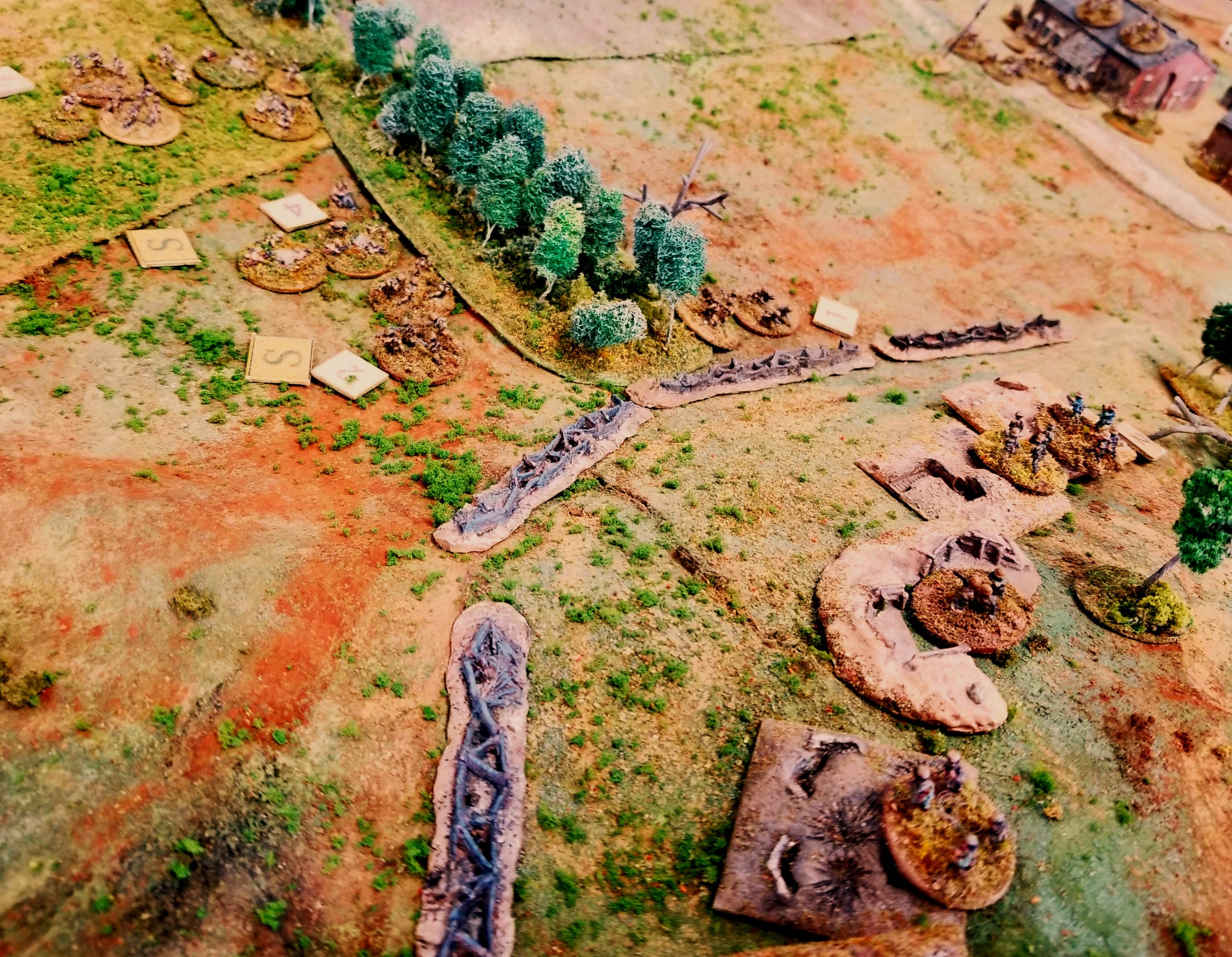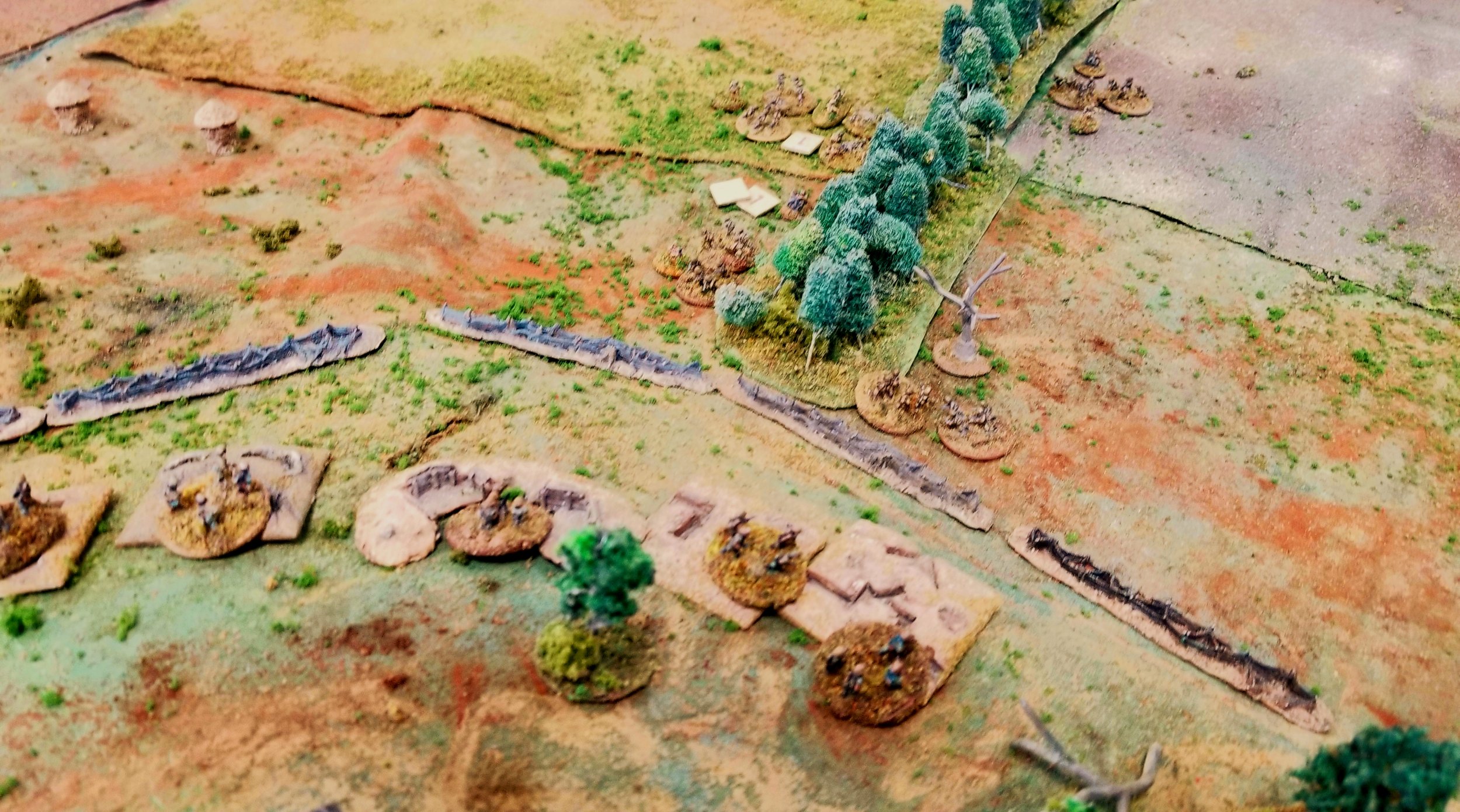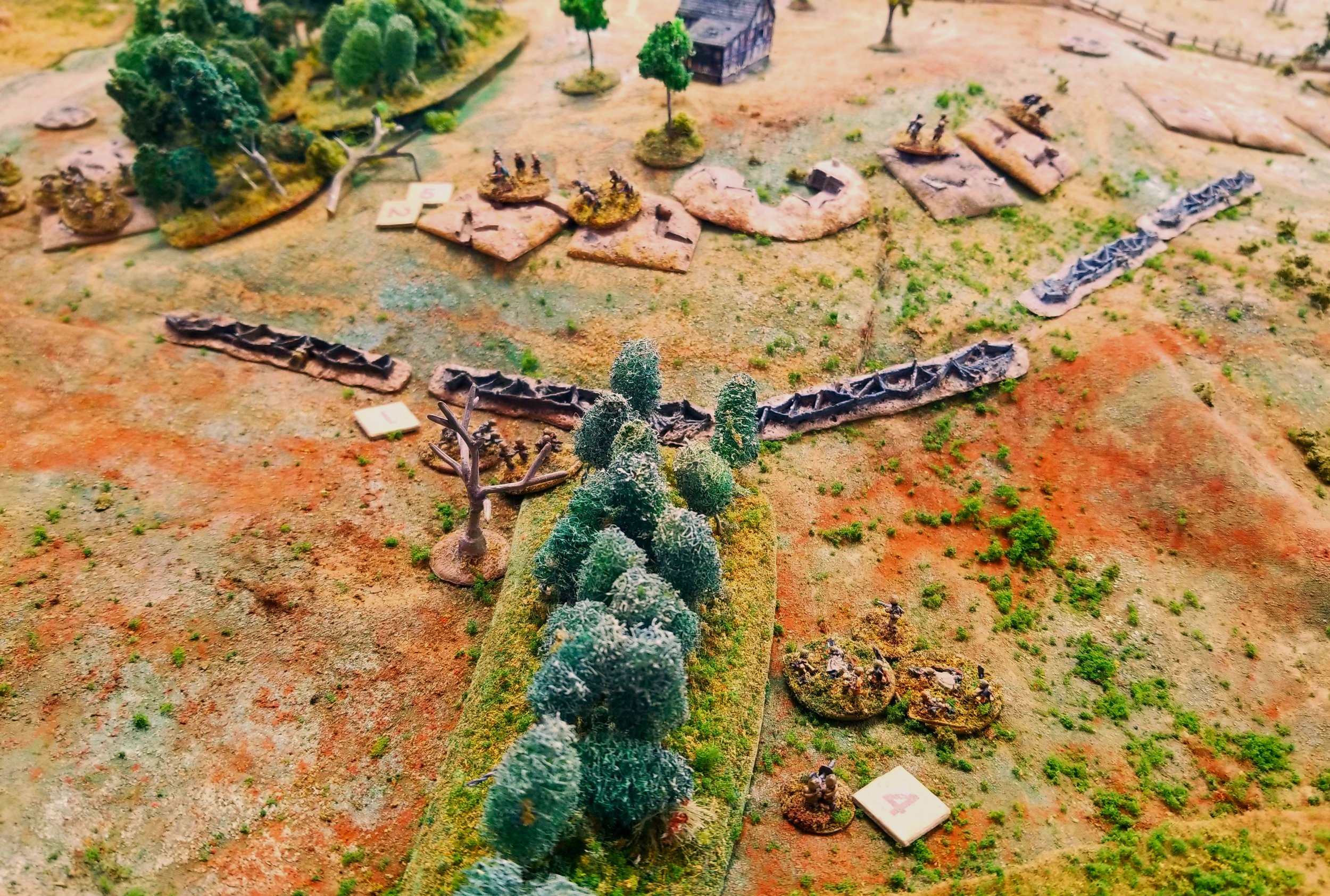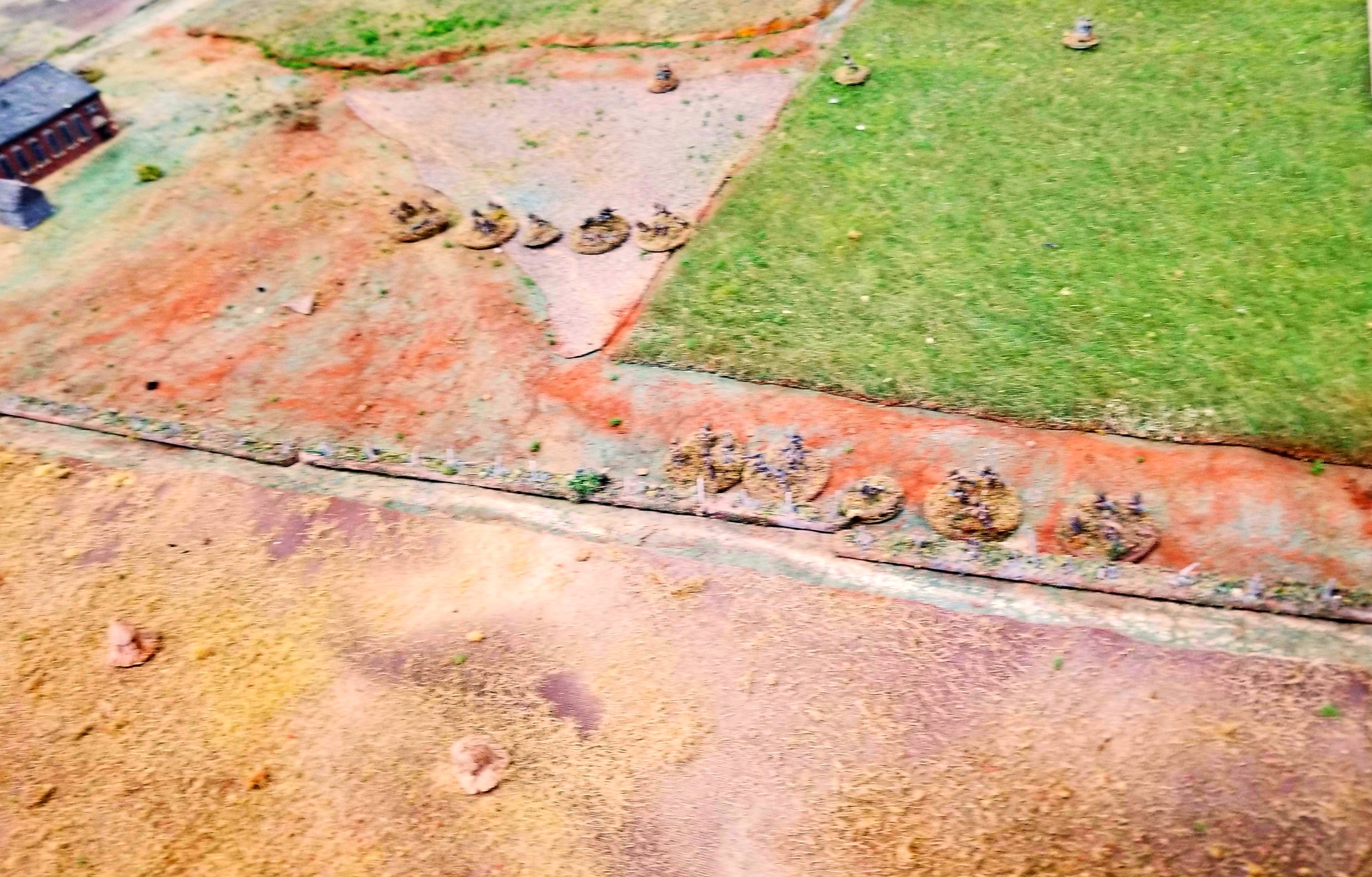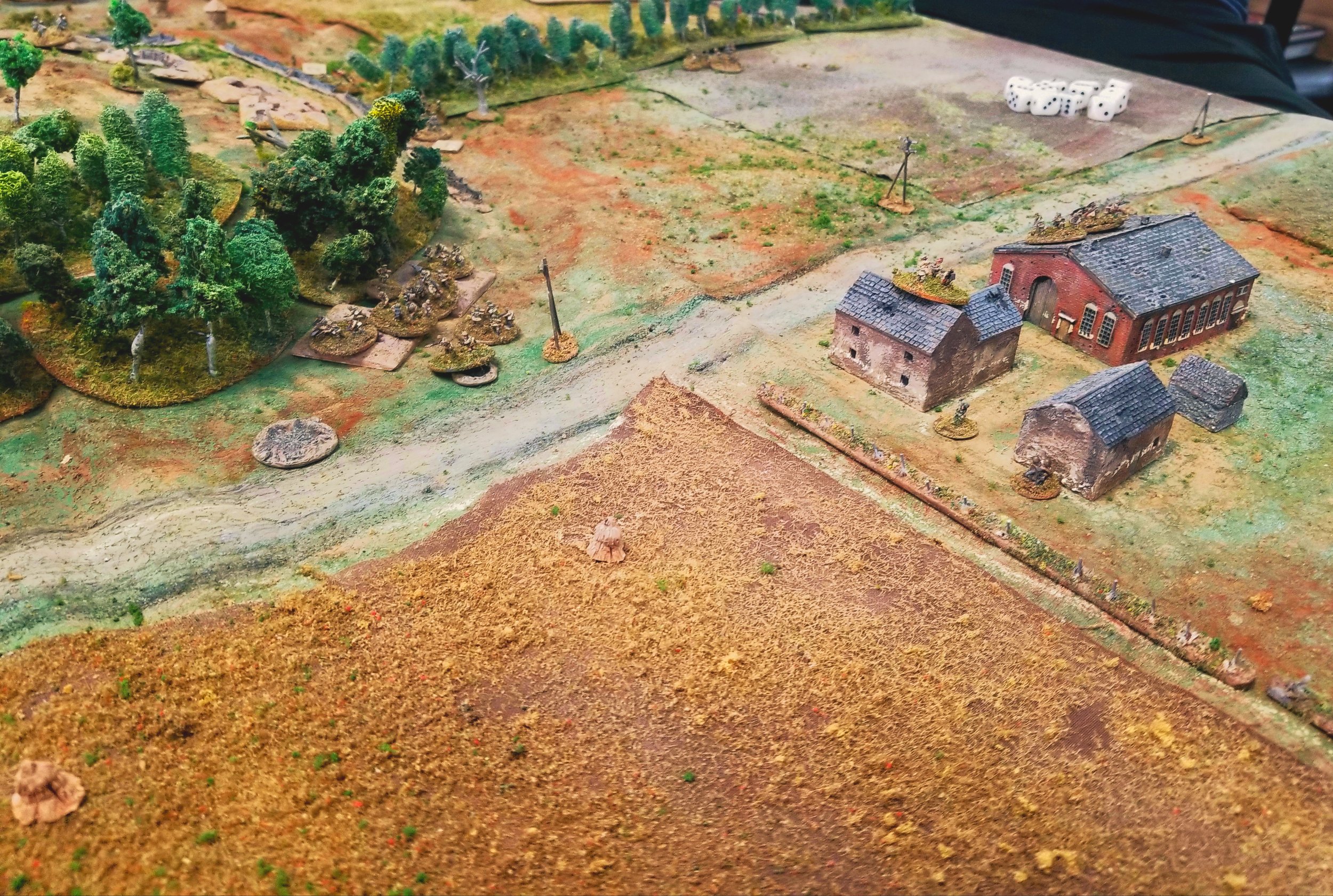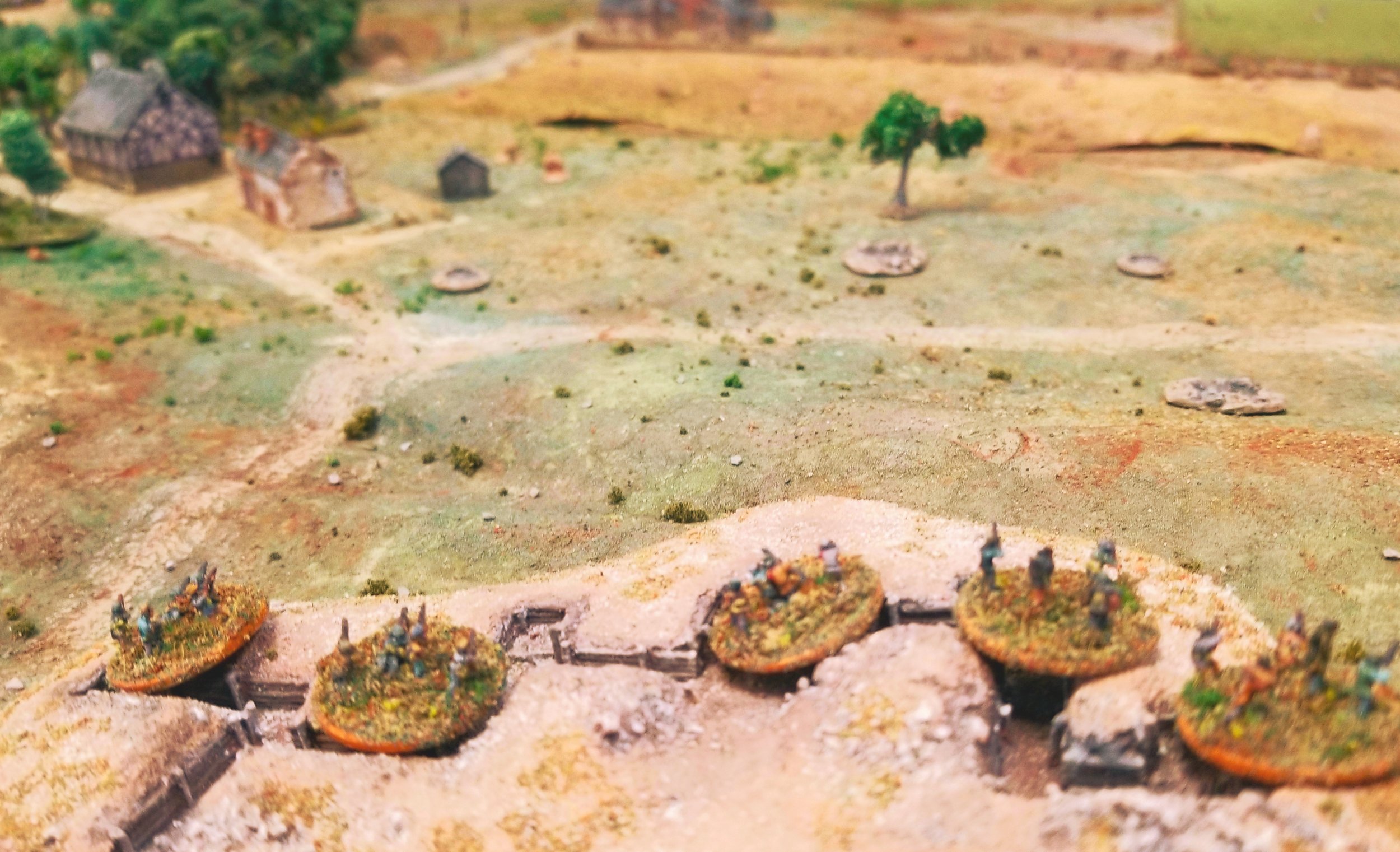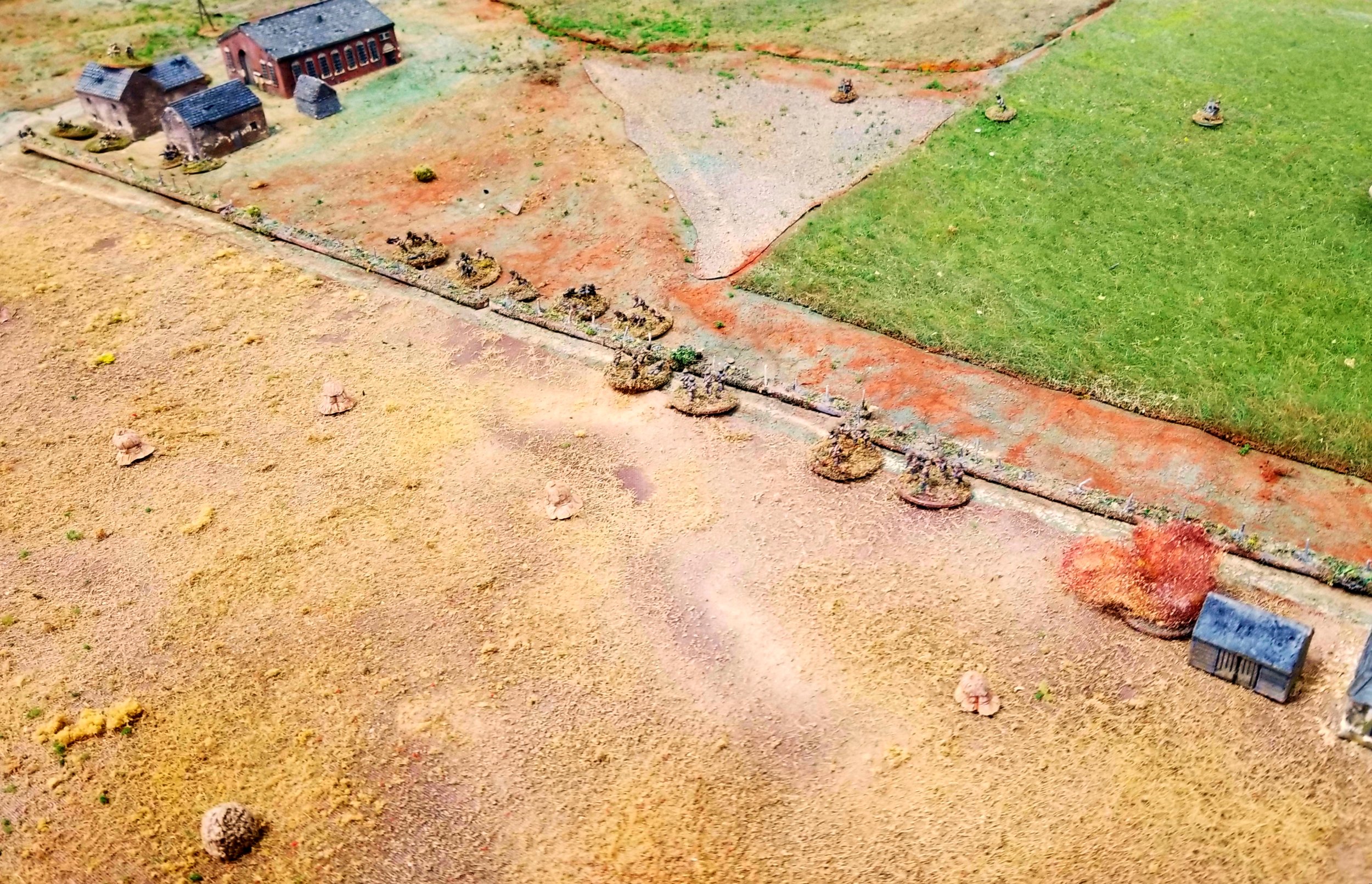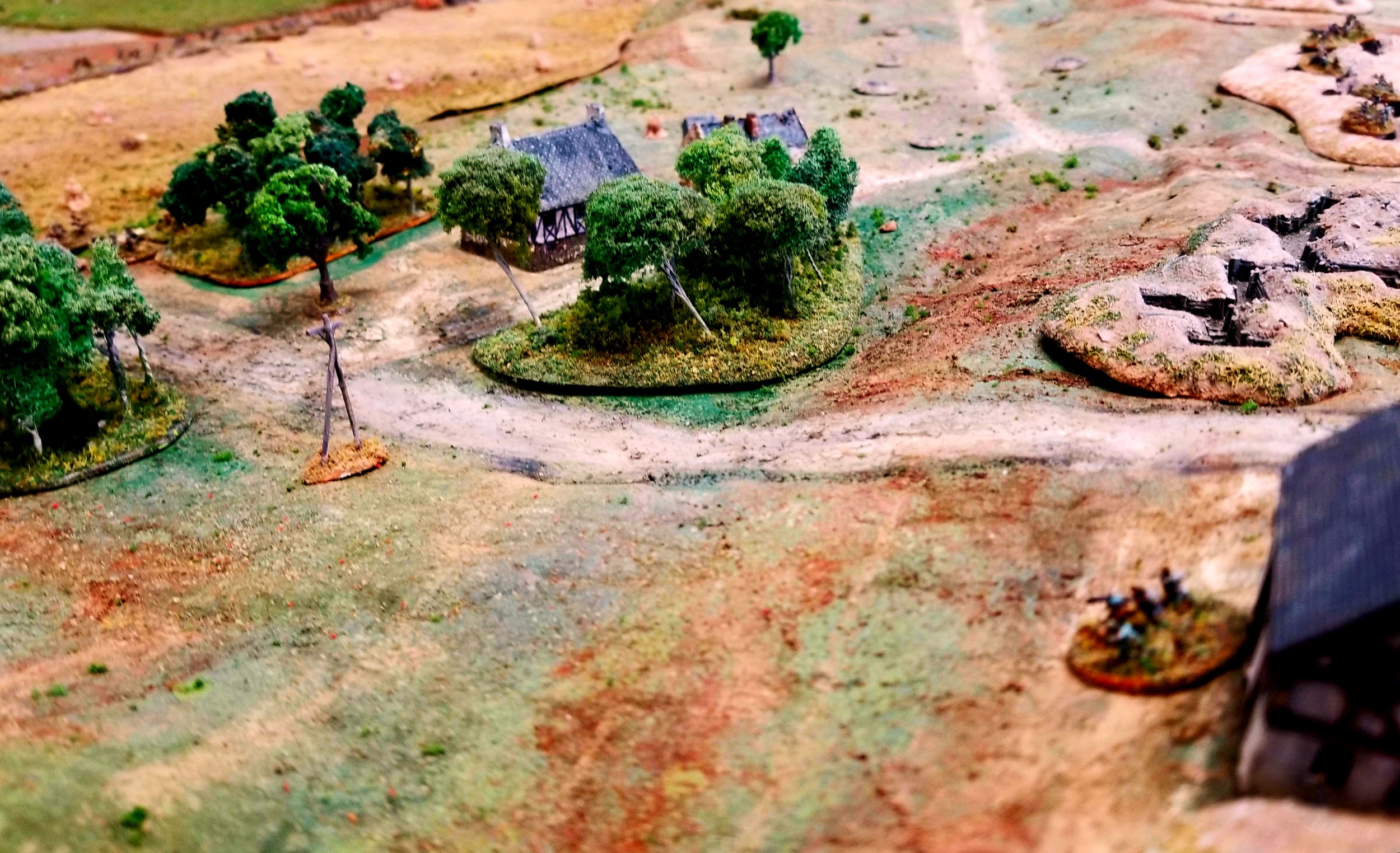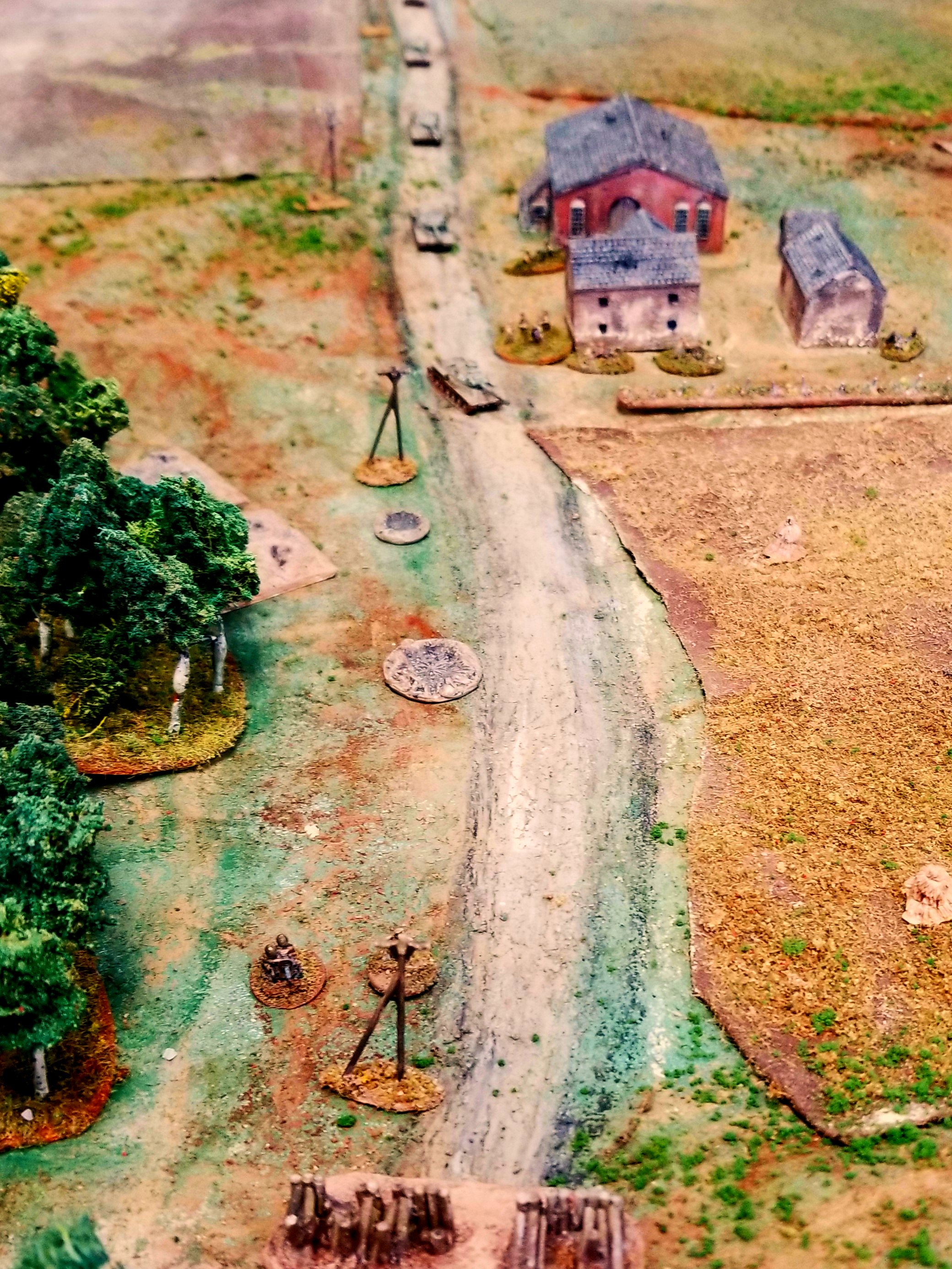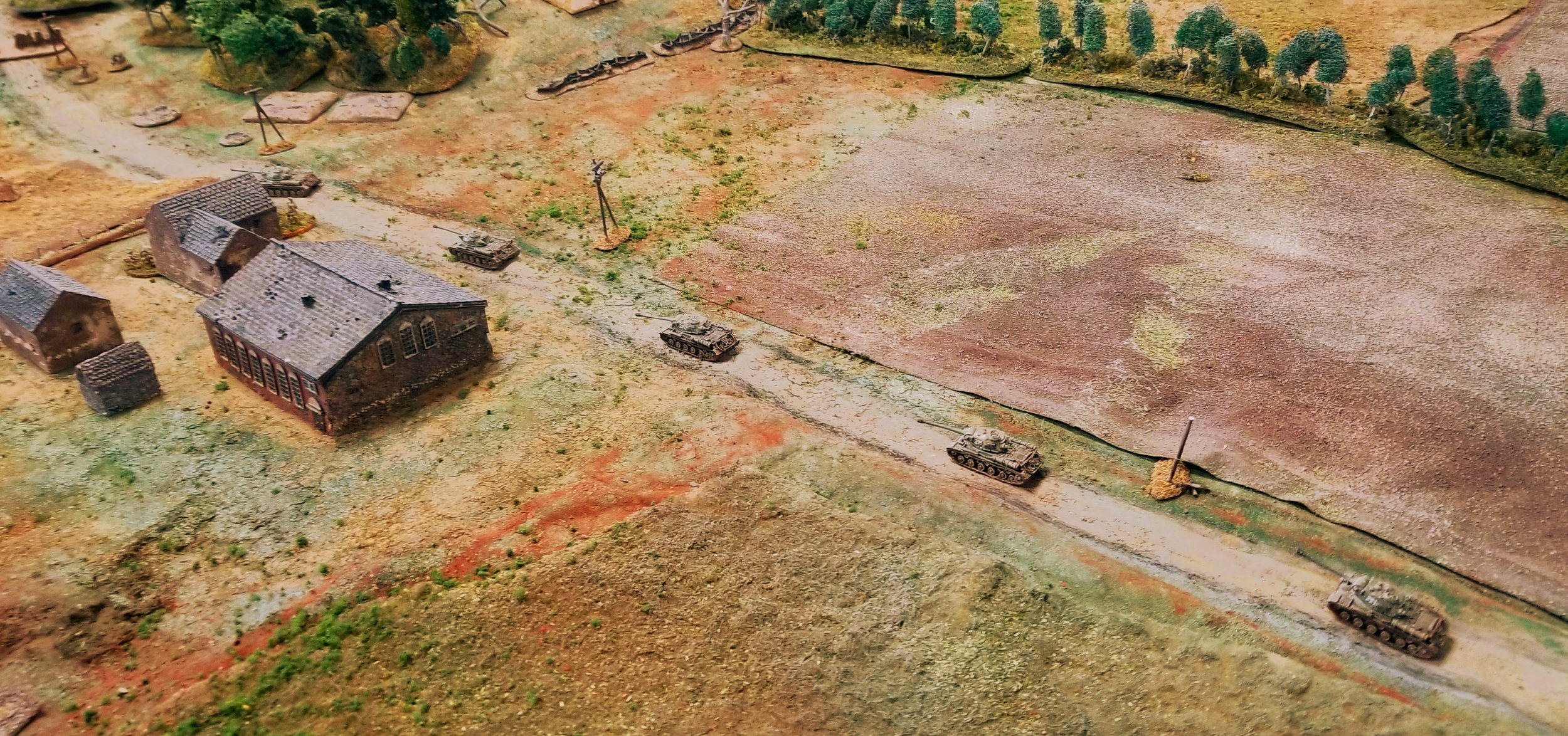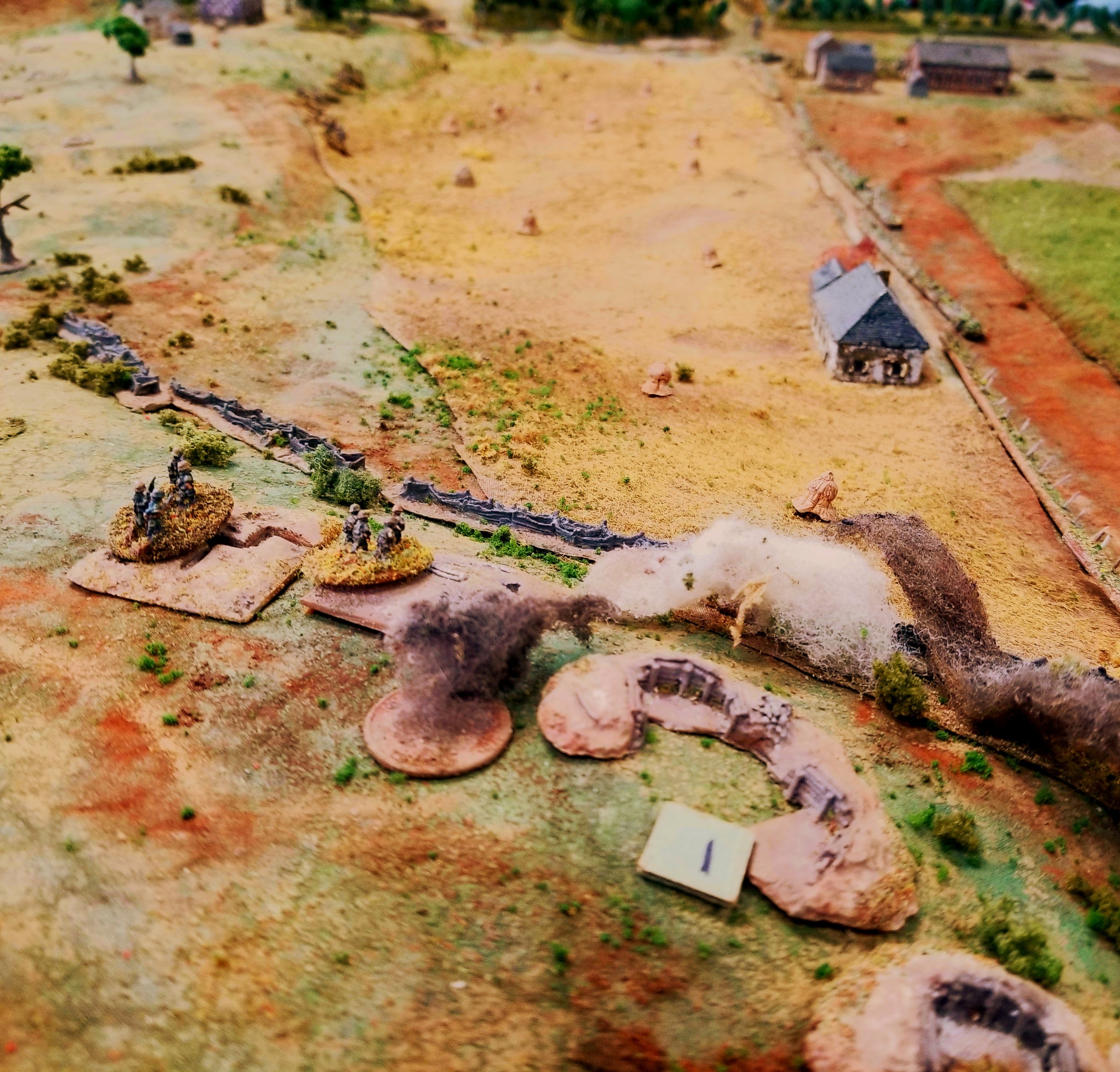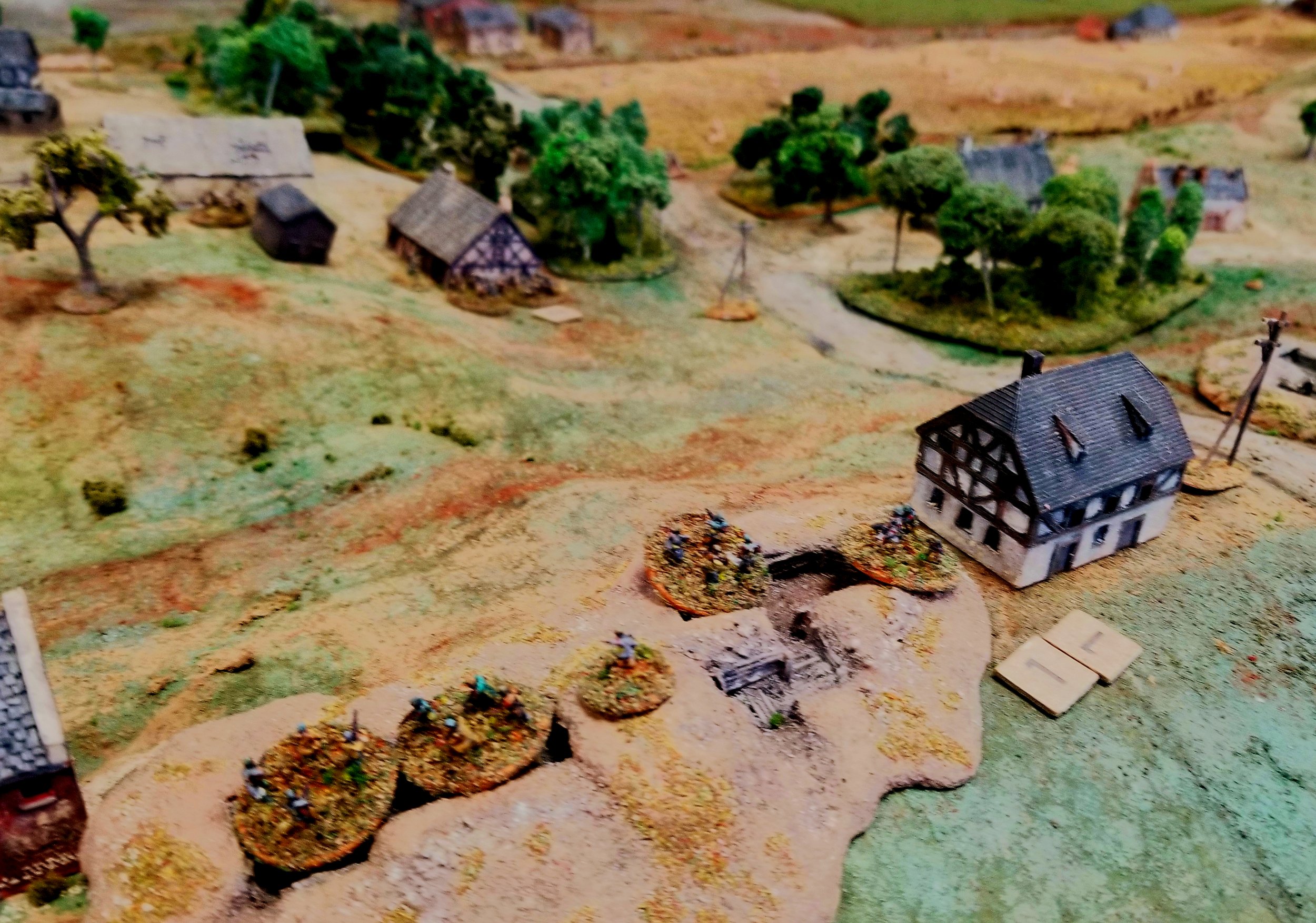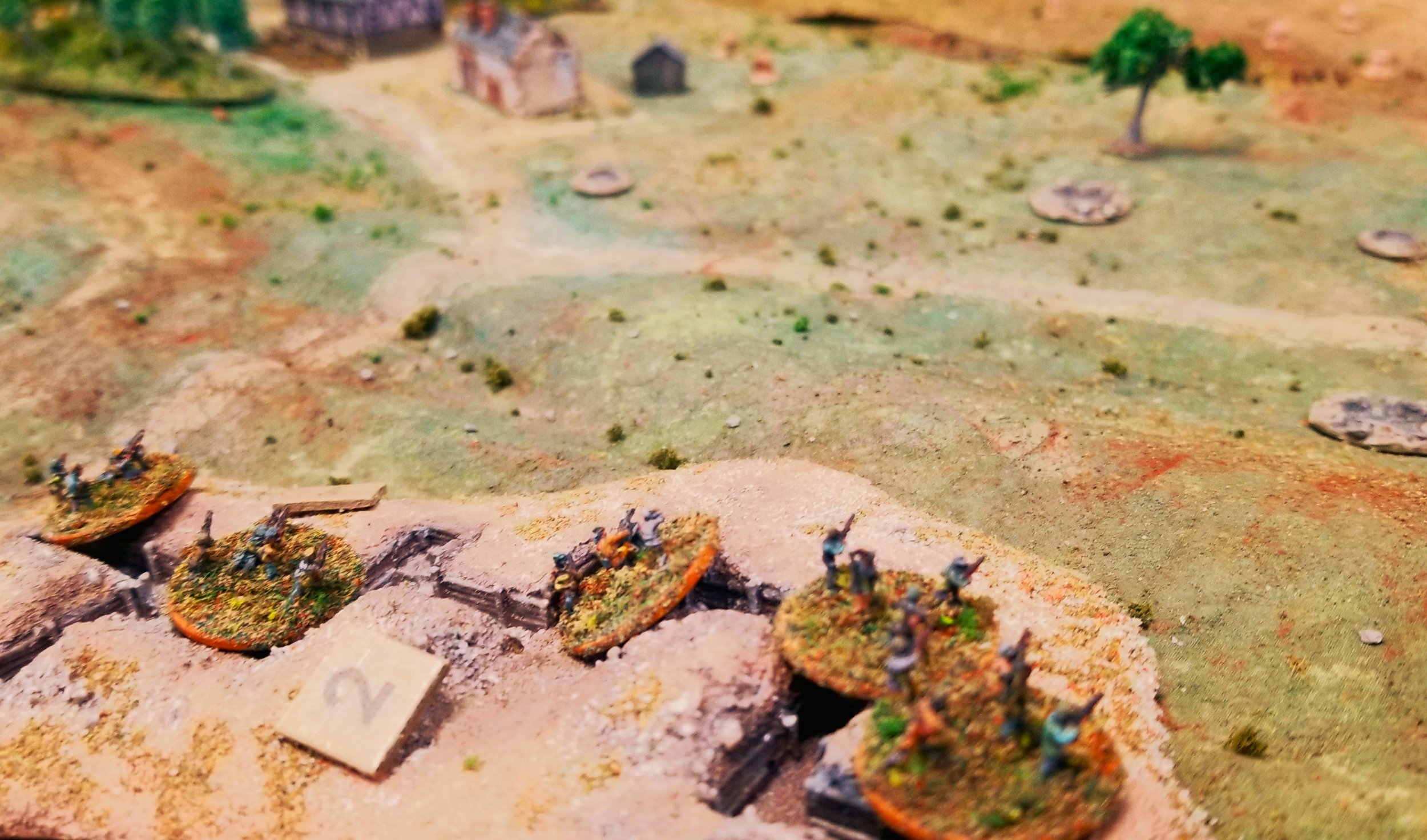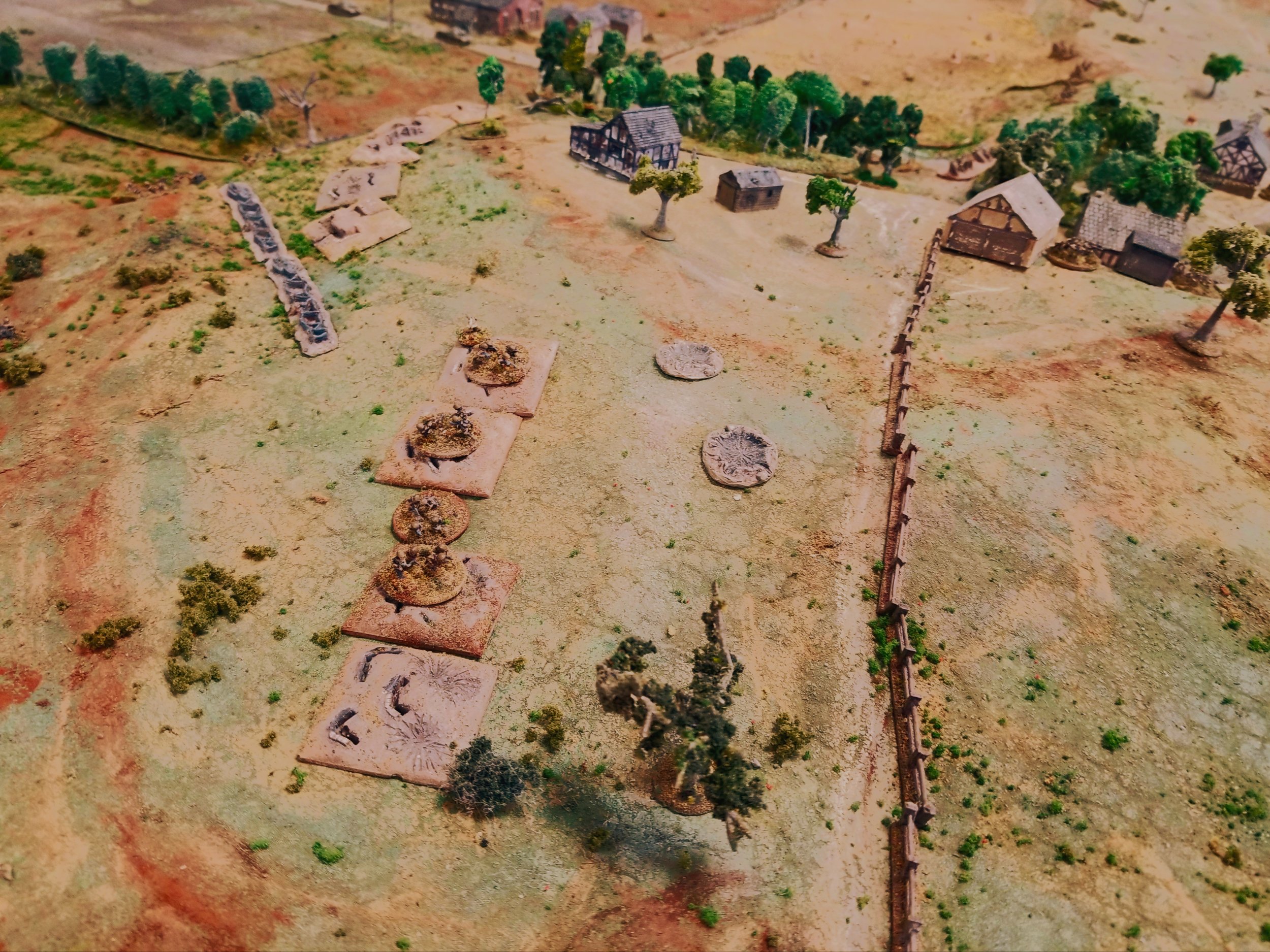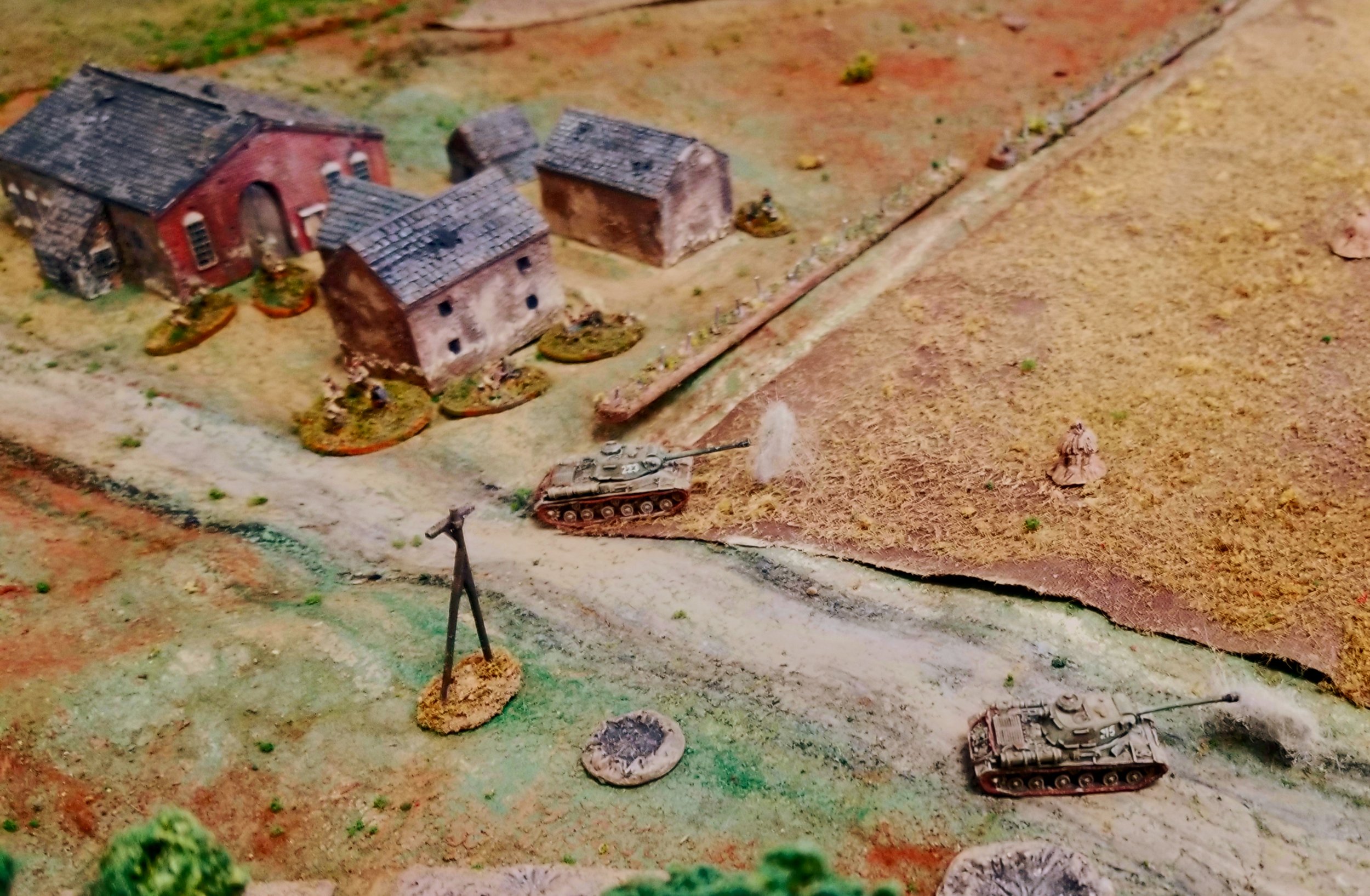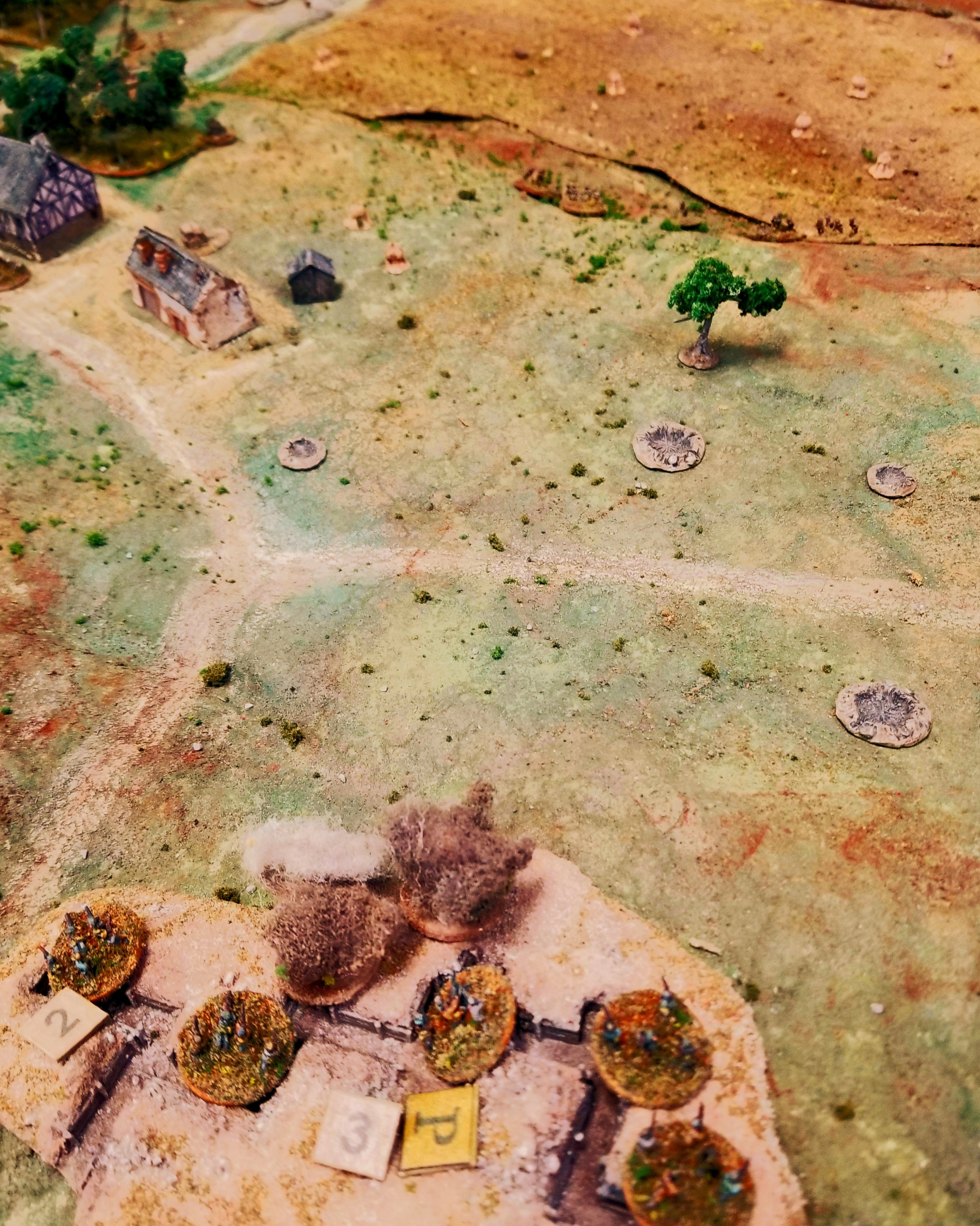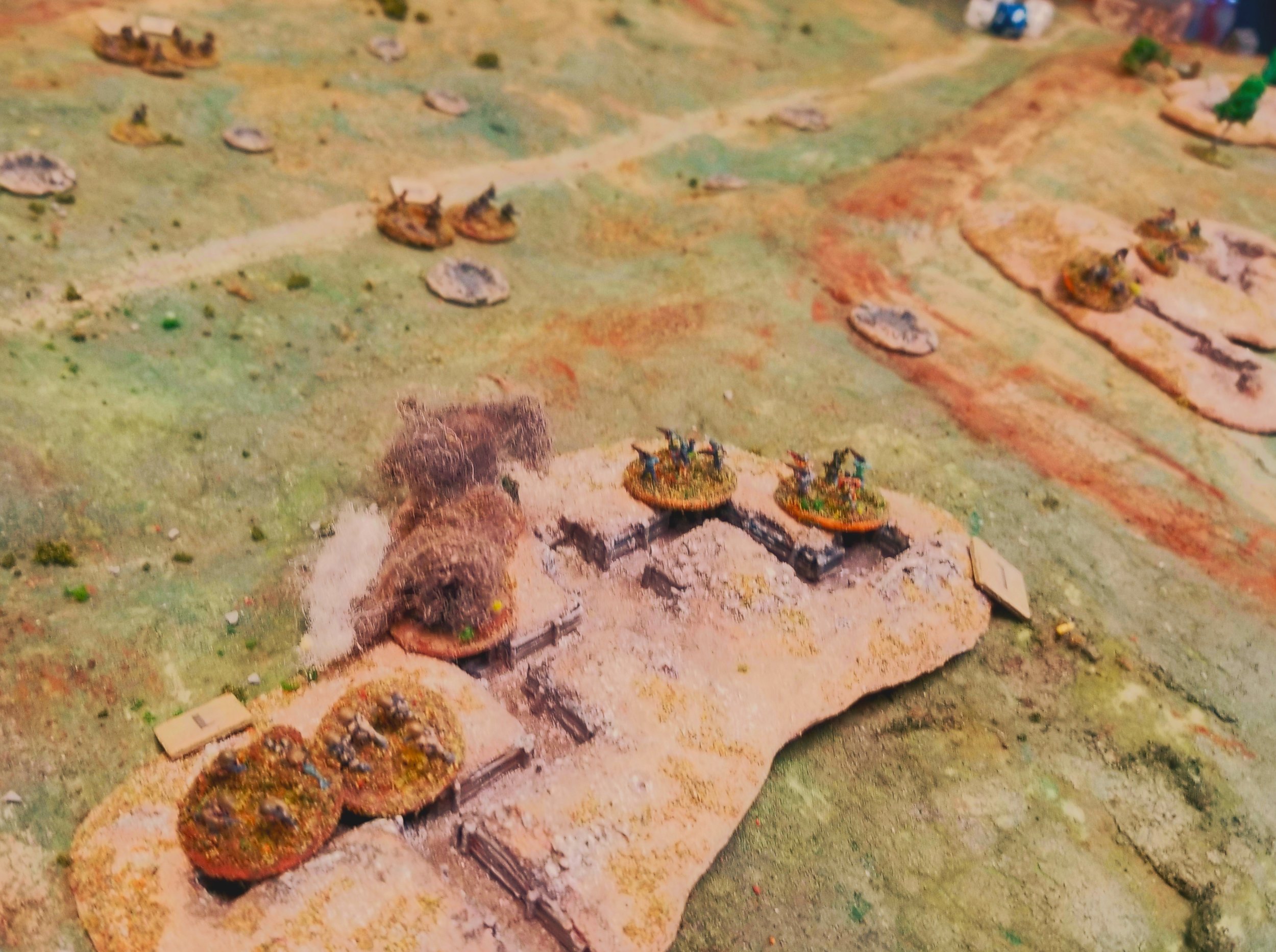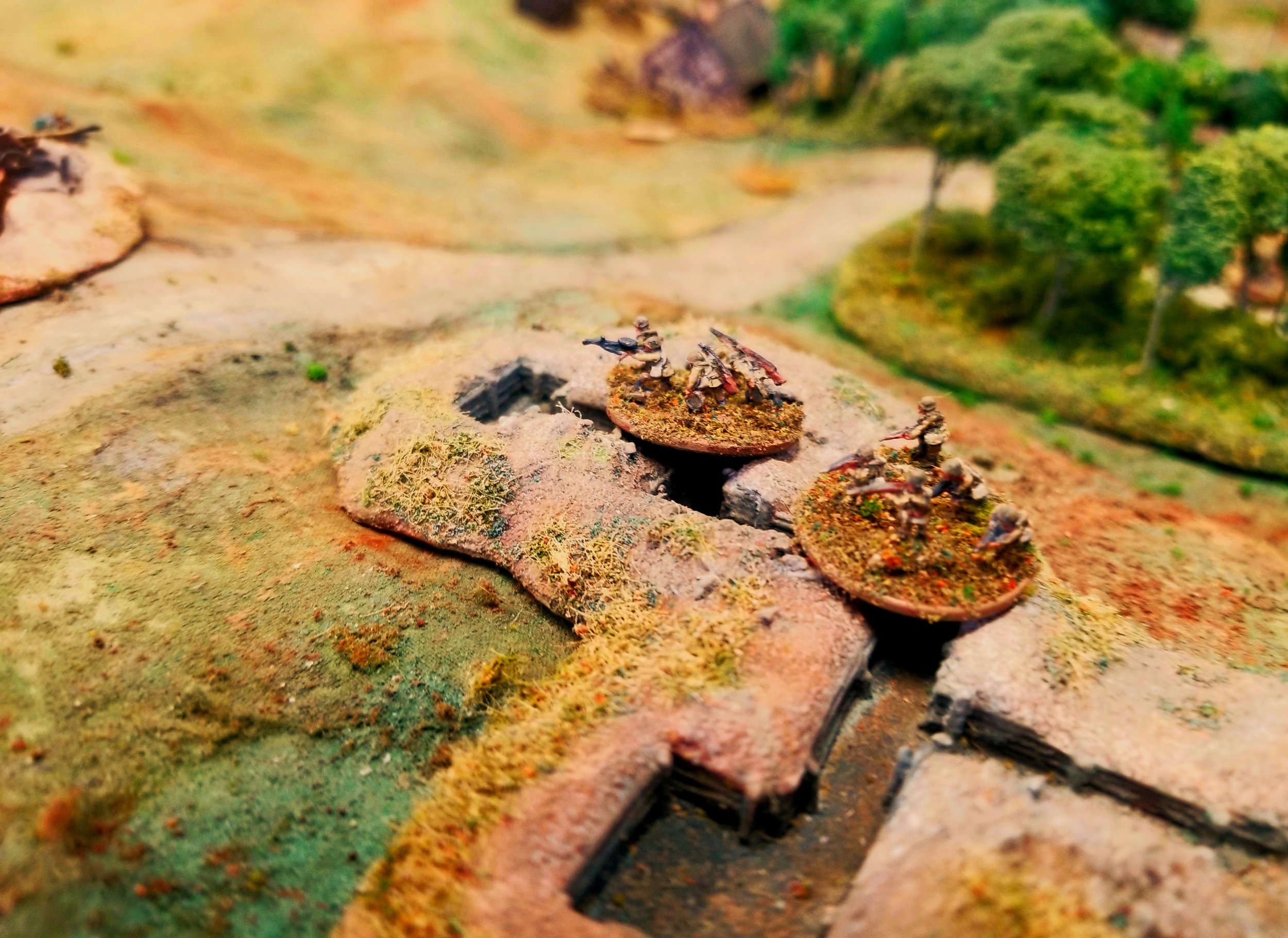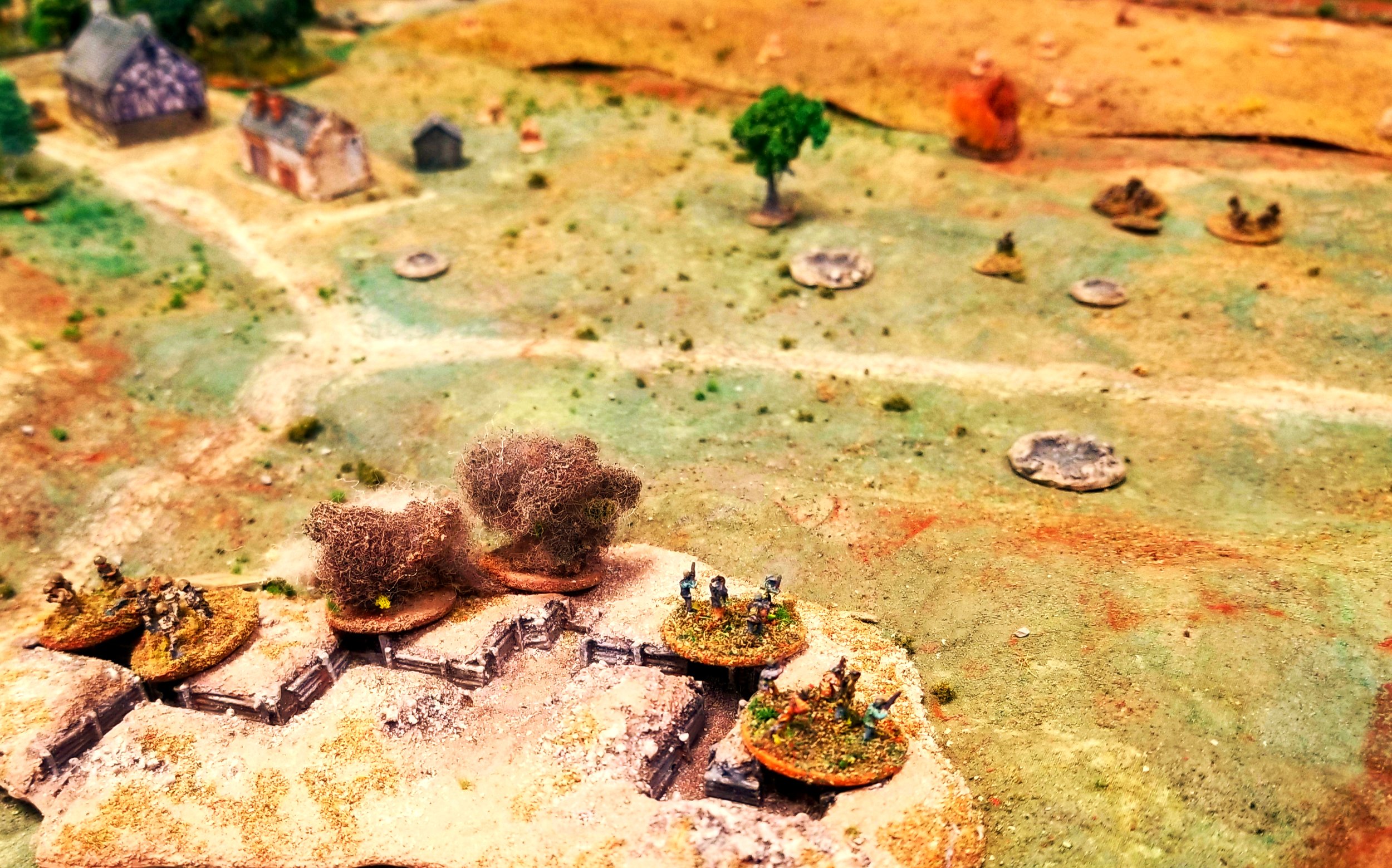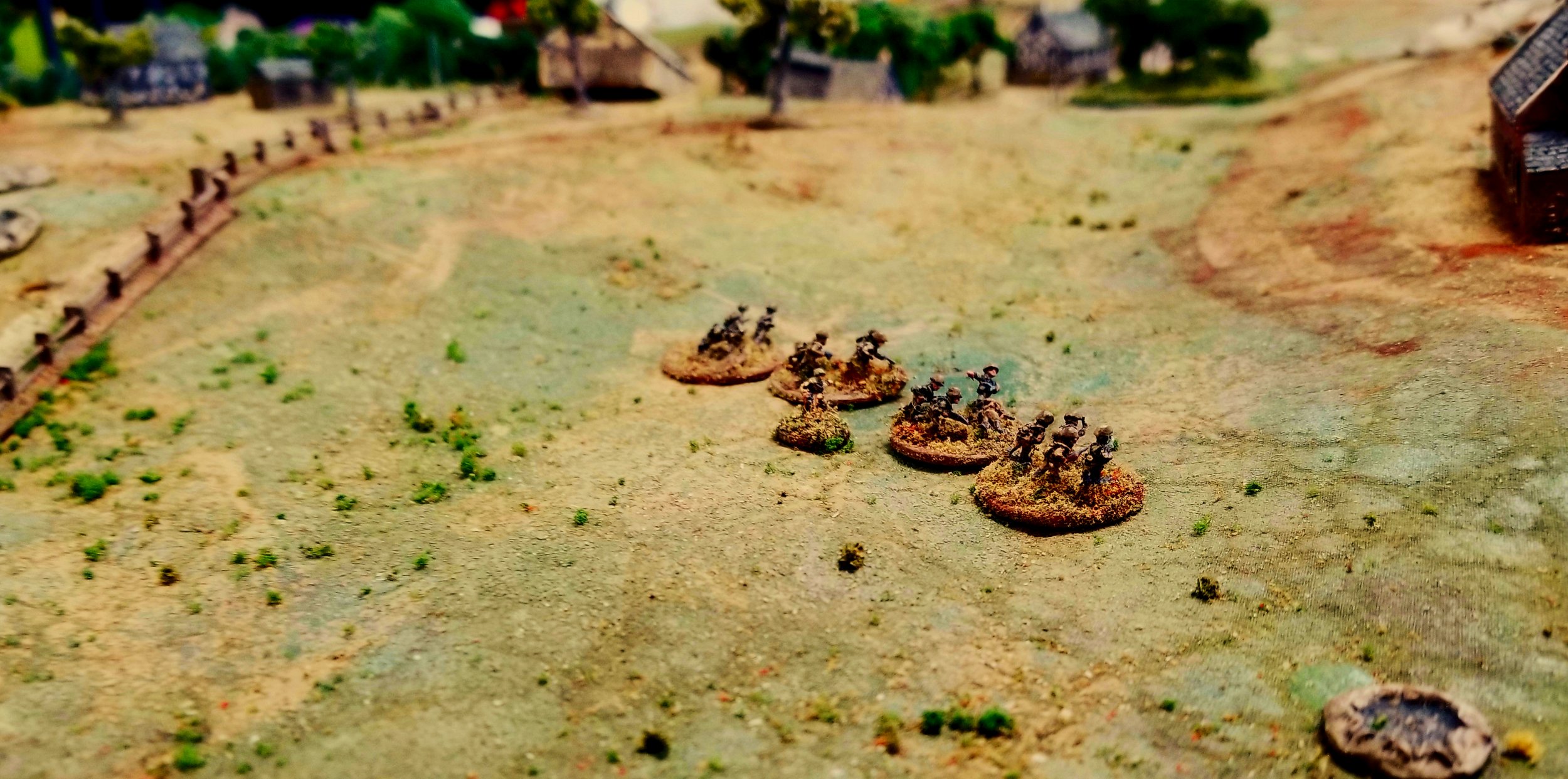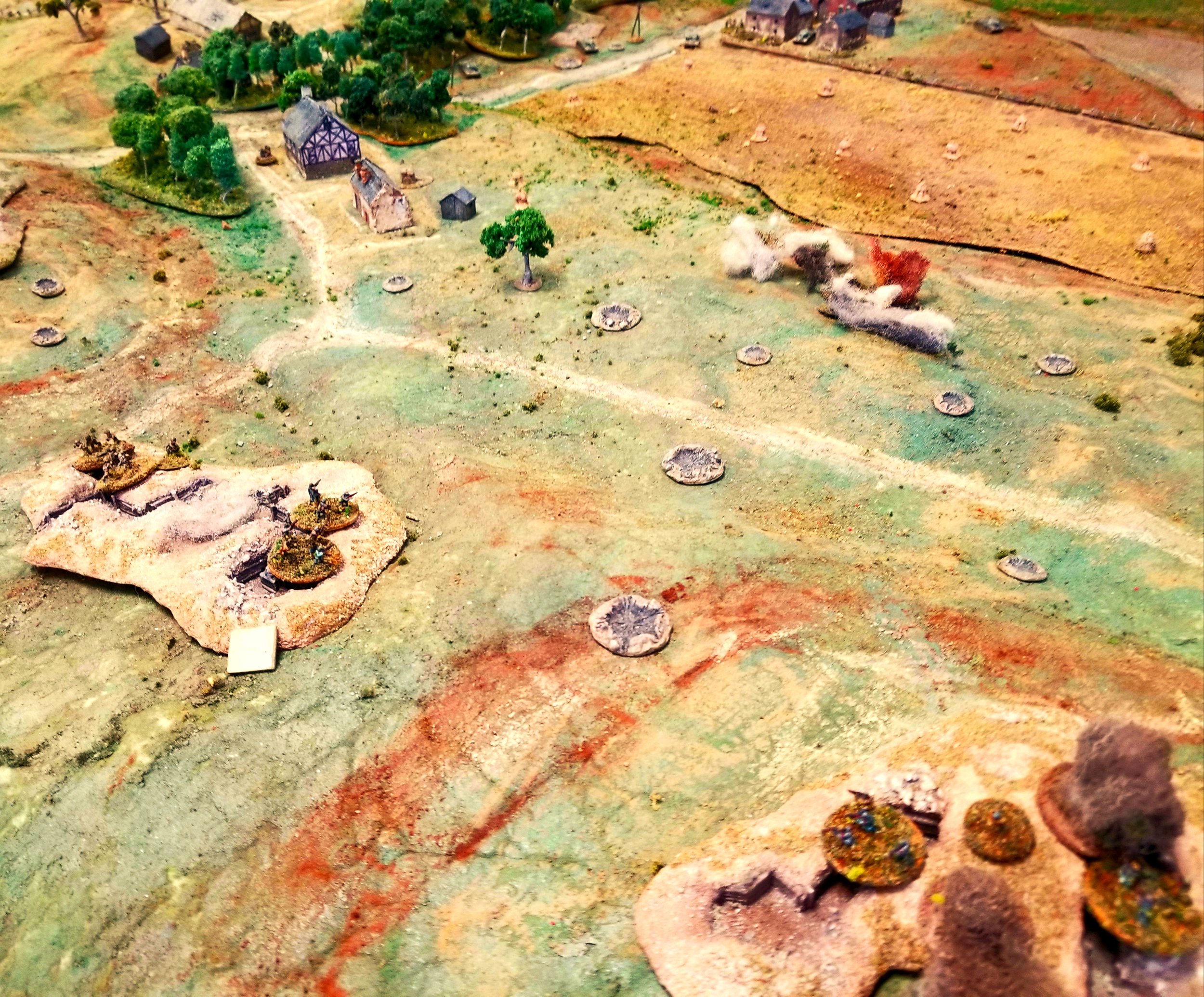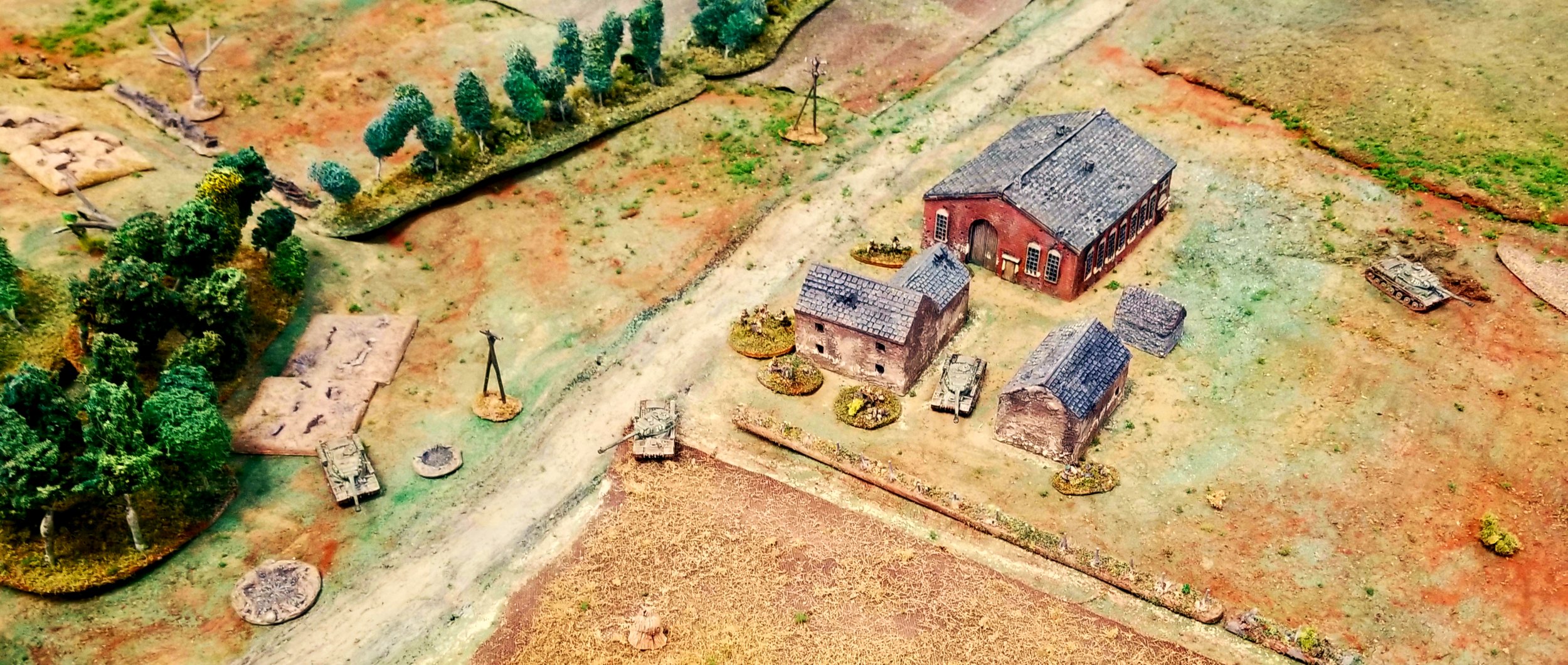
At yesterday's (Saturday 3rd June 2023) Operation Market Larden Lardy Day, several lucky gamers had a chance to play Phil and Jenny's Race to Brussels 15mm I Ain't Been Shot Mum game. Two days prior Andy and myself had been kindly invited down to Phil and Jenny's to give the scenario a final run through before its public airing in Evesham.
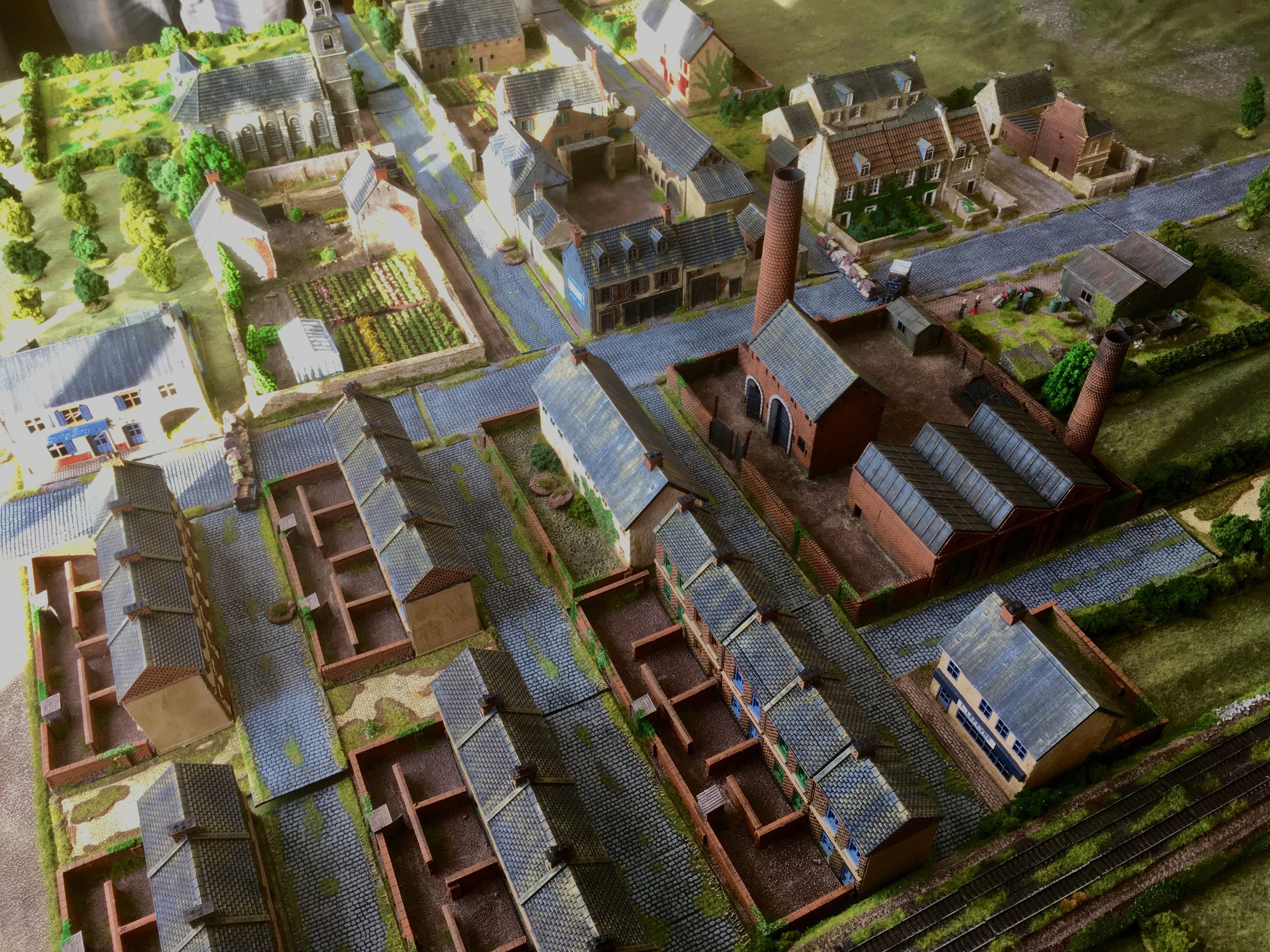
As always the table was an absolute delight to behold.
The scenario is based on the race to liberate Brussels and set on September 2nd as the Guards Division attempts to seize the crossings over the Brussels-Charleroi Canal at Halle, south of the Belgium capital. Their orders were to not get embroiled in fighting in the town but push on rapidly capturing the bridges and get across the canal.
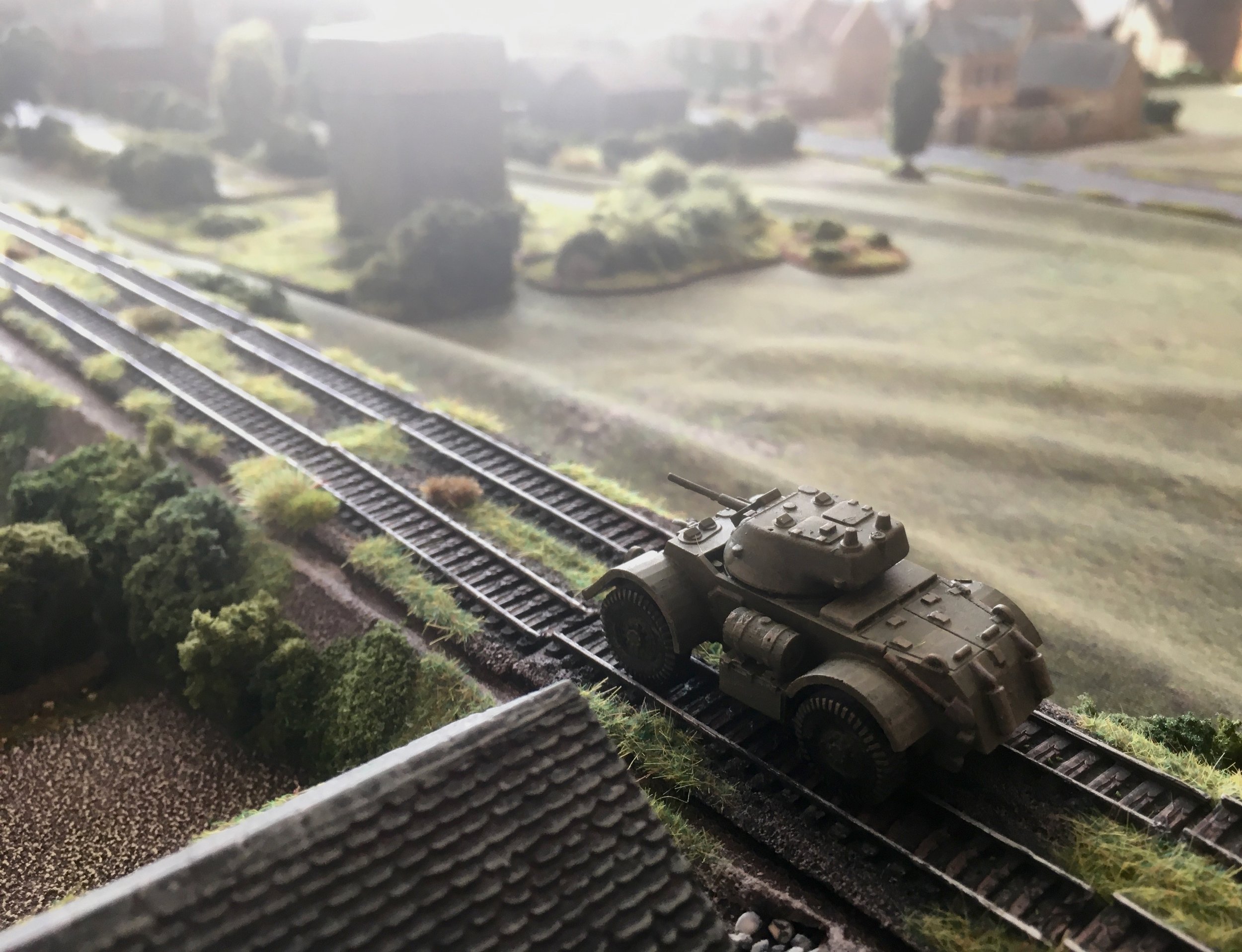
The Staghounds of the 2nd Household Cavalry advance down the railway...
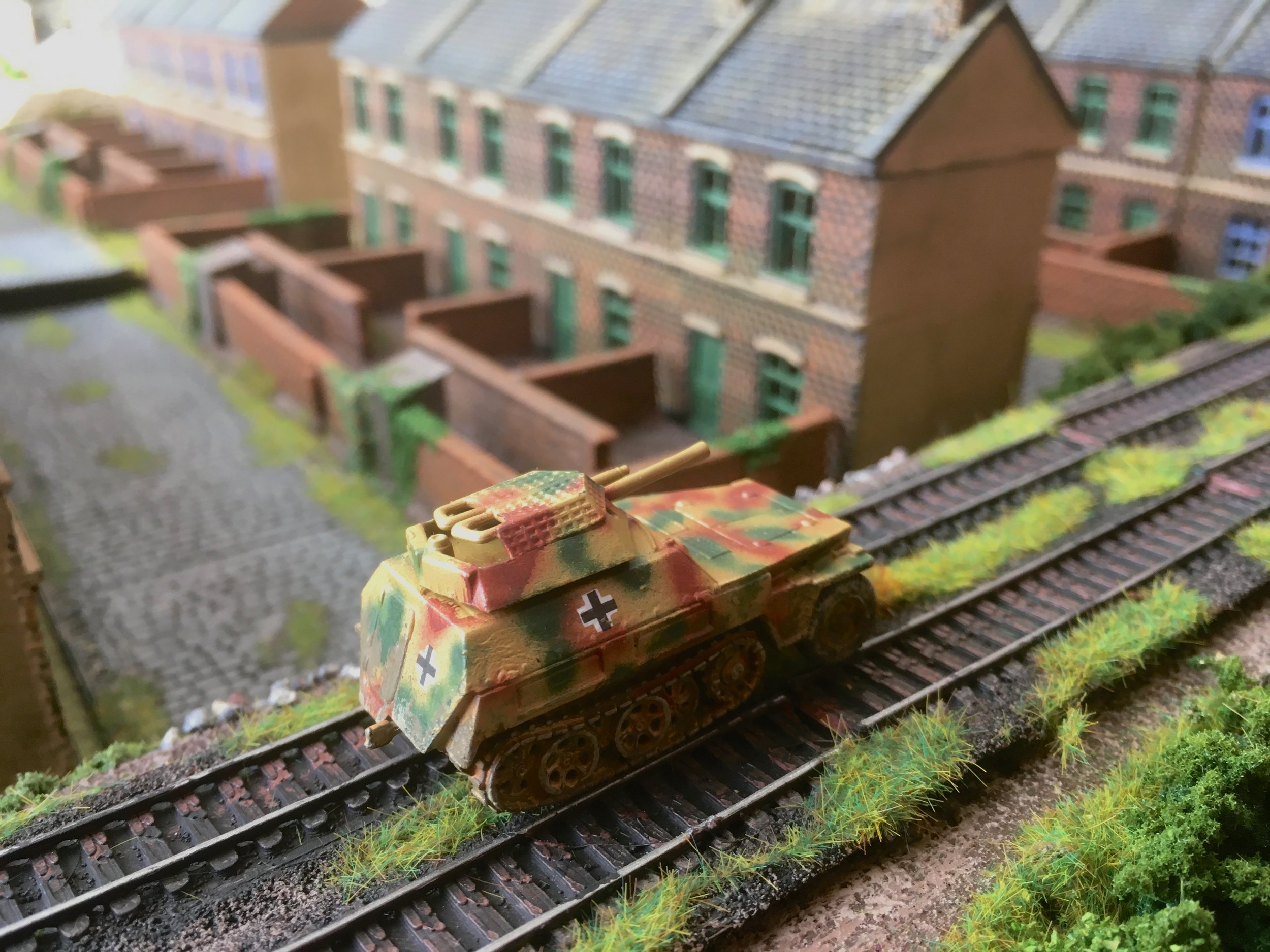
...only to be confronted by an Sd.Kfz.250/9 with a 20mm autocannon!
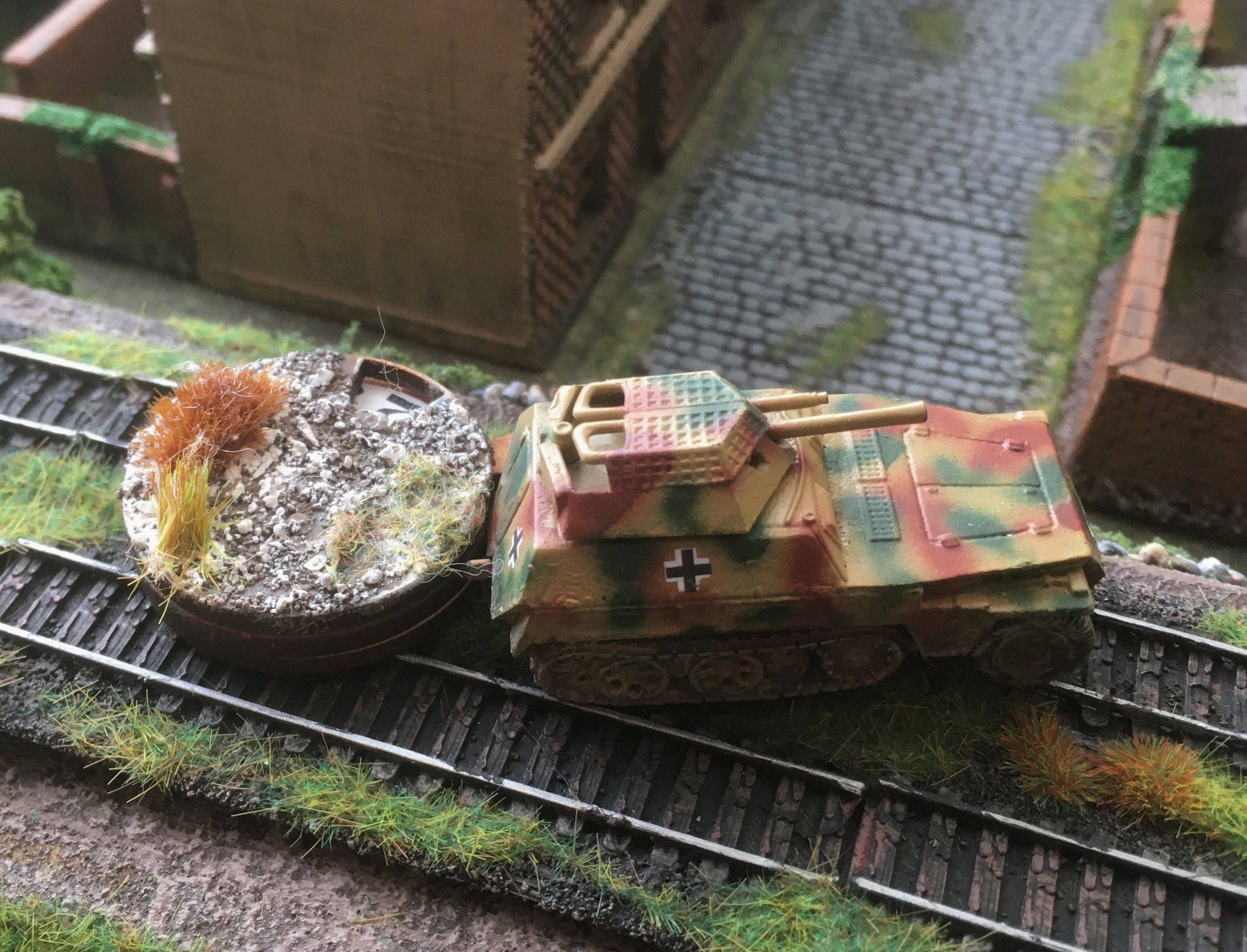
The Household Cavalry got its shots in first though, the first round inflicting Shock on the German half-track...
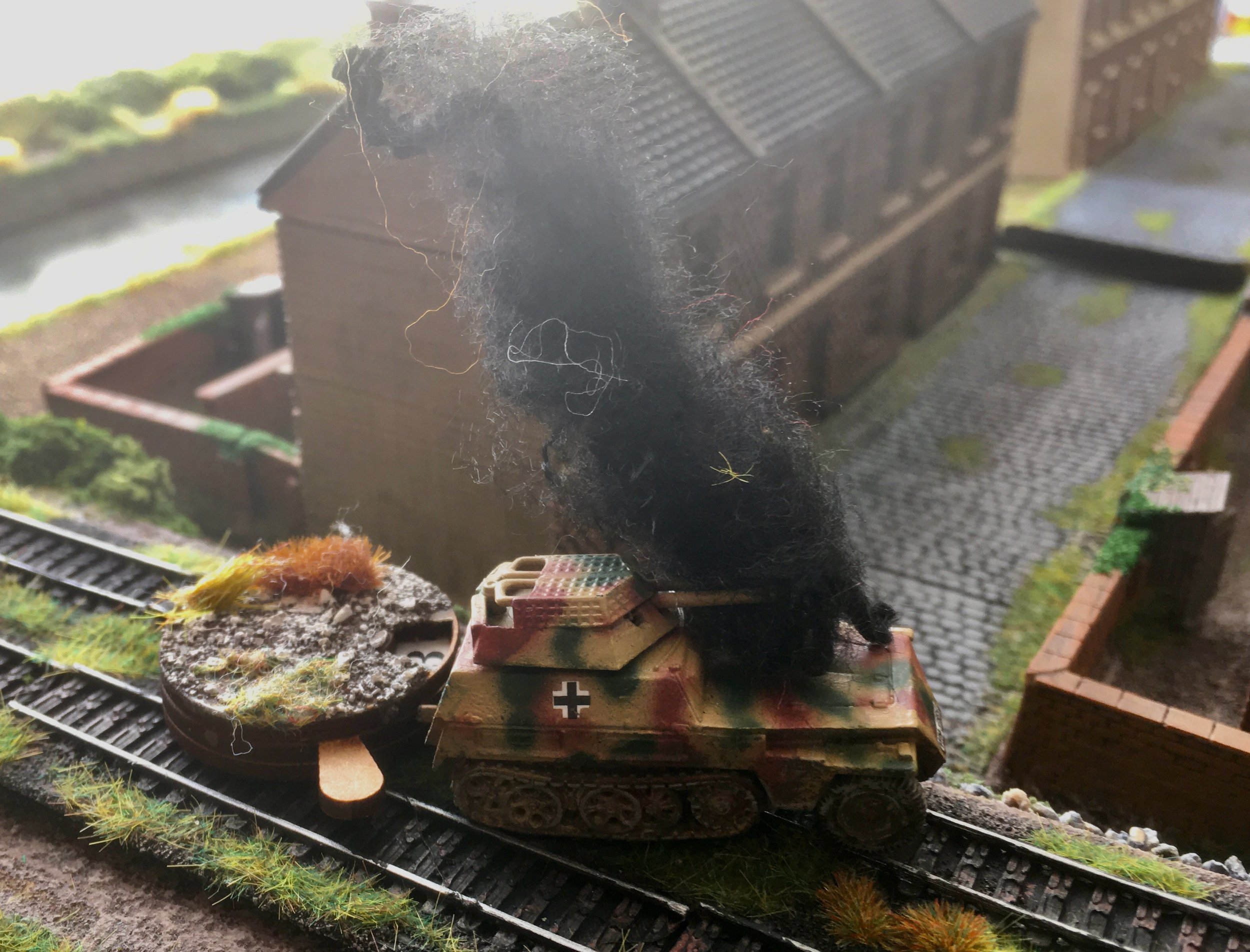
The second brewing it up!
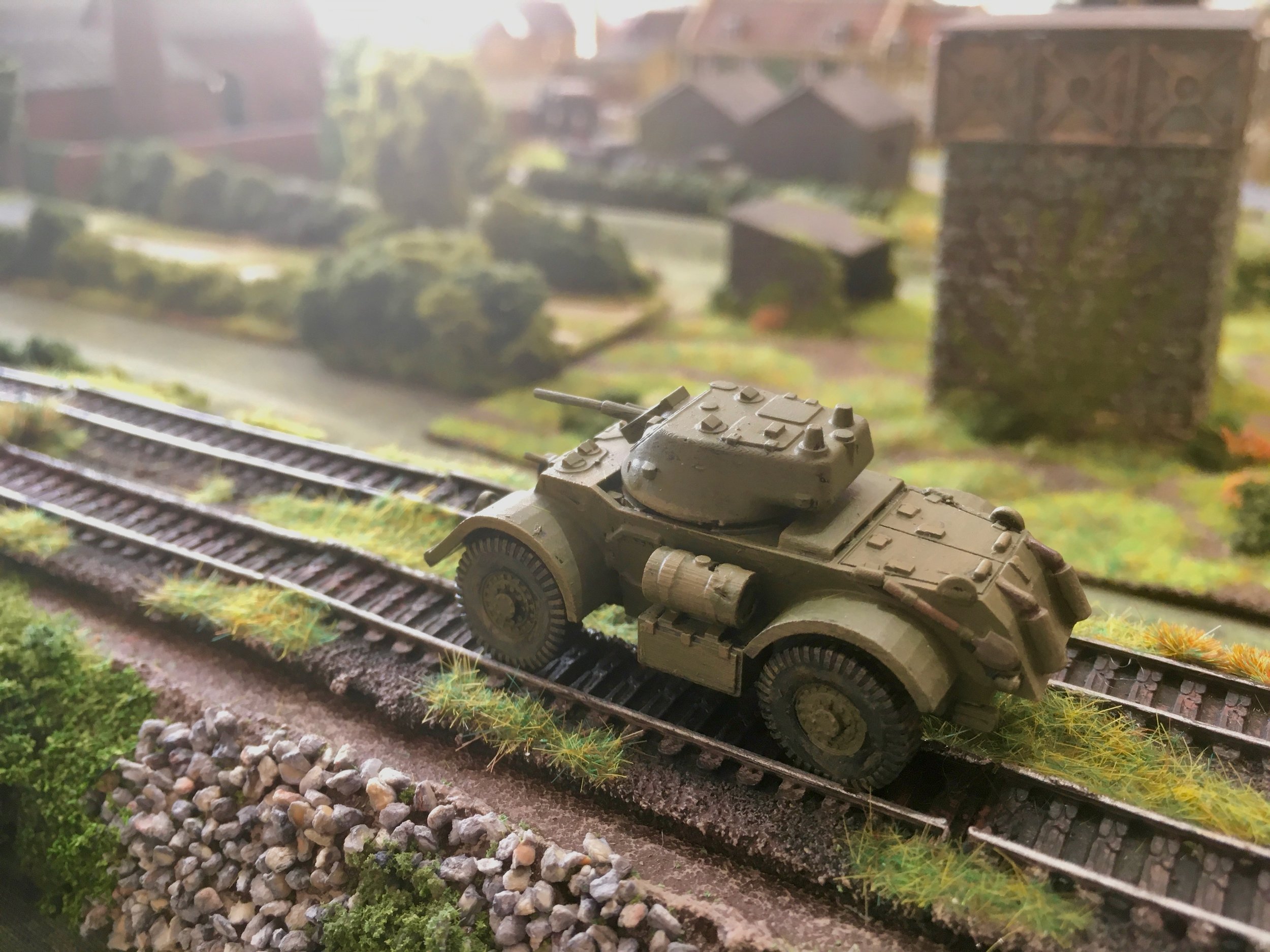
The Cavalry continued its advance...
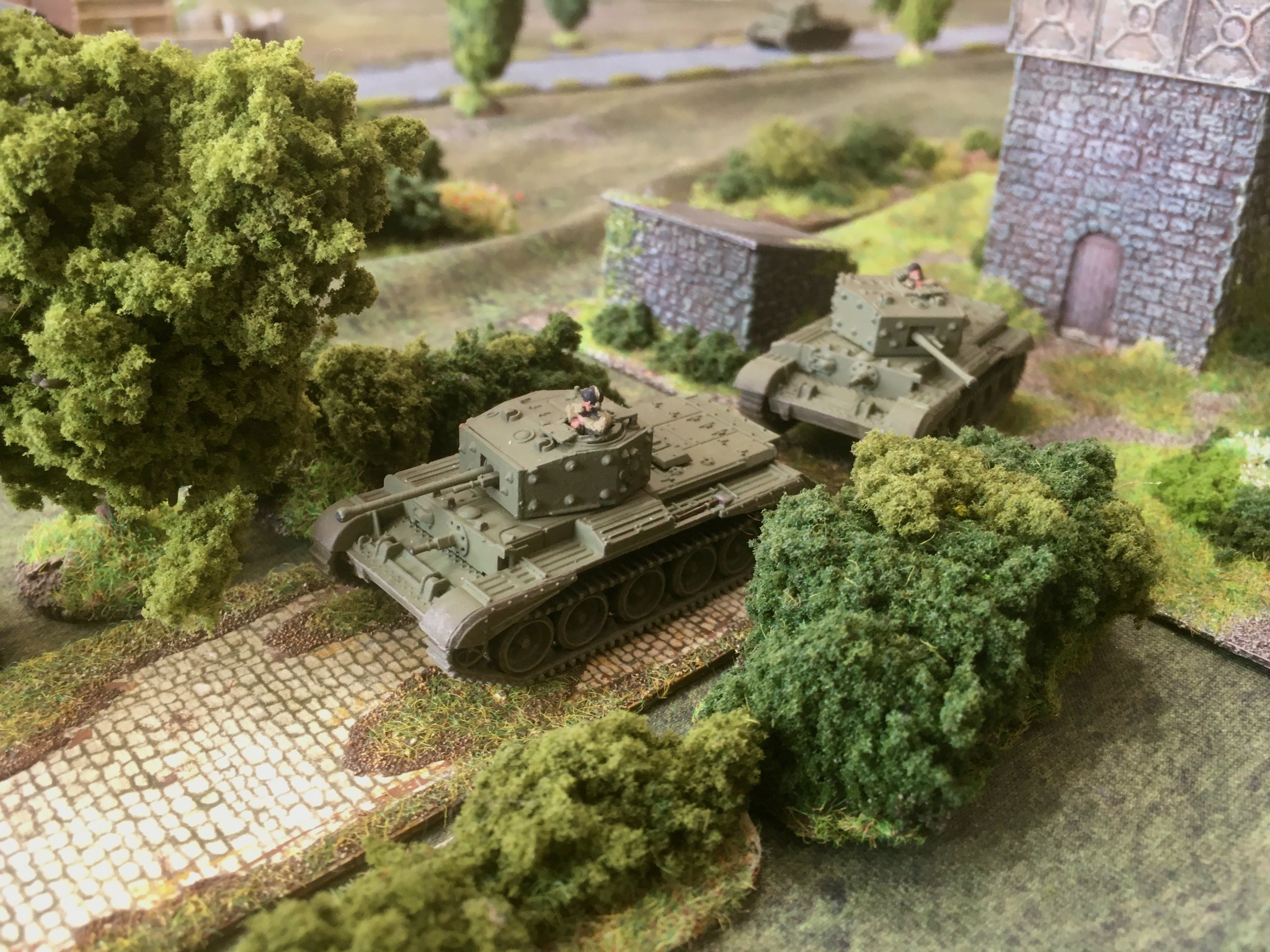
Whilst the first tanks of C Squadron 2nd Welsh Guards advance towards the town - let's give the Hun some Welsh sugar boyos!
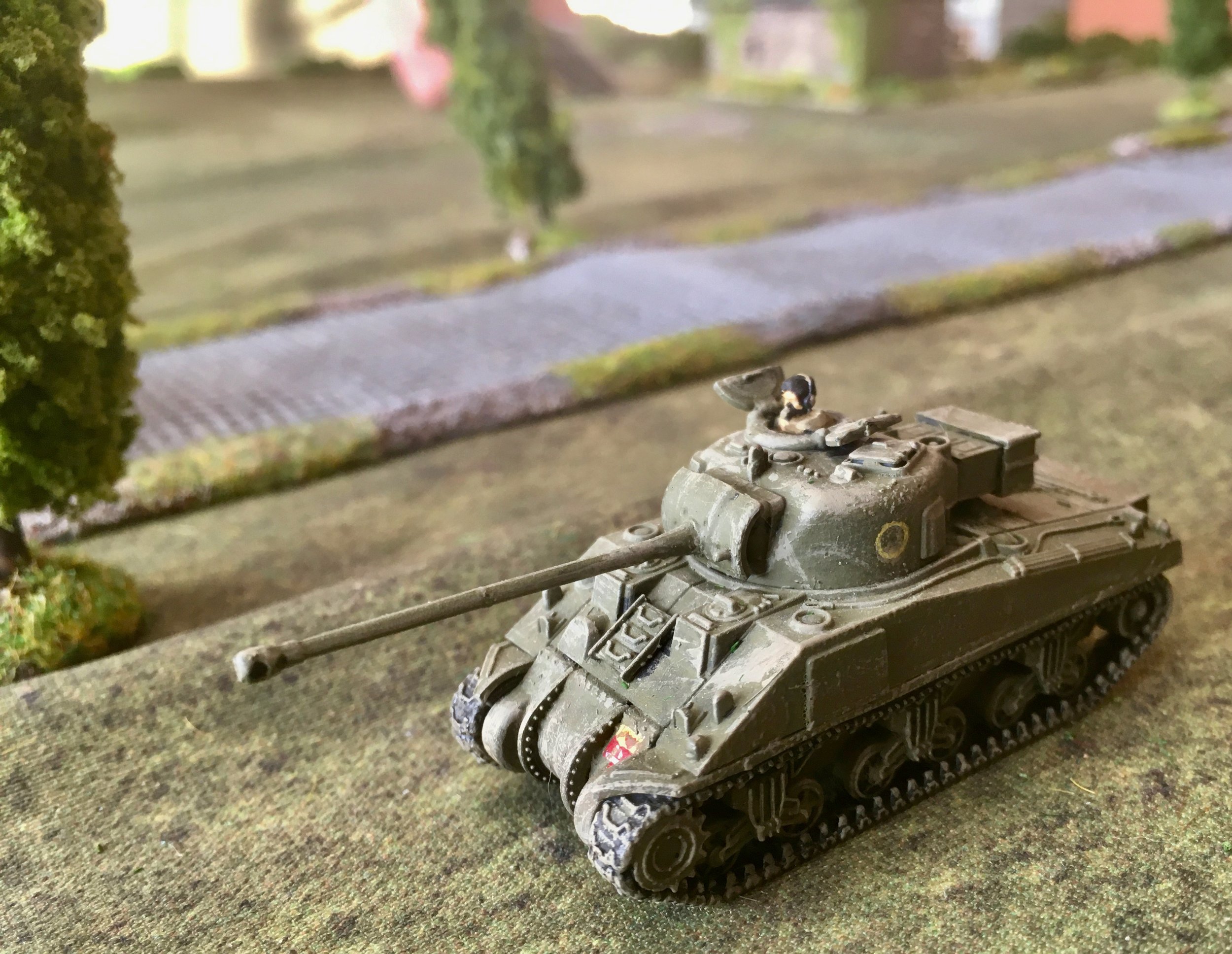
The Cromwells were supported by a Sherman Firefly - on the look out for any German armour...
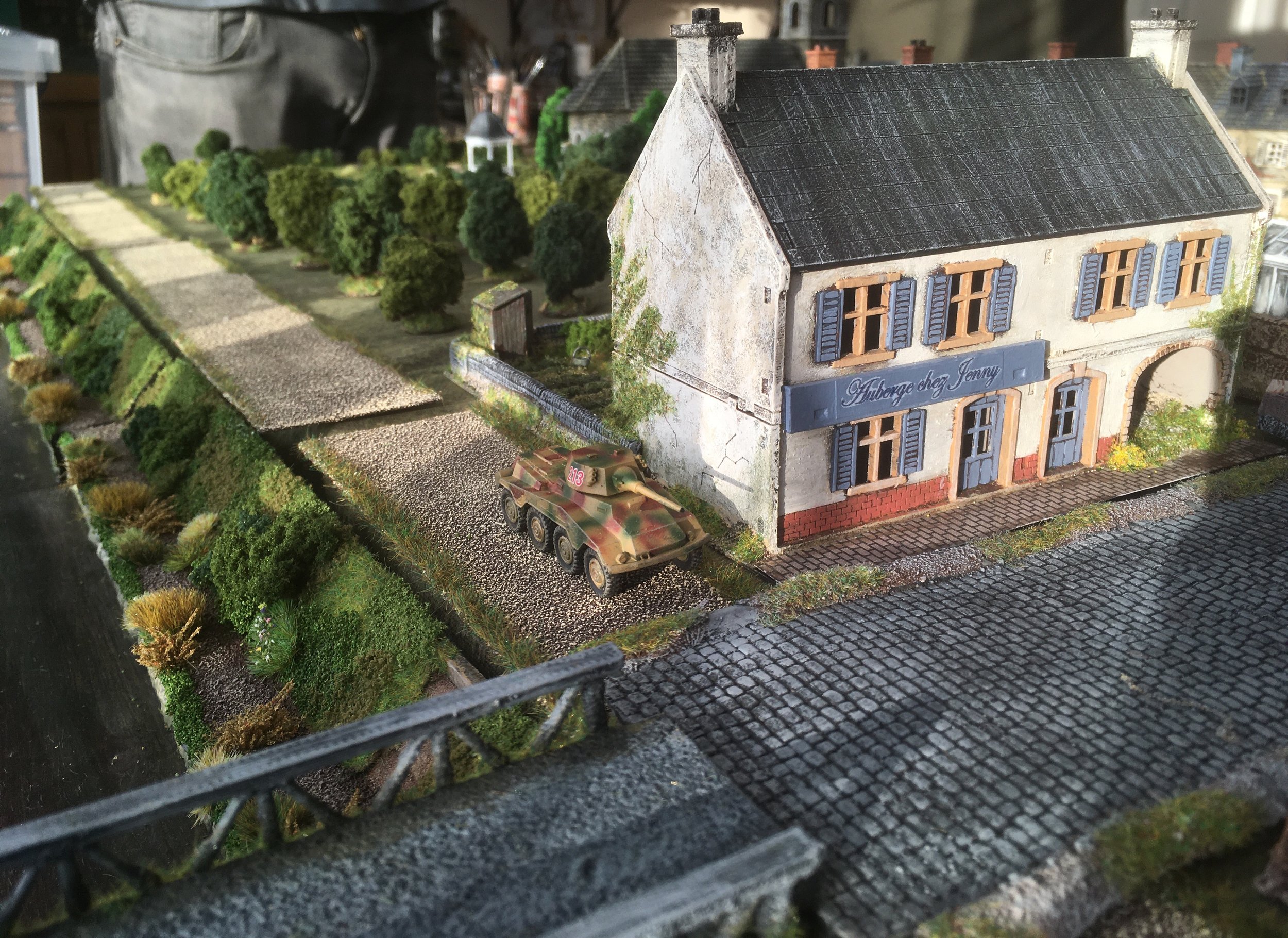
It didn't spot an Sd.Kfz.234/2 Puma lurking on the rear edge of town near the canal...
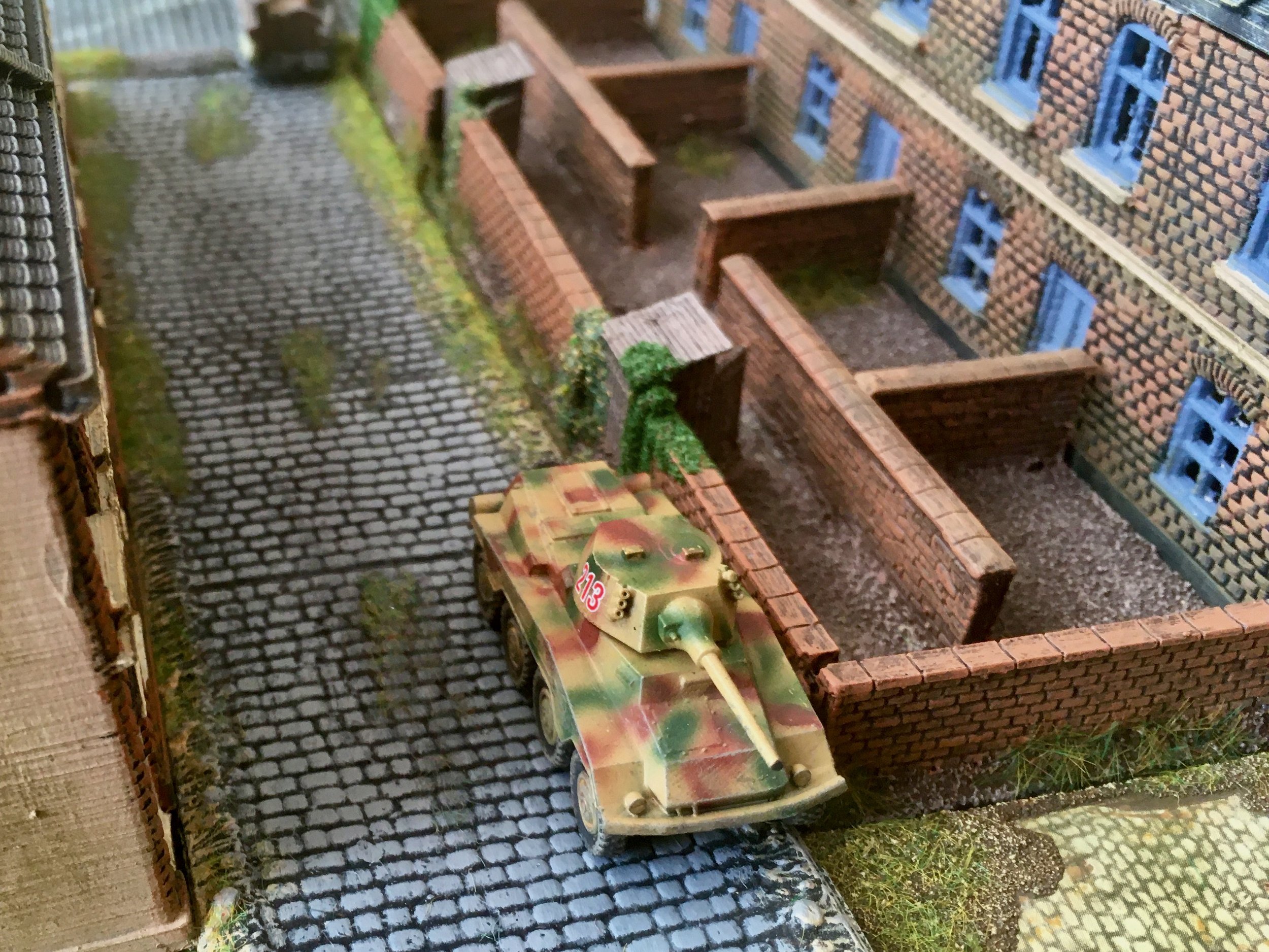
The Puma then went hunting...
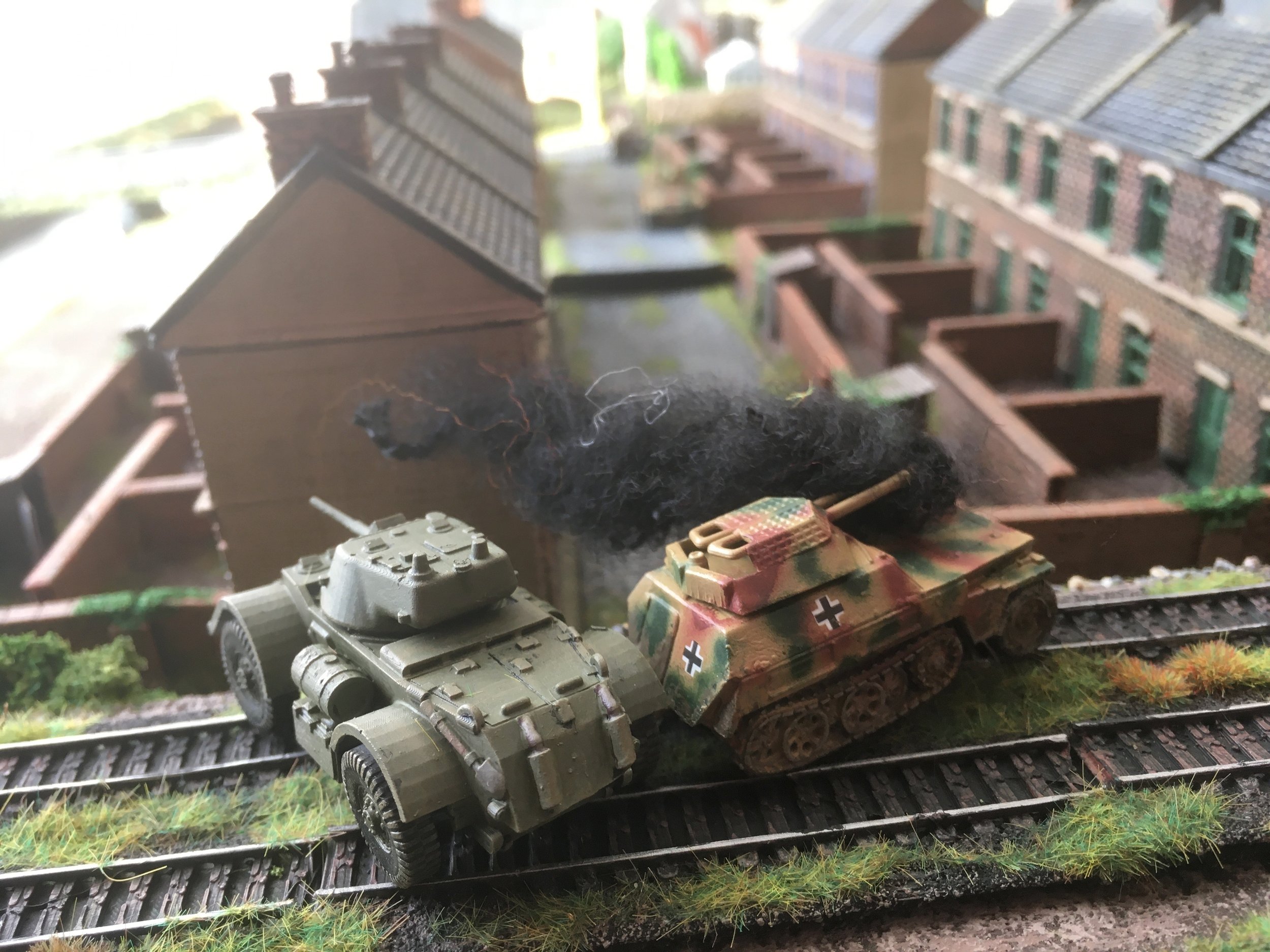
Swiftly driving through the narrow streets and spotting one of the Household Cavalry's Staghounds...
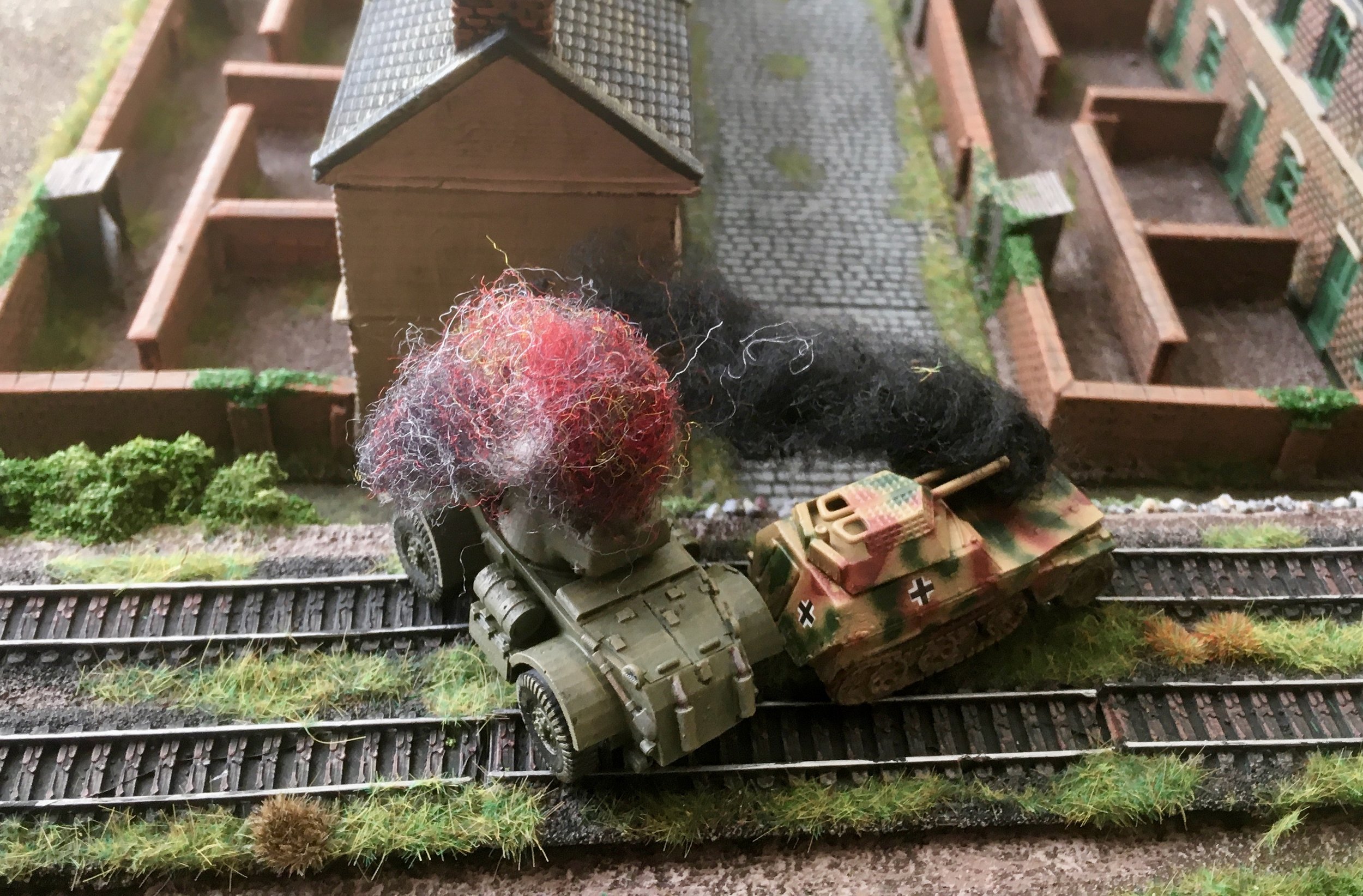
The Puma slammed a 50mm round into the British armoured car, which immediately brewed up!
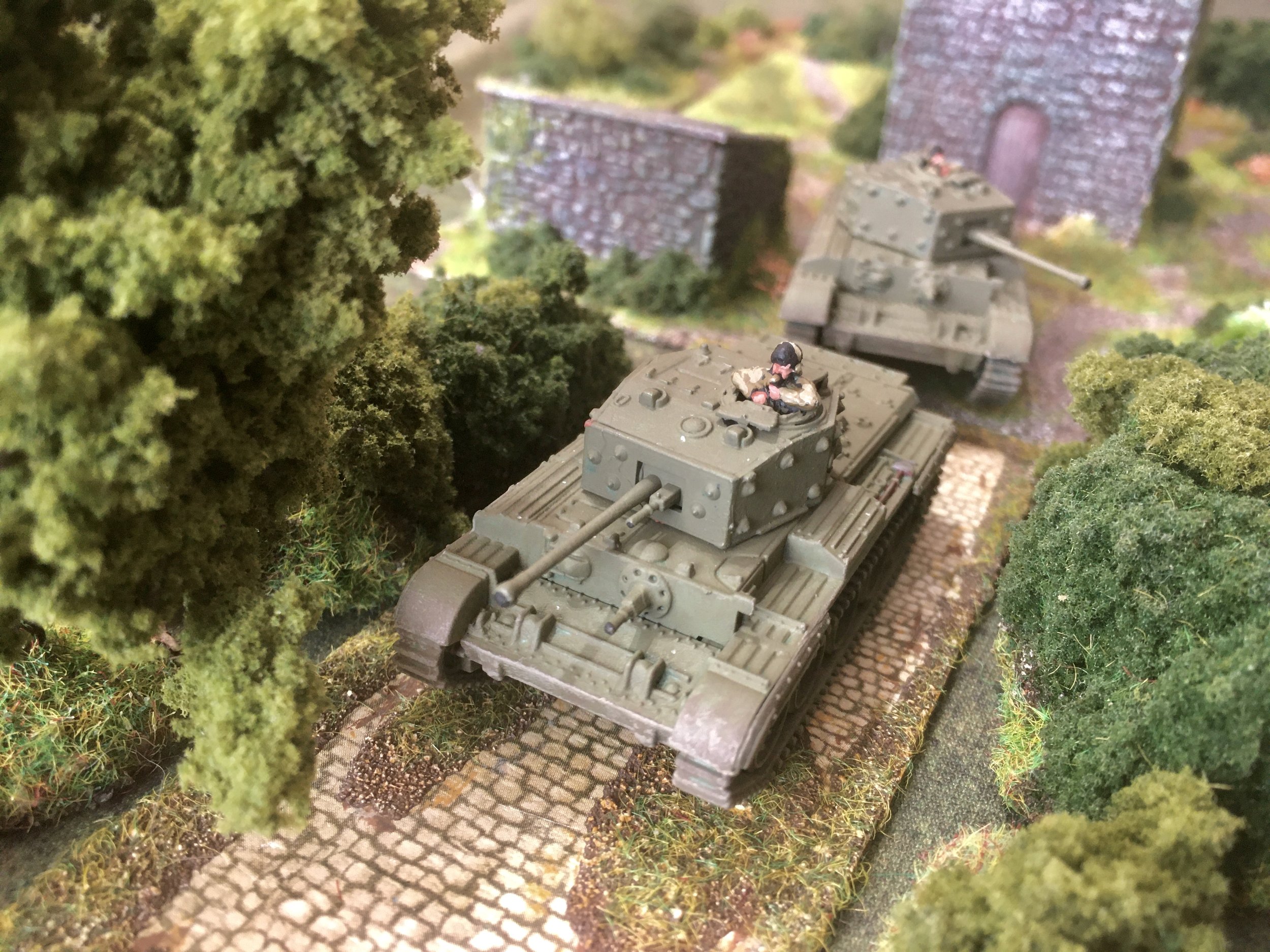
This German success was tempered as the lead Cromwells of the Welsh Guards spotted some German infantry in front of them...
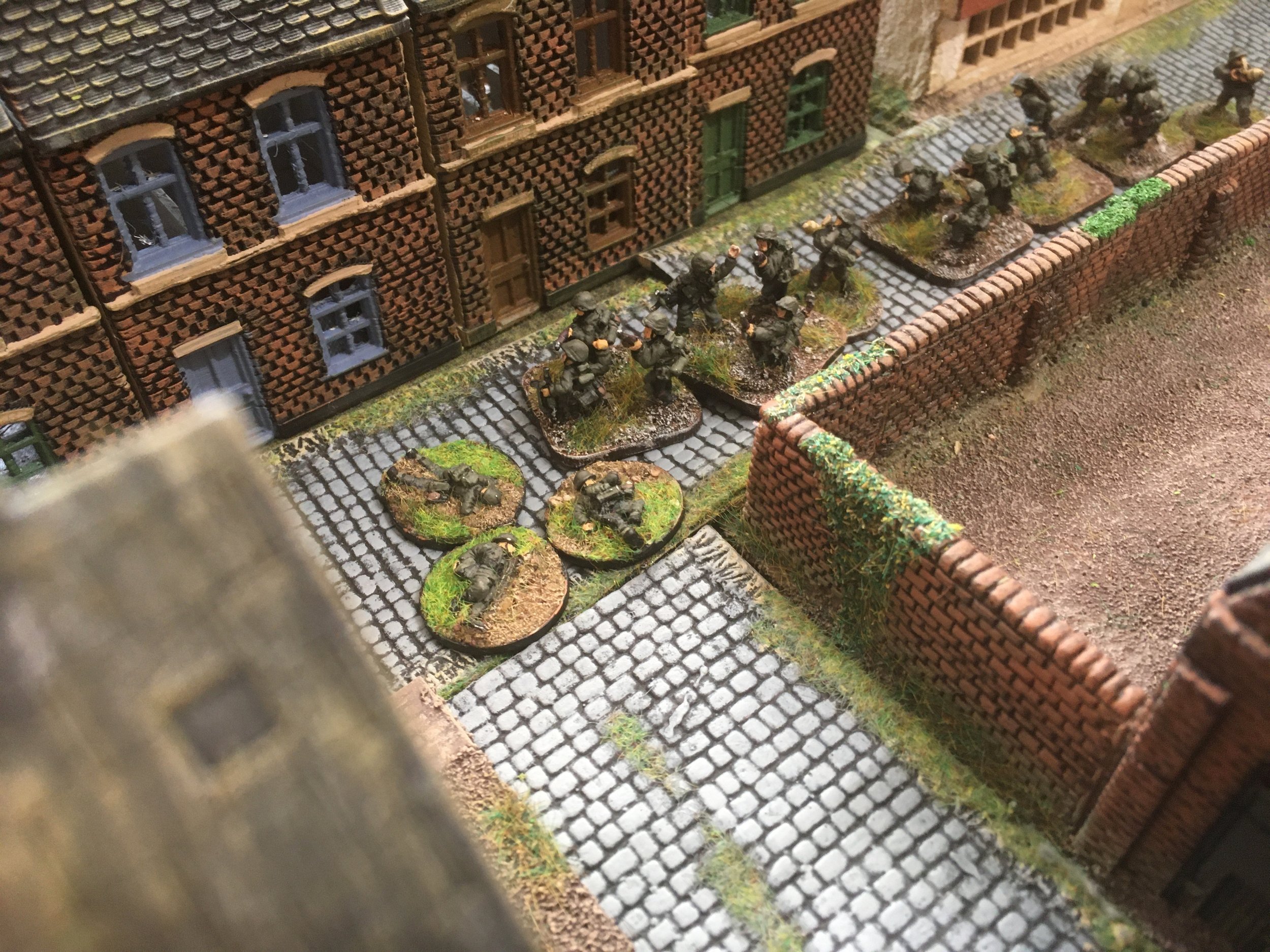
And opening fire with their 7.92mm Besa machine-guns killed three Germans and Pinned the survivors!
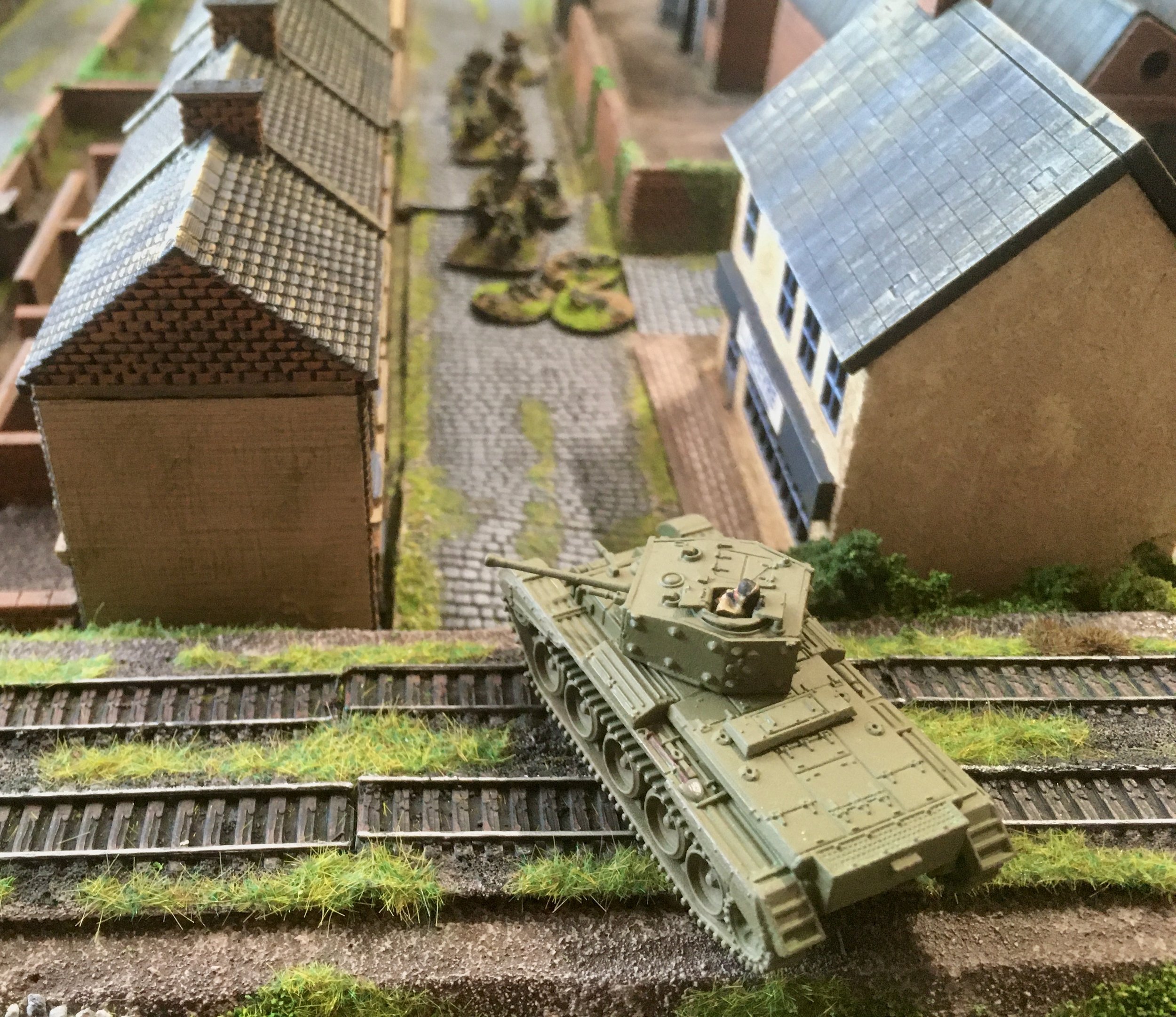
A third Welsh Cromwell then moved up the railway embankment, spraying the remaining Germans with more machine-gun fire...
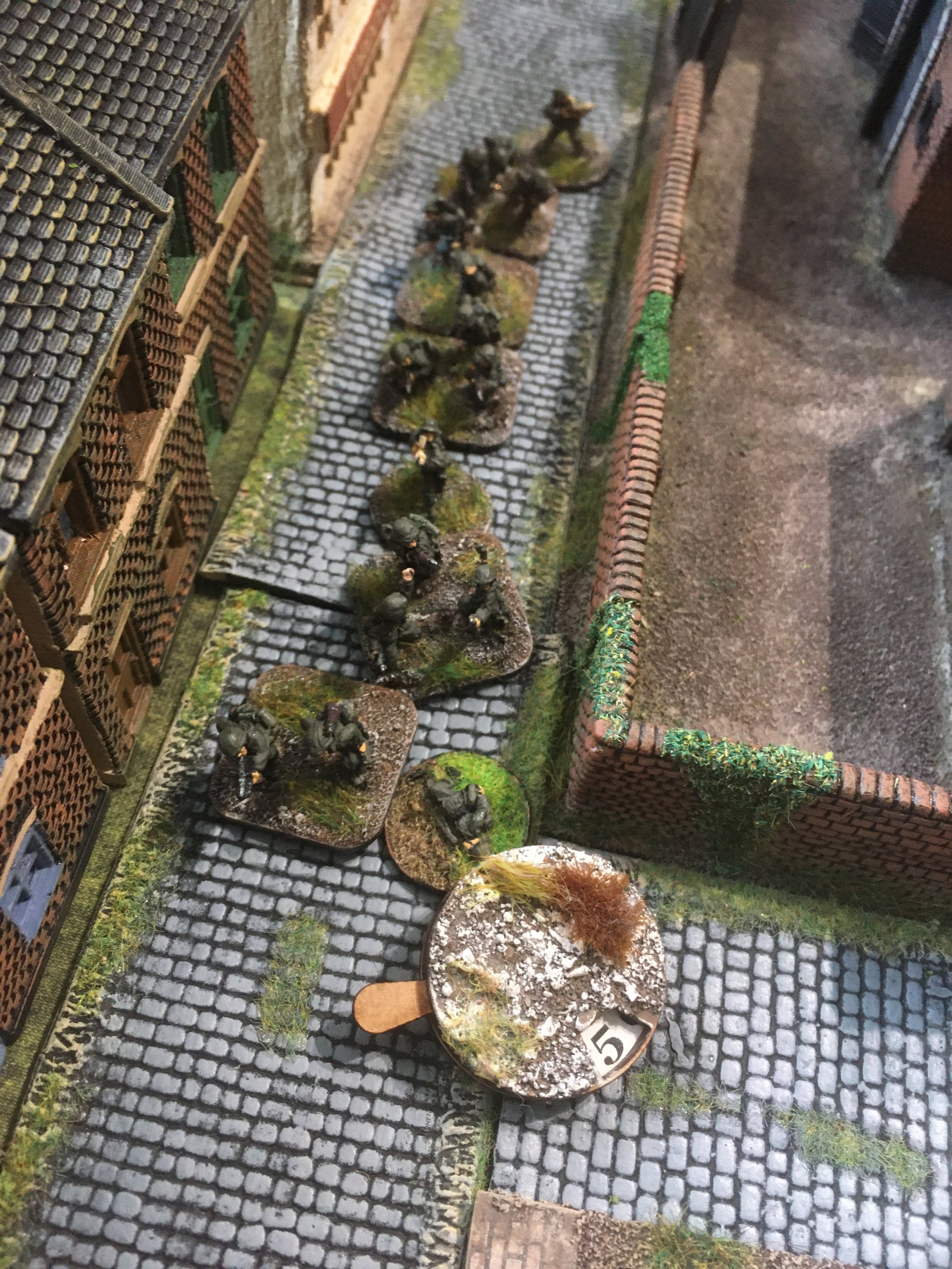
Another three Germans fell and the survivors reeled under accumulated Shock.
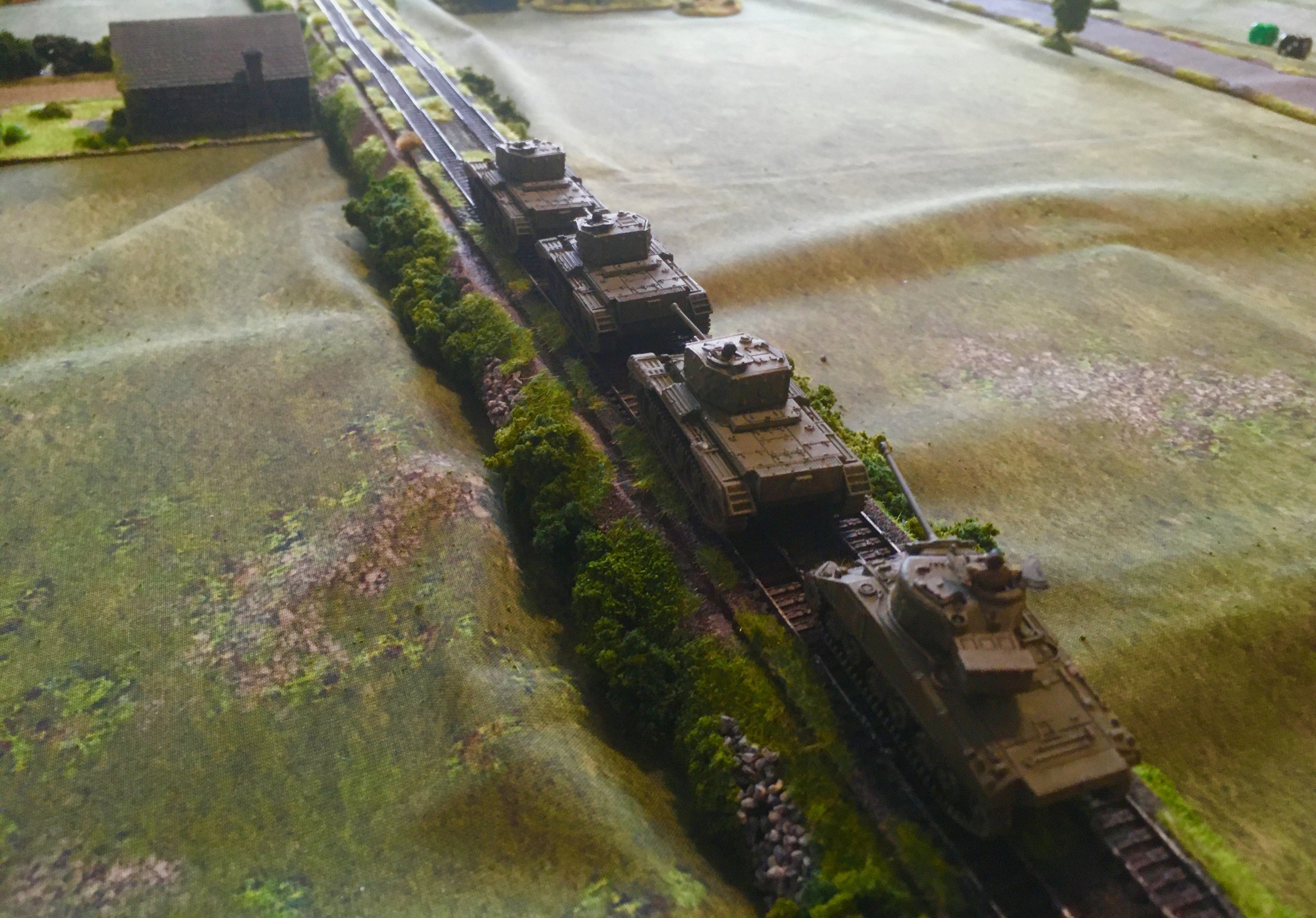
To make matters worse for the Germans, a second troop of Welsh armour arrived, moving down the railway line.
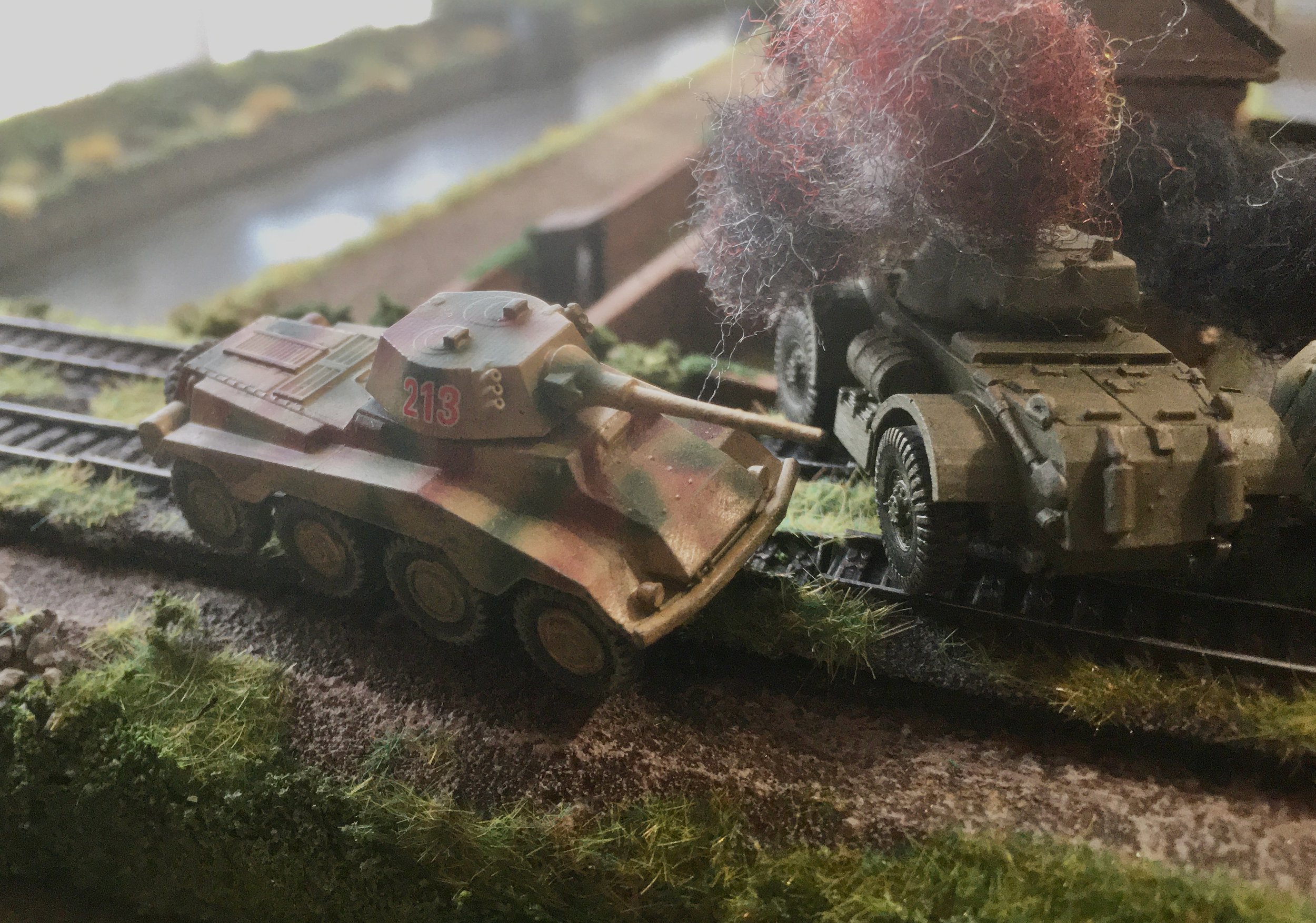
Despite being faced with such daunting odds the Sd.Kfz.234/2 Puma moved onto the railway embankment...
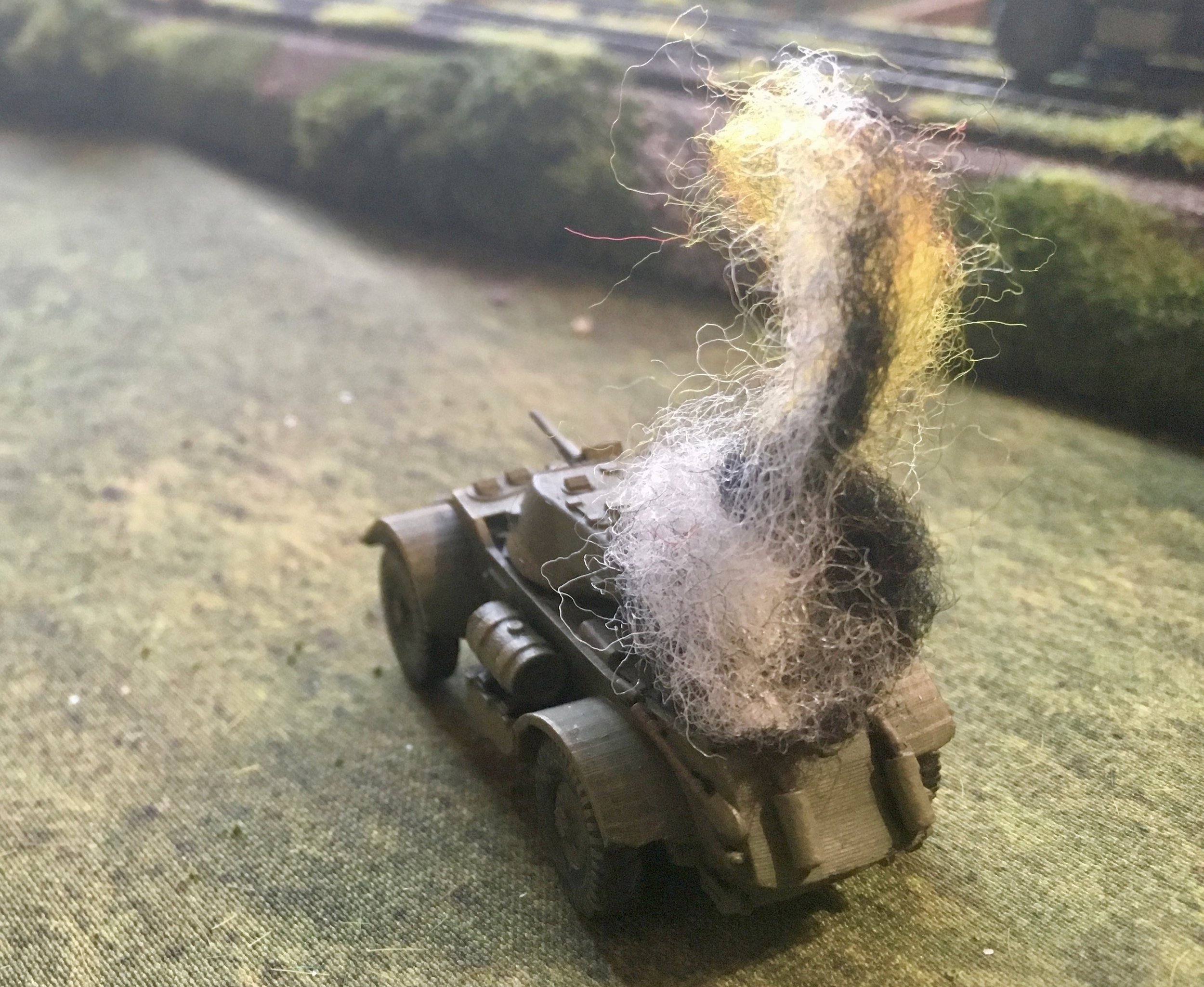
Slamming a 50mm round into the Household Cavalry CO's Staghound.
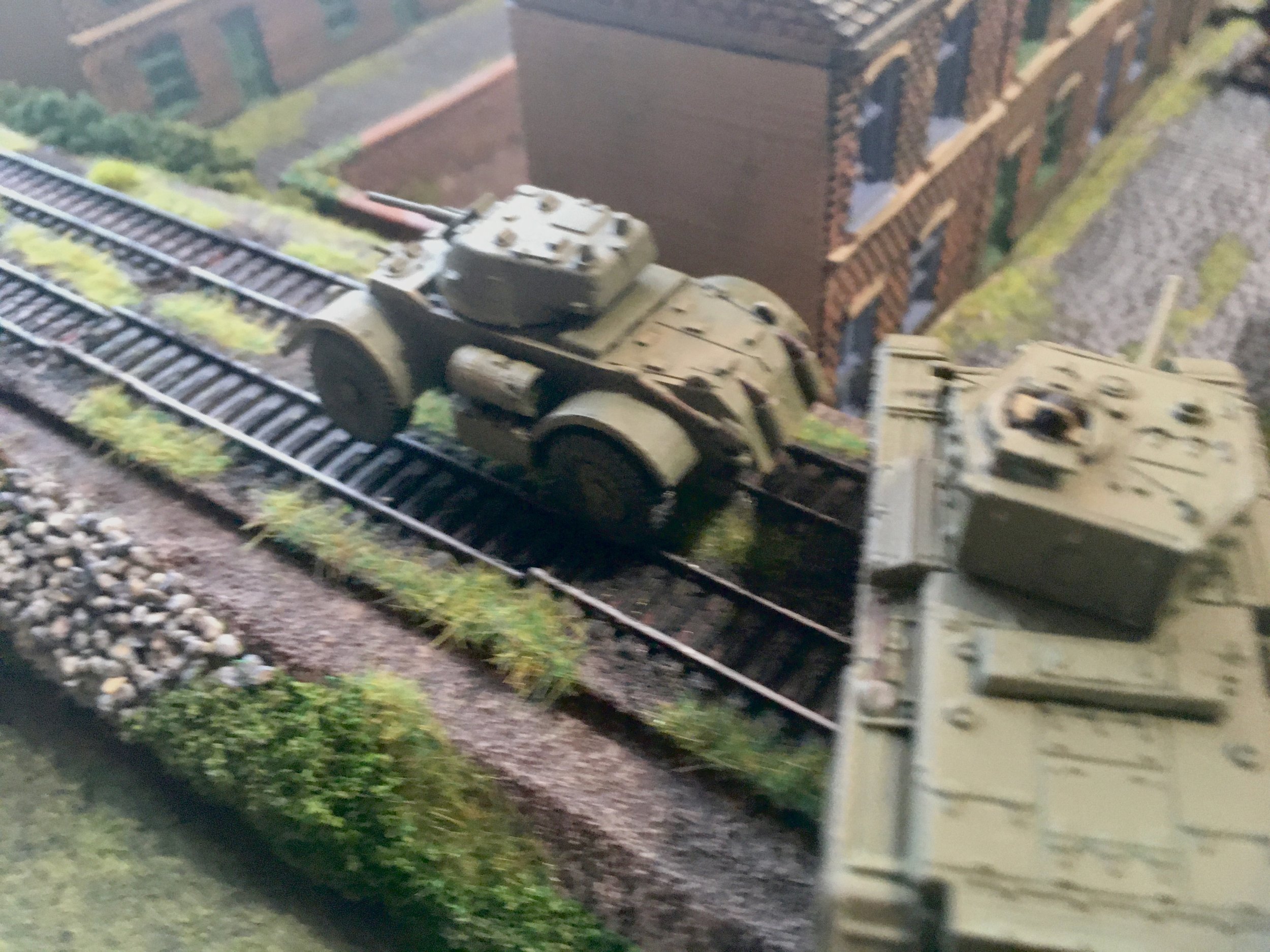
The sole surviving Staghound then returned fire...
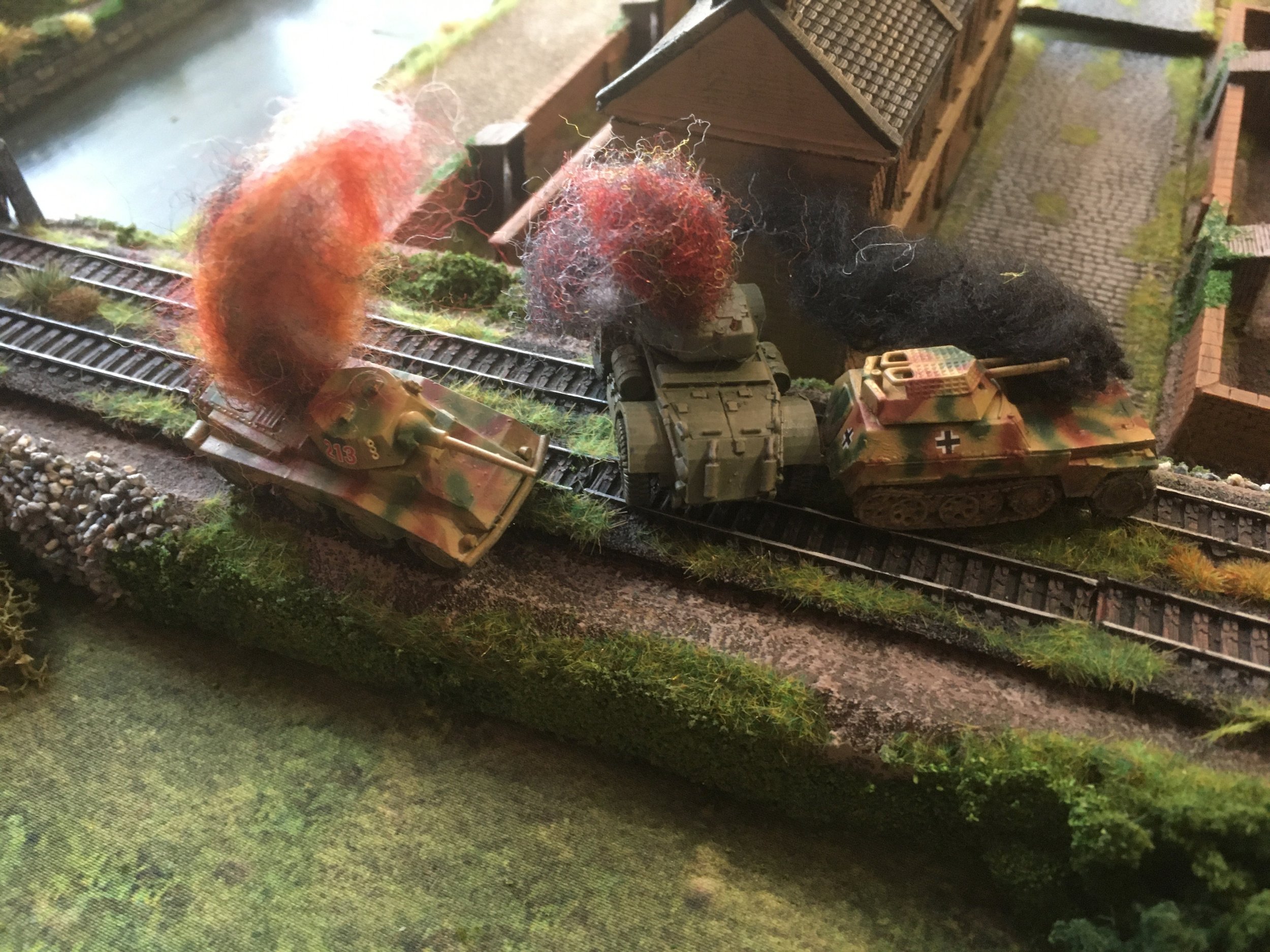
A 37mm shell ripping into the German armoured car and brewing it up.
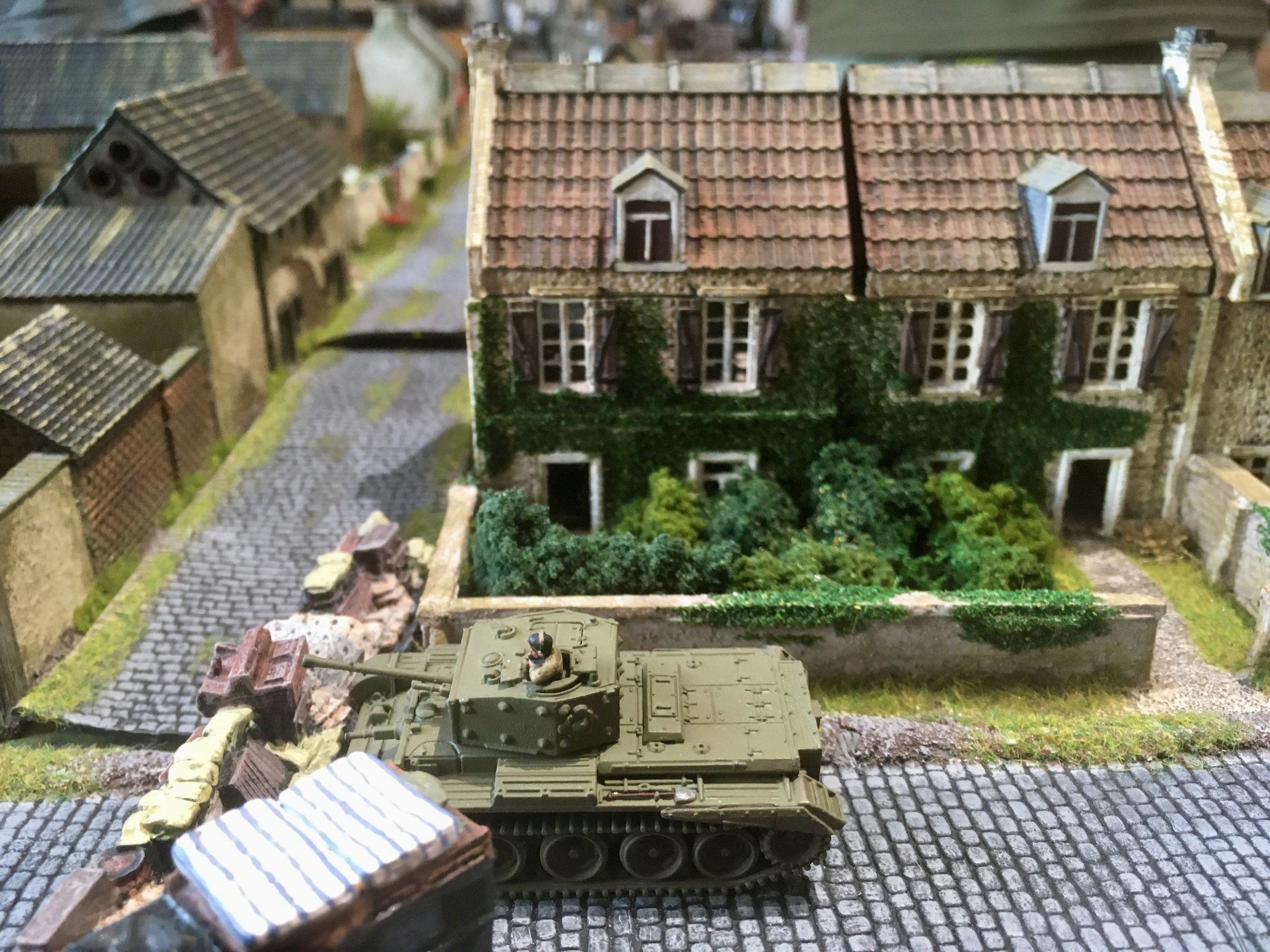
With the road to the railway bridge seemingly open, the Welsh Guards turned their attention to the route to the road bridge, only to be confronted by a barricade.
Out of the dormer window of the adjacent house a Panzerfaust was fired, but missed the stationary Cromwell!

The supporting Firefly opened fire on the house with its 0.30 in Browning...
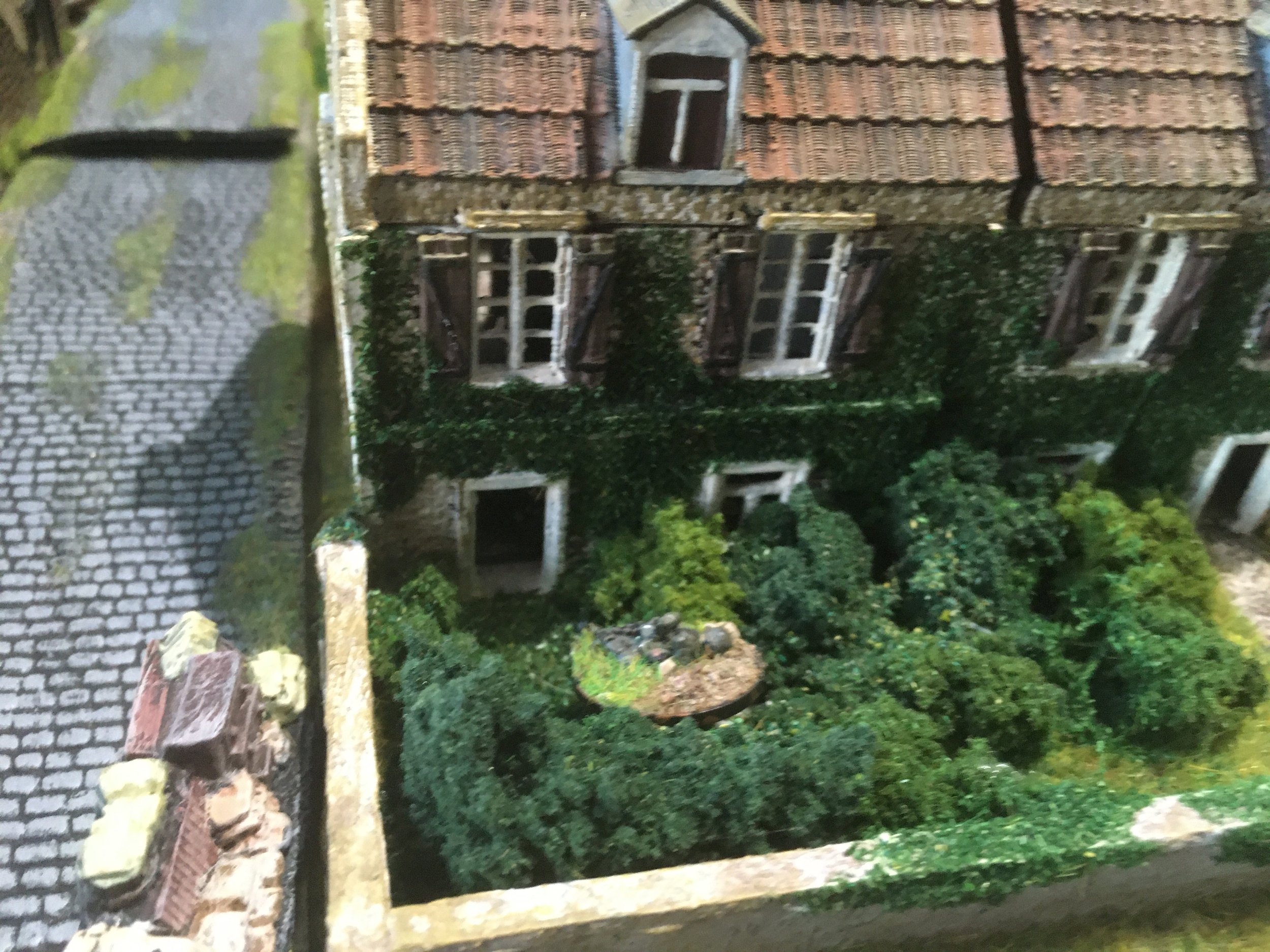
And the German panzerfaust operator came to an untimely end.
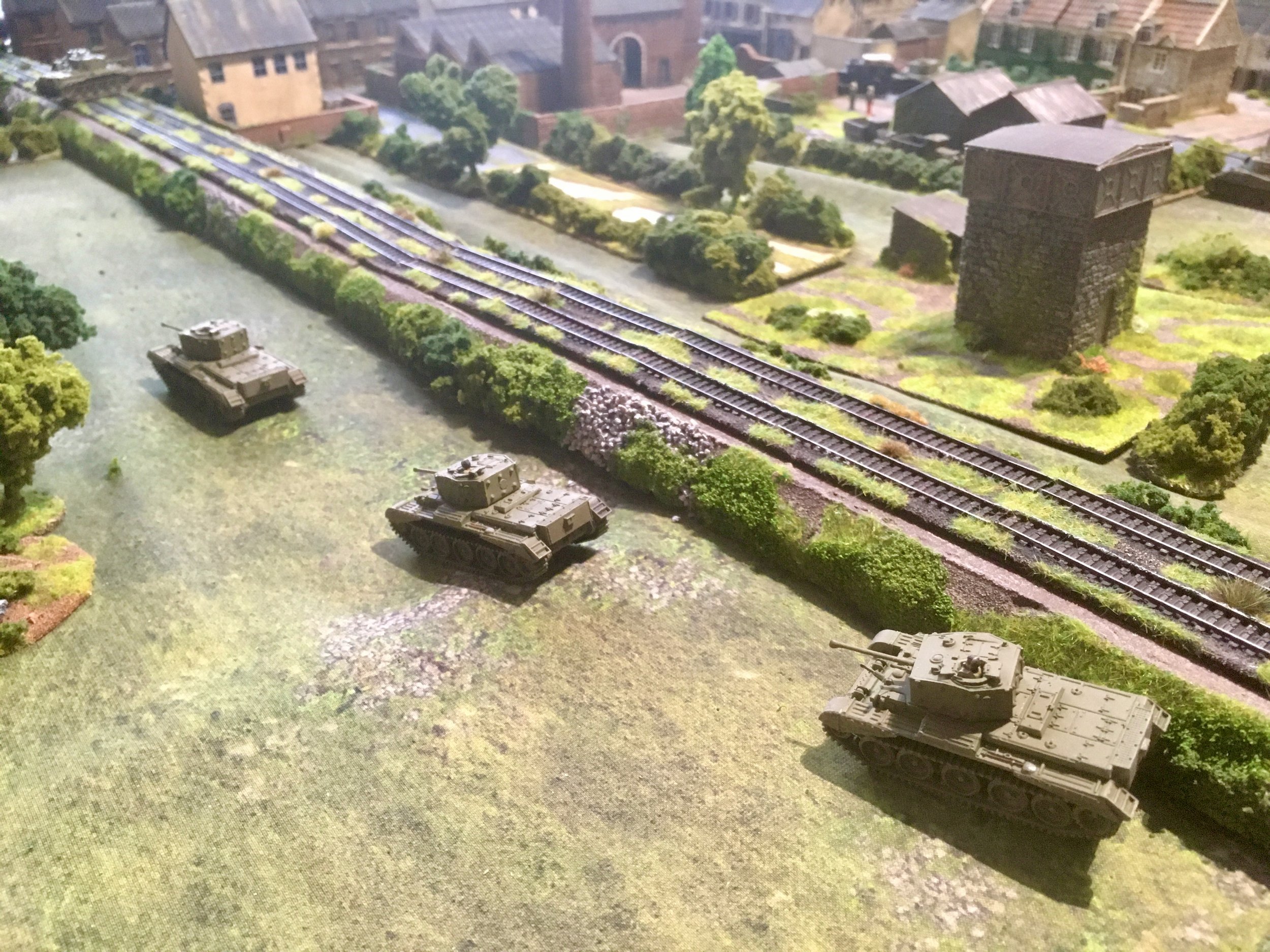
The second troop of Welsh armour pushed forward, now using the embankment as cover from any potential German ambush.
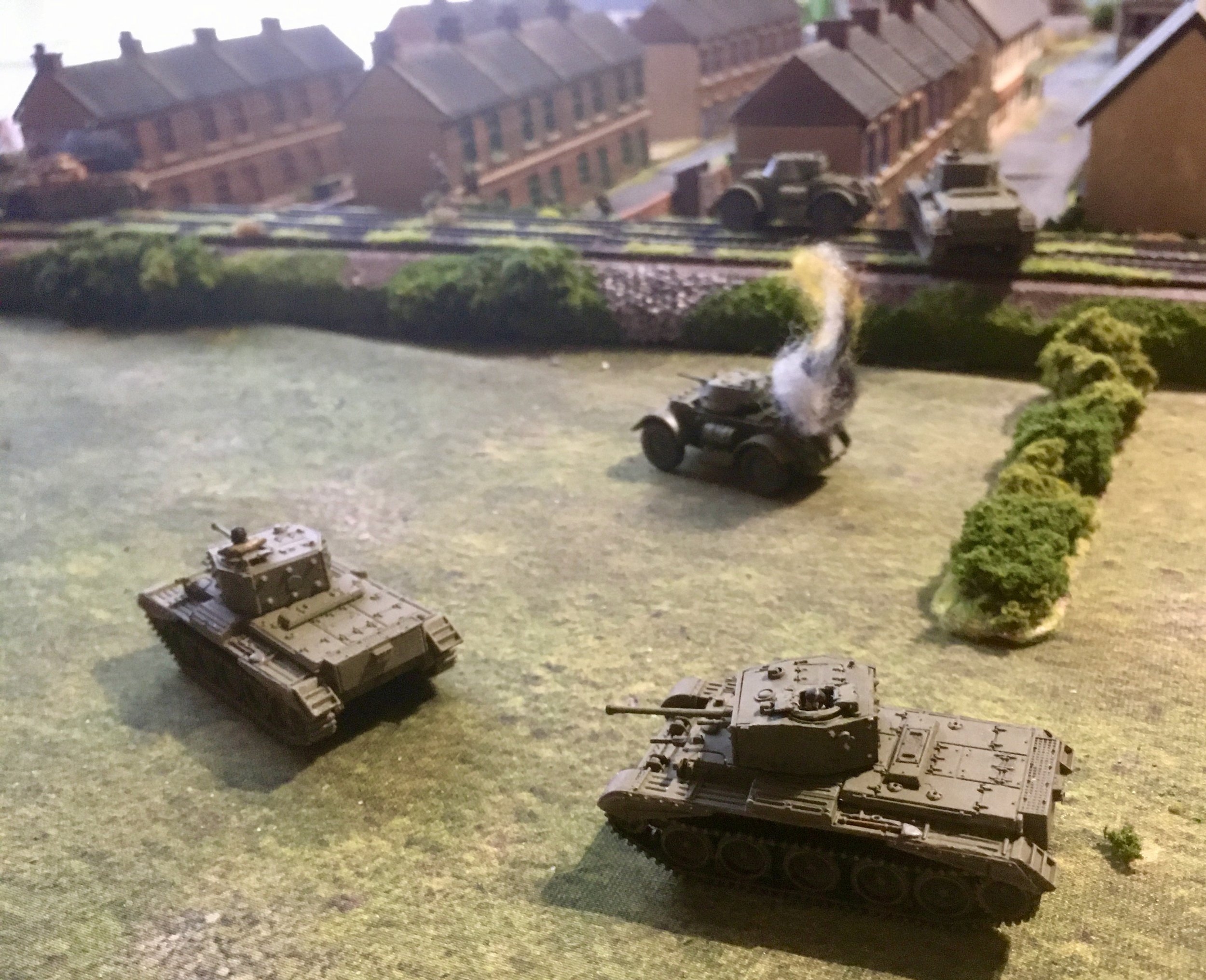
Forward the Guards! The Cromwells push forward towards the railway bridge.
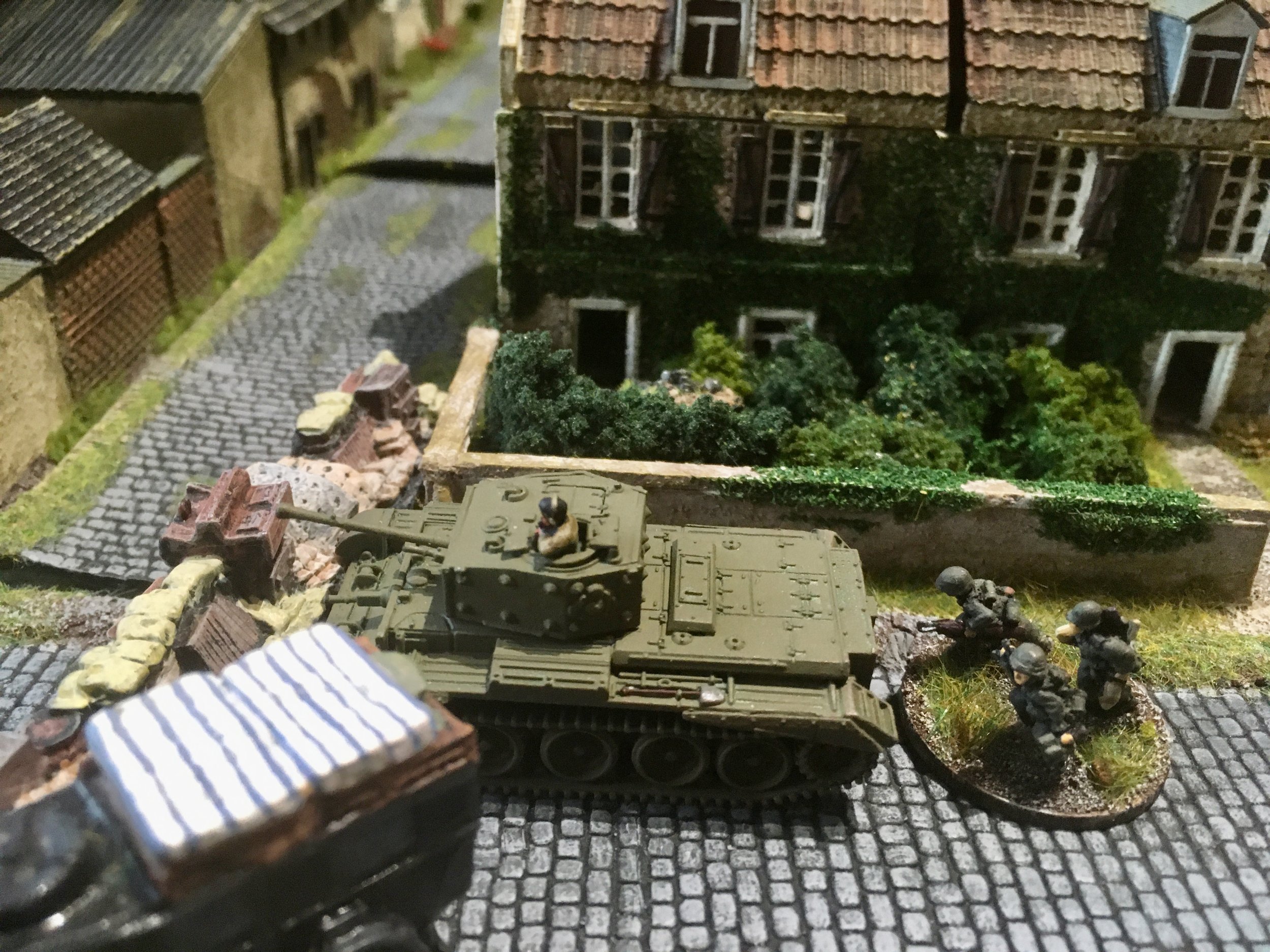
Despite having escaped destruction at the hands of the panzerfaust, the Cromwell at the barricade then found itself attacked by a Panzerknacker unit...
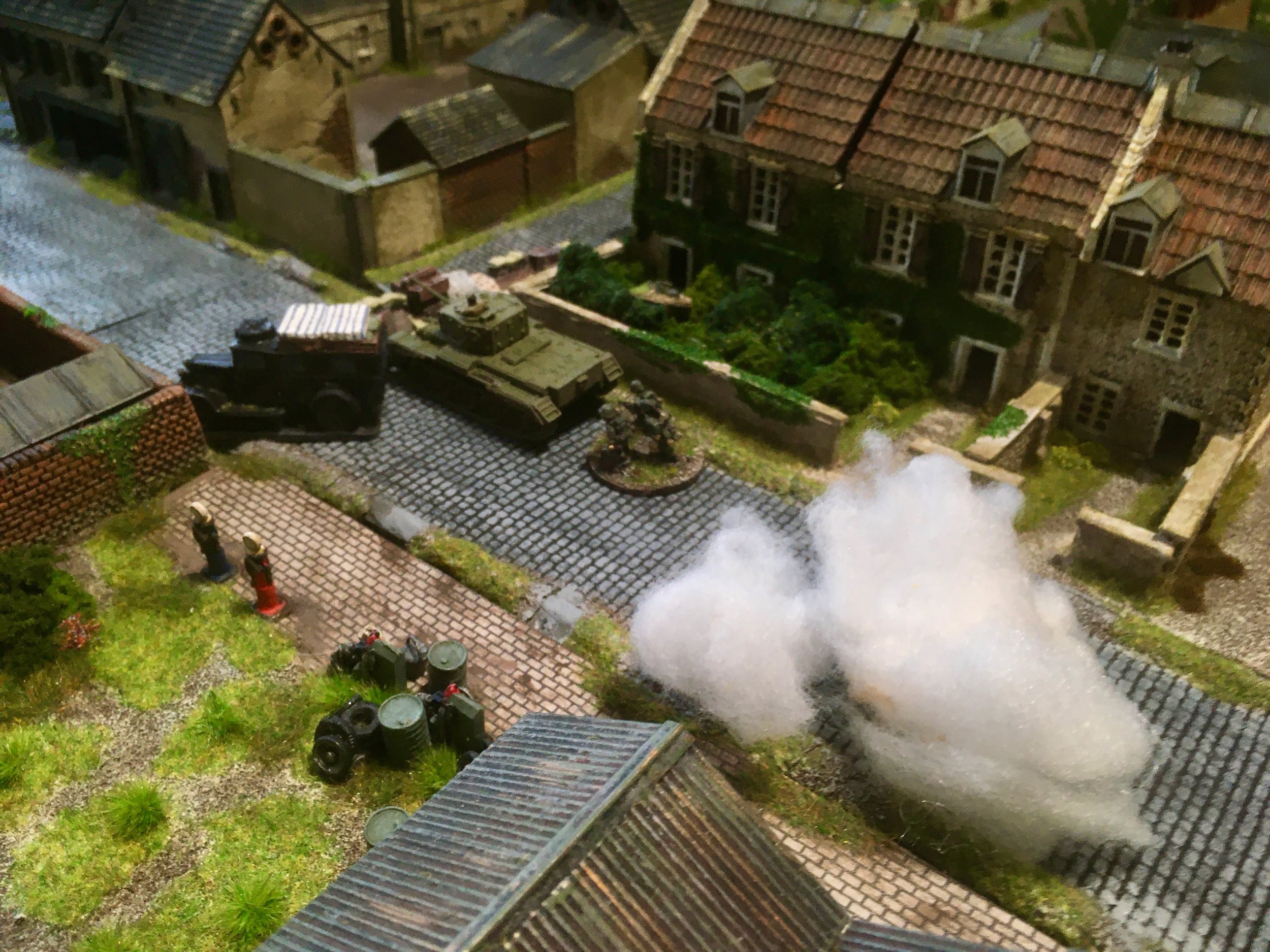
Who, as they rushed the British tank, threw down smoke to shield themselves from the Firefly that had killed the panzerfaust operator.
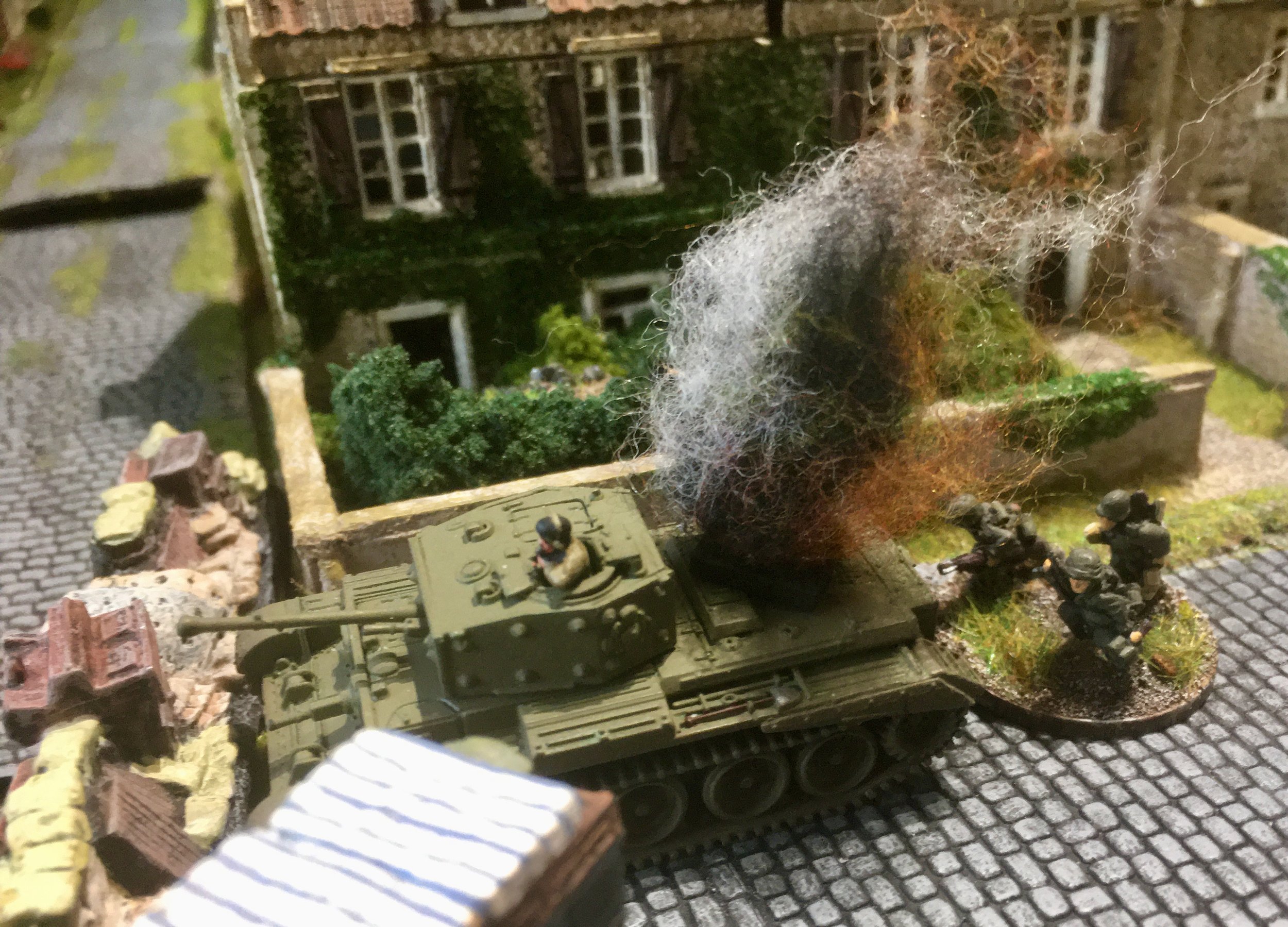
Boom! The Panzerknacker team took out the Cromwell!
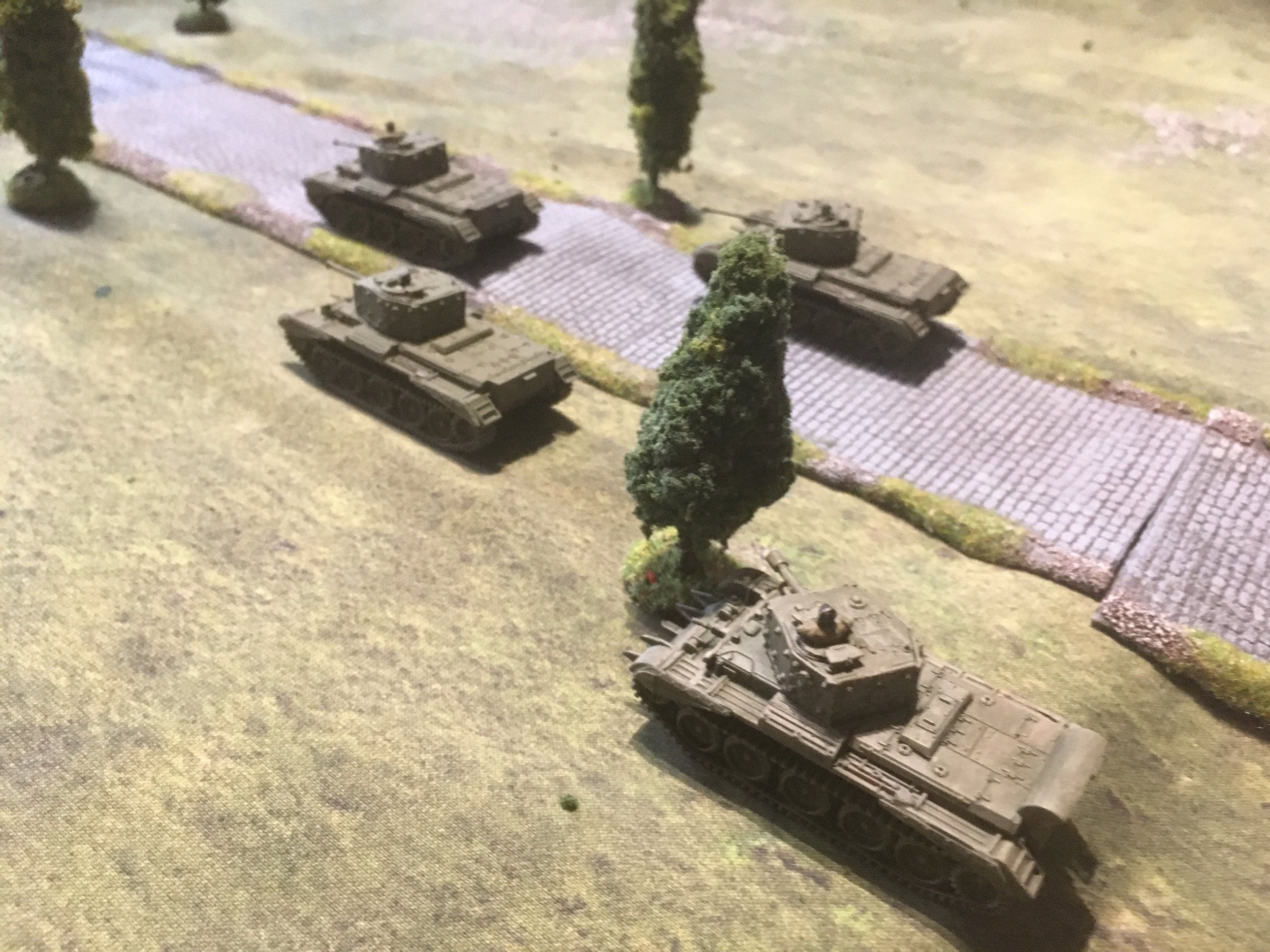
However as the Cromwell brewed up, more Welsh armour appeared outside the town - the Squadron's HQ troop!
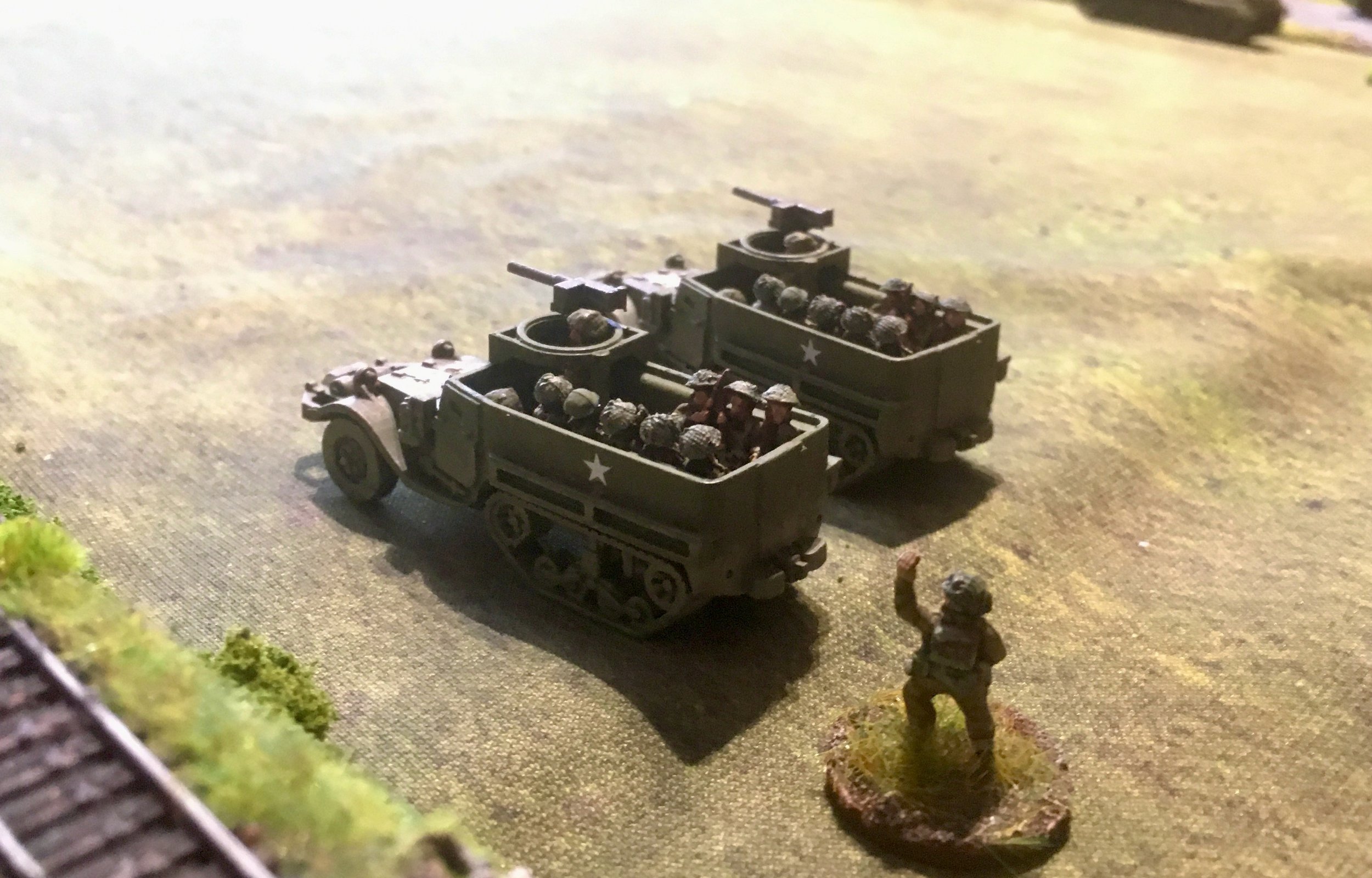
Followed by two M5 half-tracks of the Grenadier Guards in support...

With more Grenadier Guards pushing up the opposite flank.
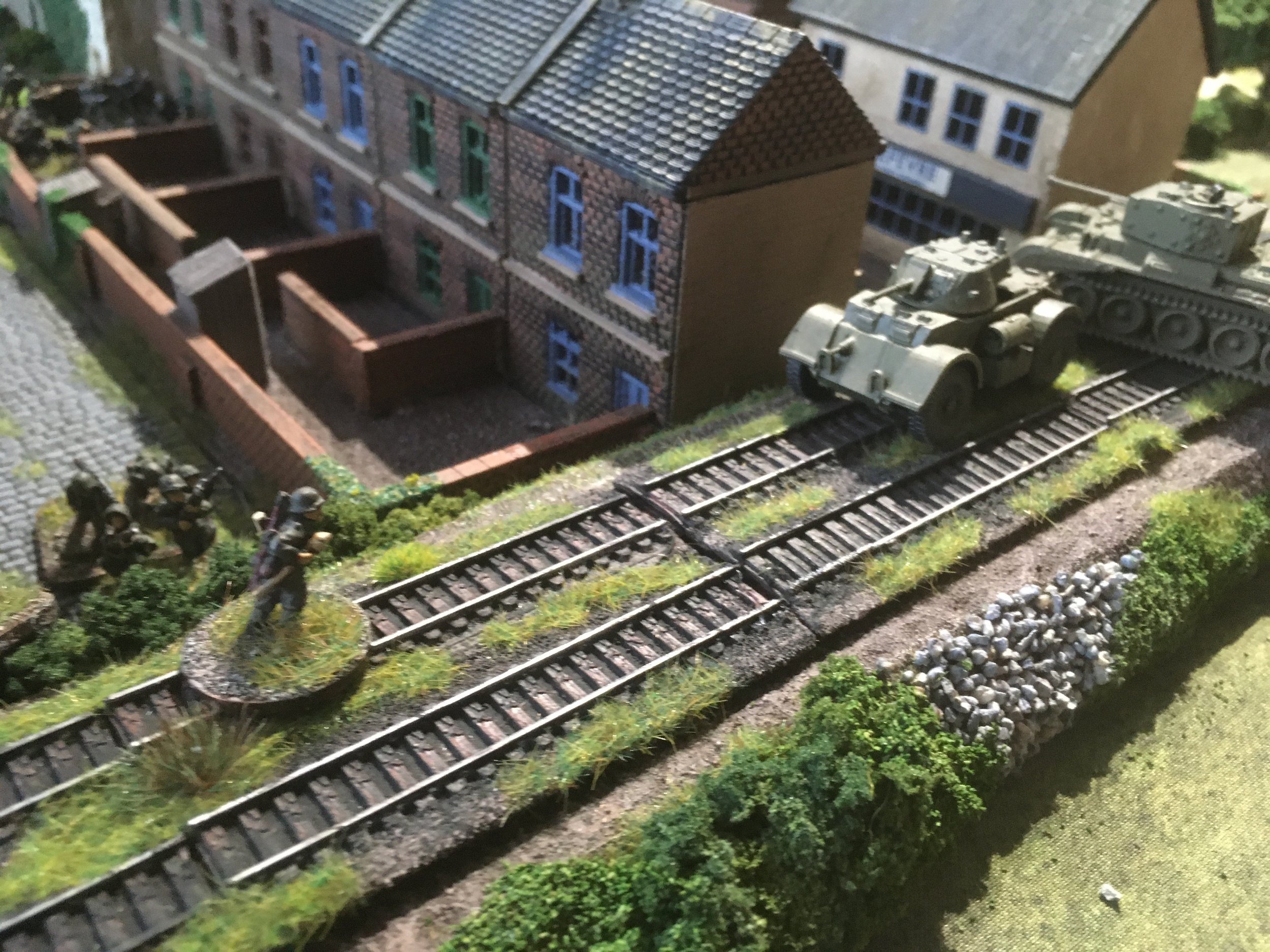
Another panzerfaust gunner sprang into action, rushing up the embankment to try and destroy the last Staghound...
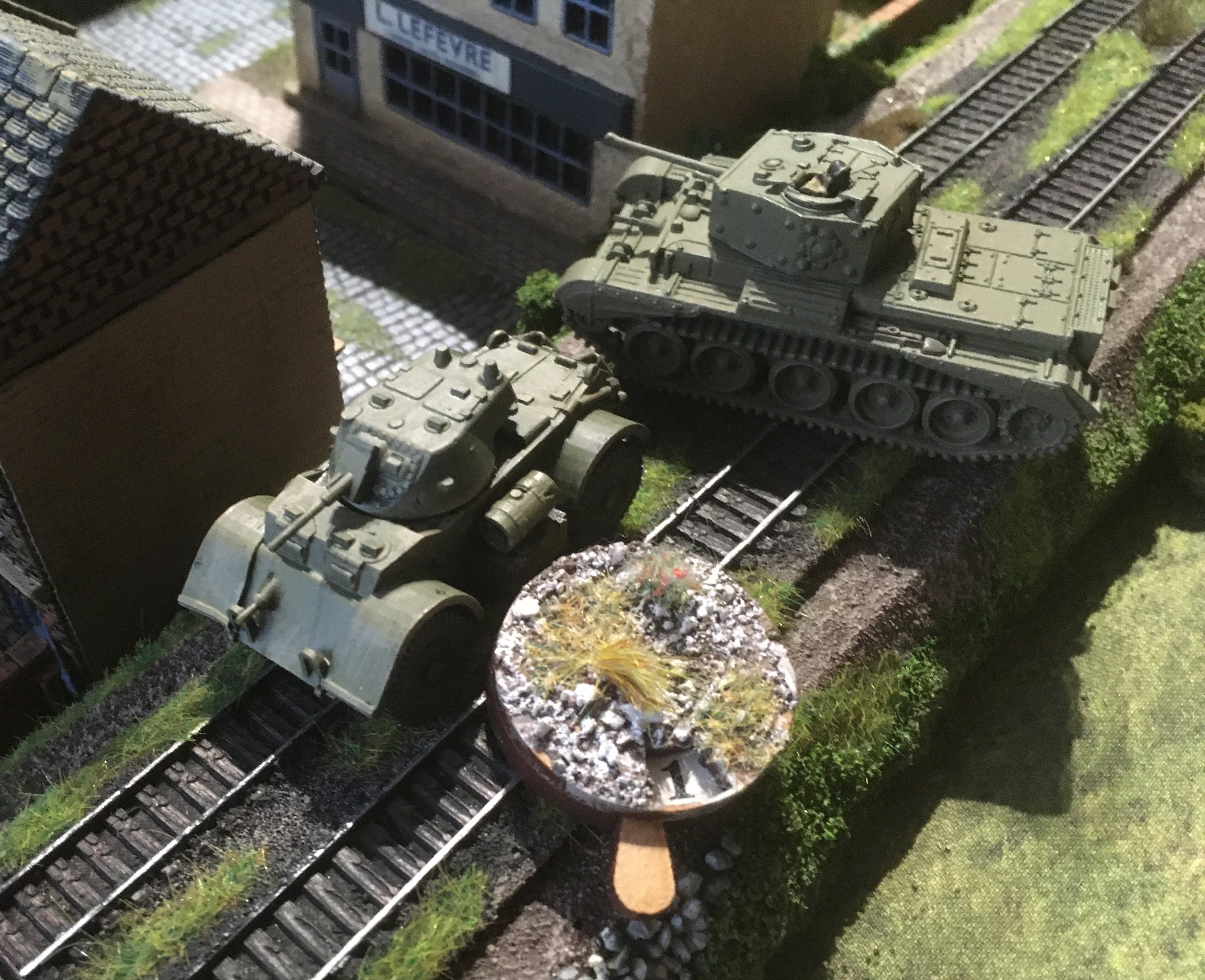
A glancing blow inflicted a point of Shock, but the Staghound survived the ambush.
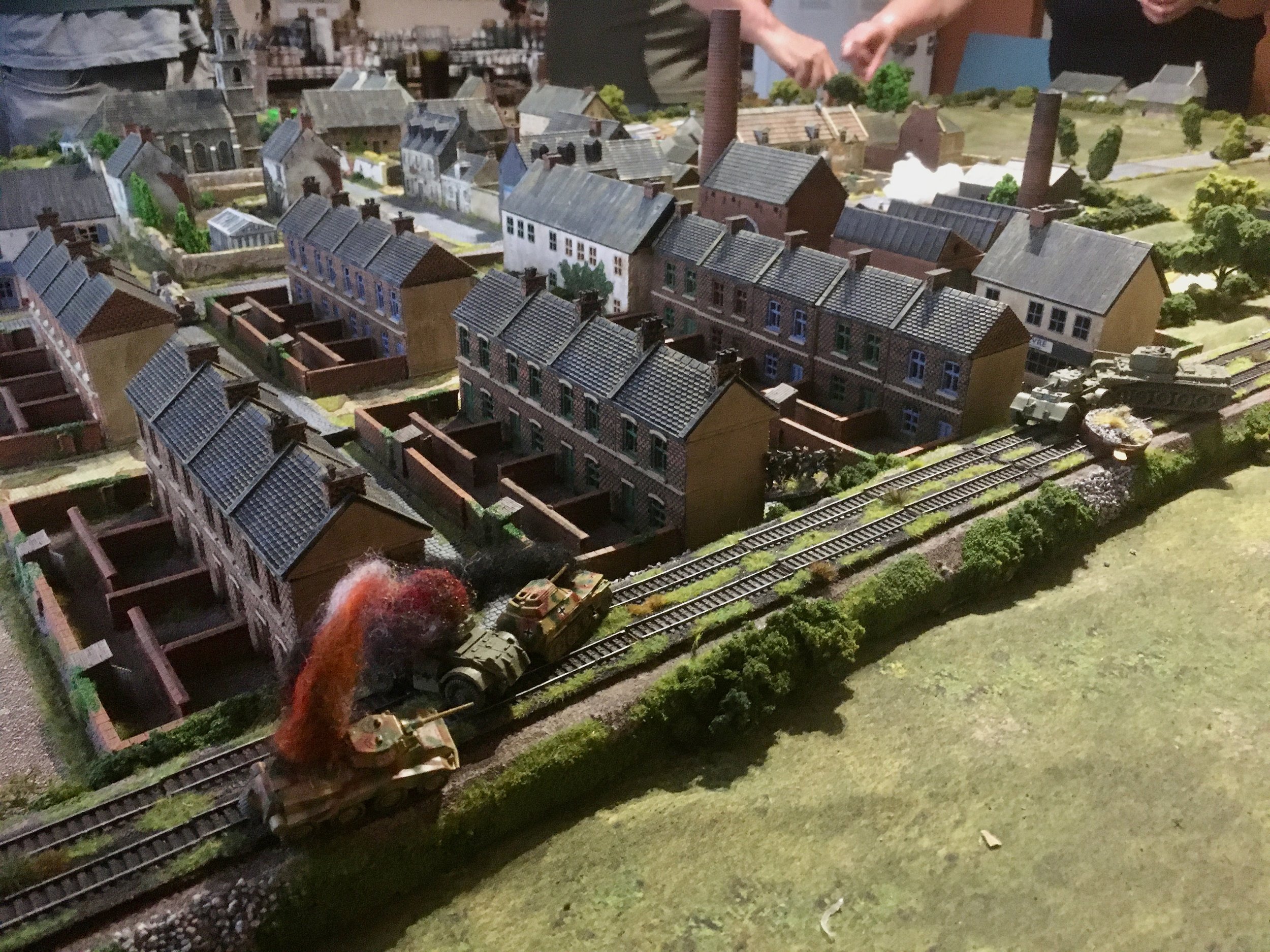
The German right flank now appeared largely undefended...
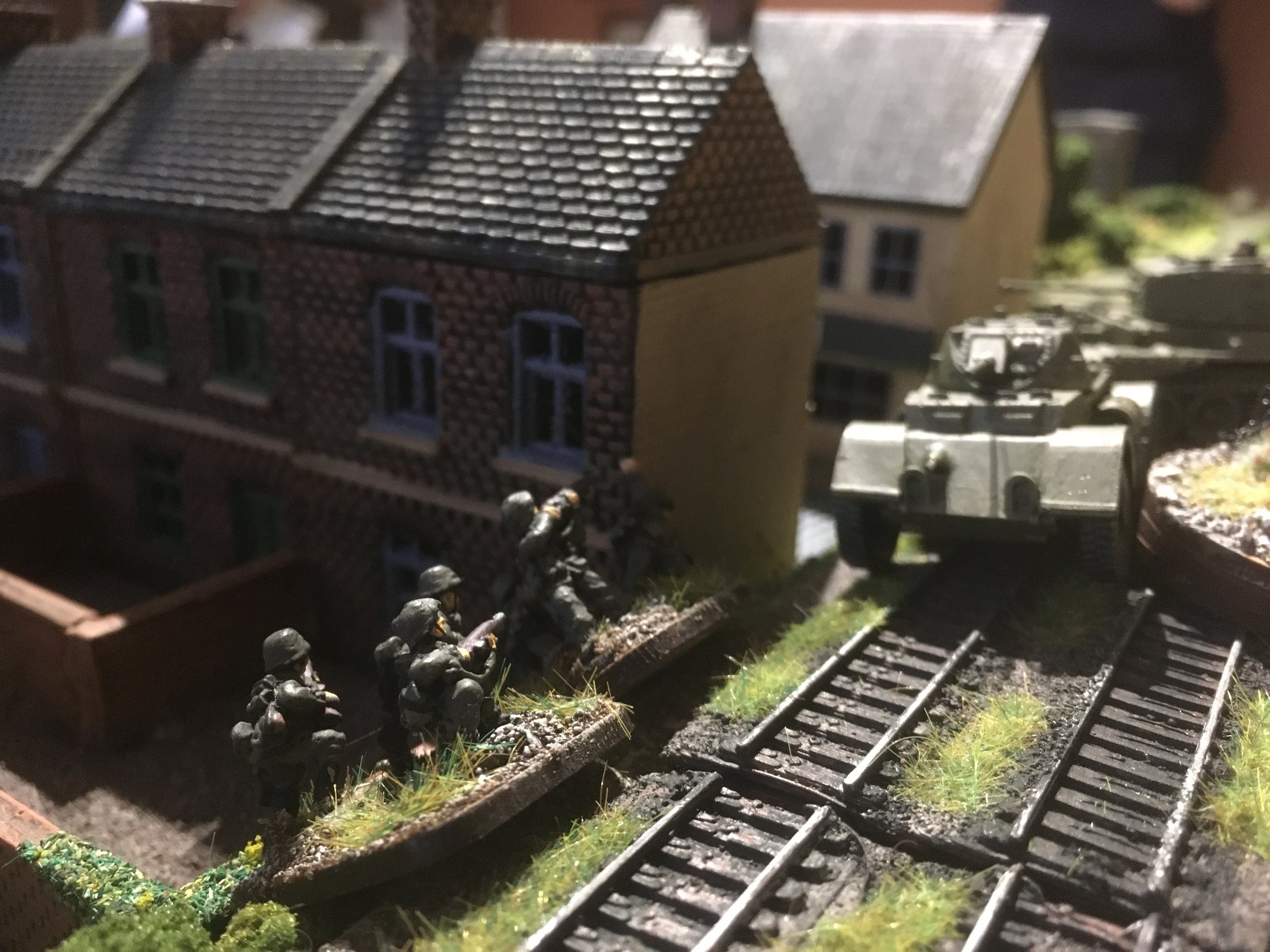
The Staghound spraying a section of German infantry with machine-gun fire, with little success.
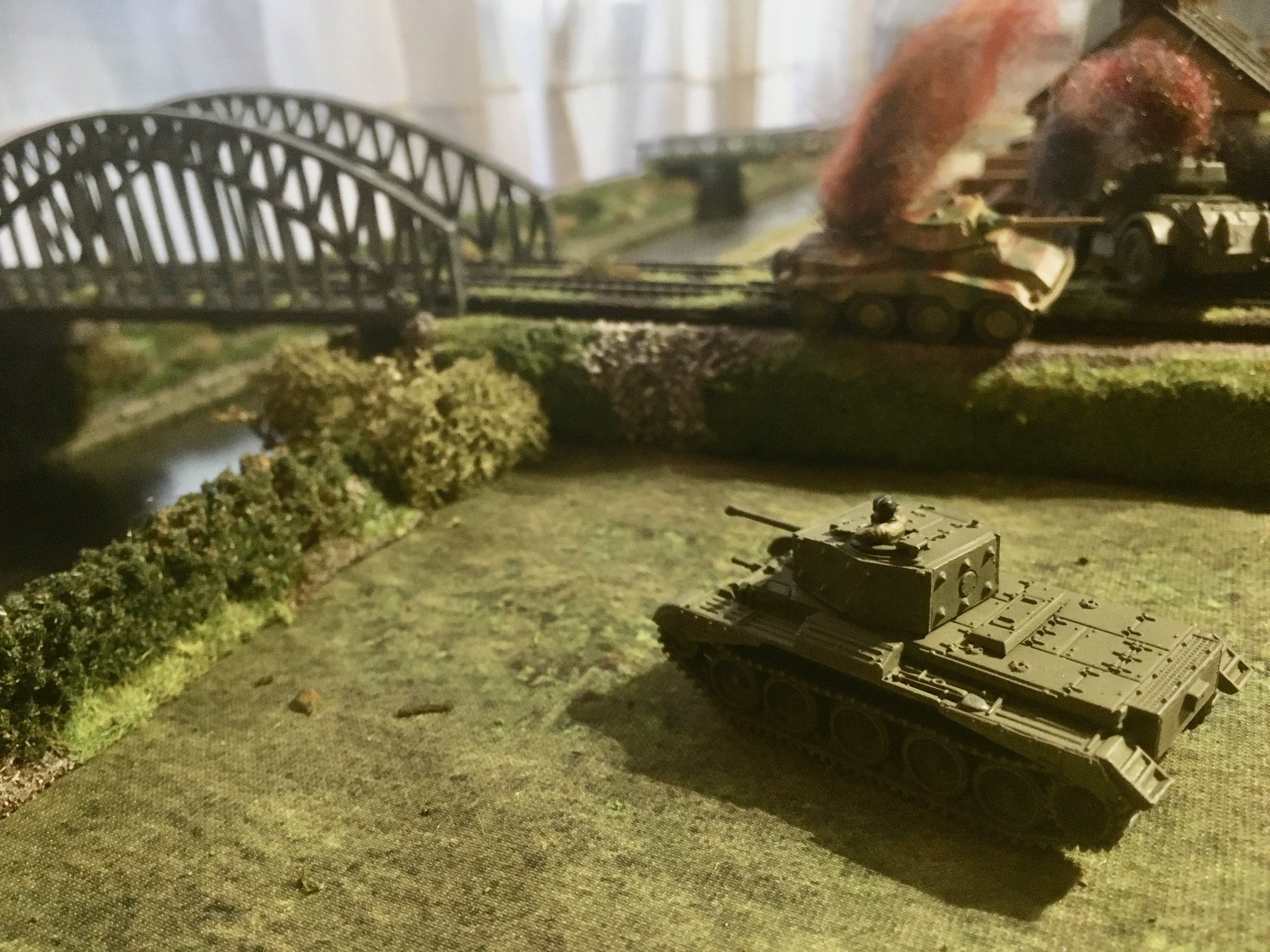
However, the road (or should that be railway) to Brussels was open and the 1st troop swept forward...
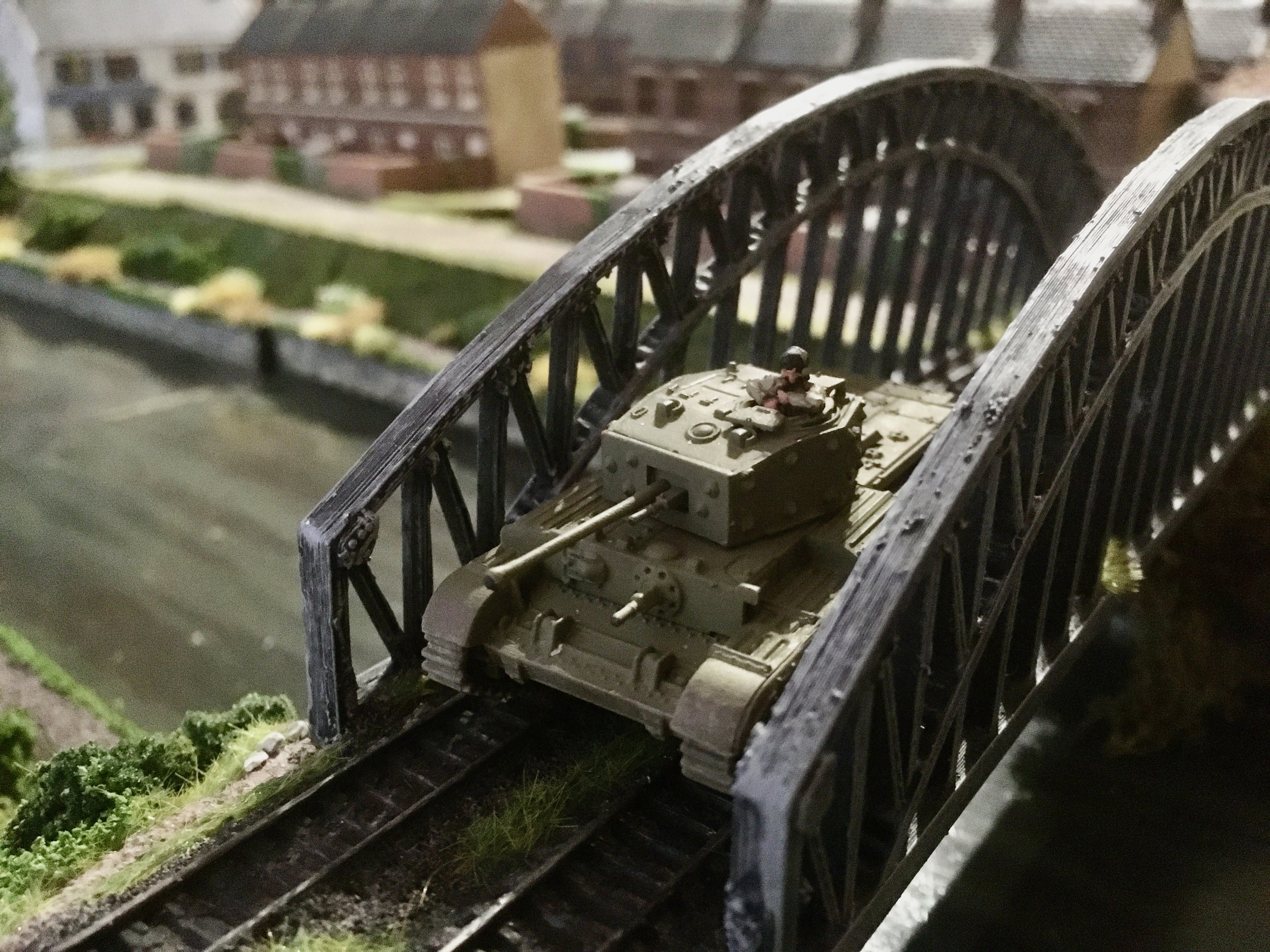
The first of its Cromwells crossing the railway bridge to the green fields beyond Halle! Brussels here we come!
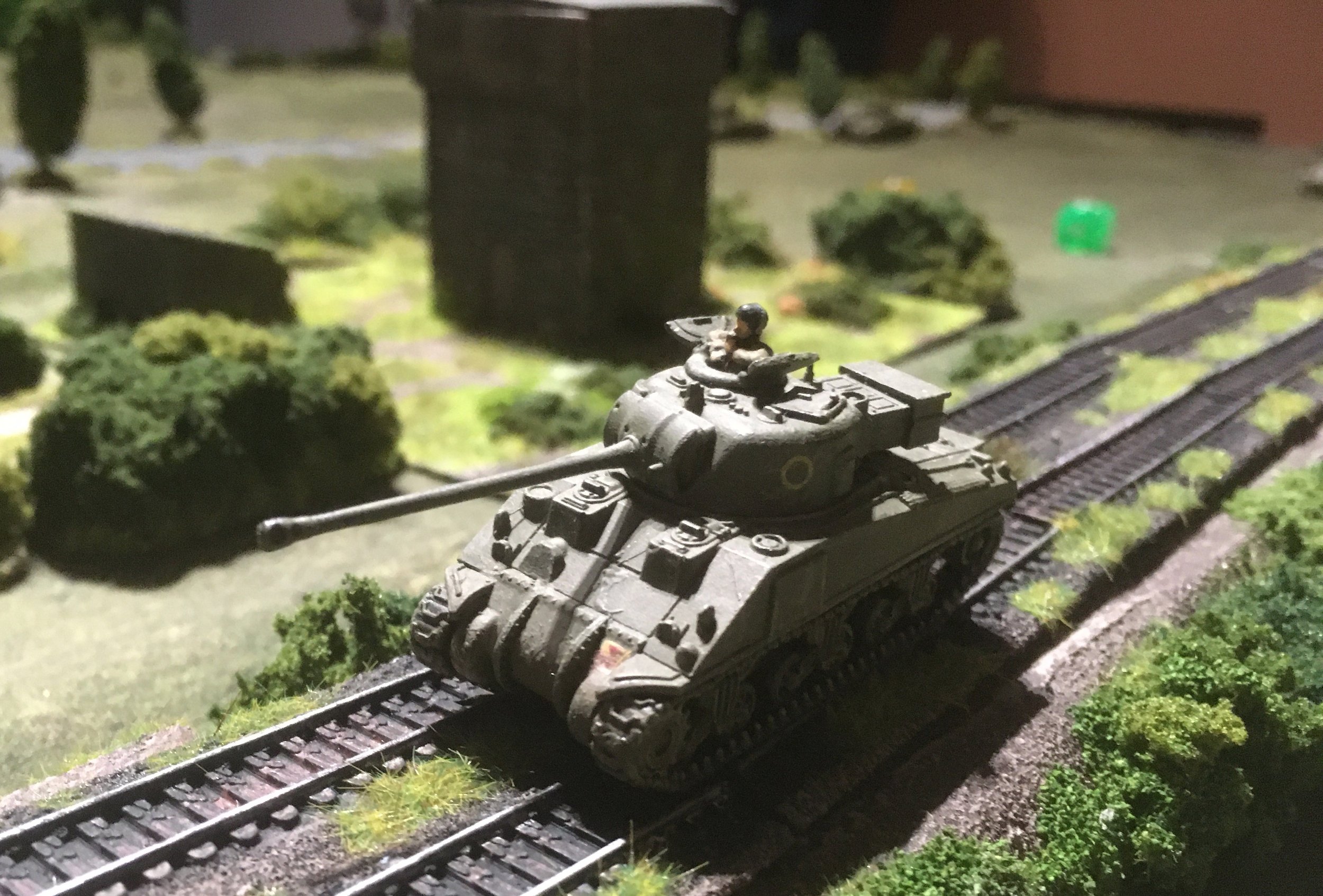
With the flank now open the second troop's Sherman Firefly began to advance down the railway line...
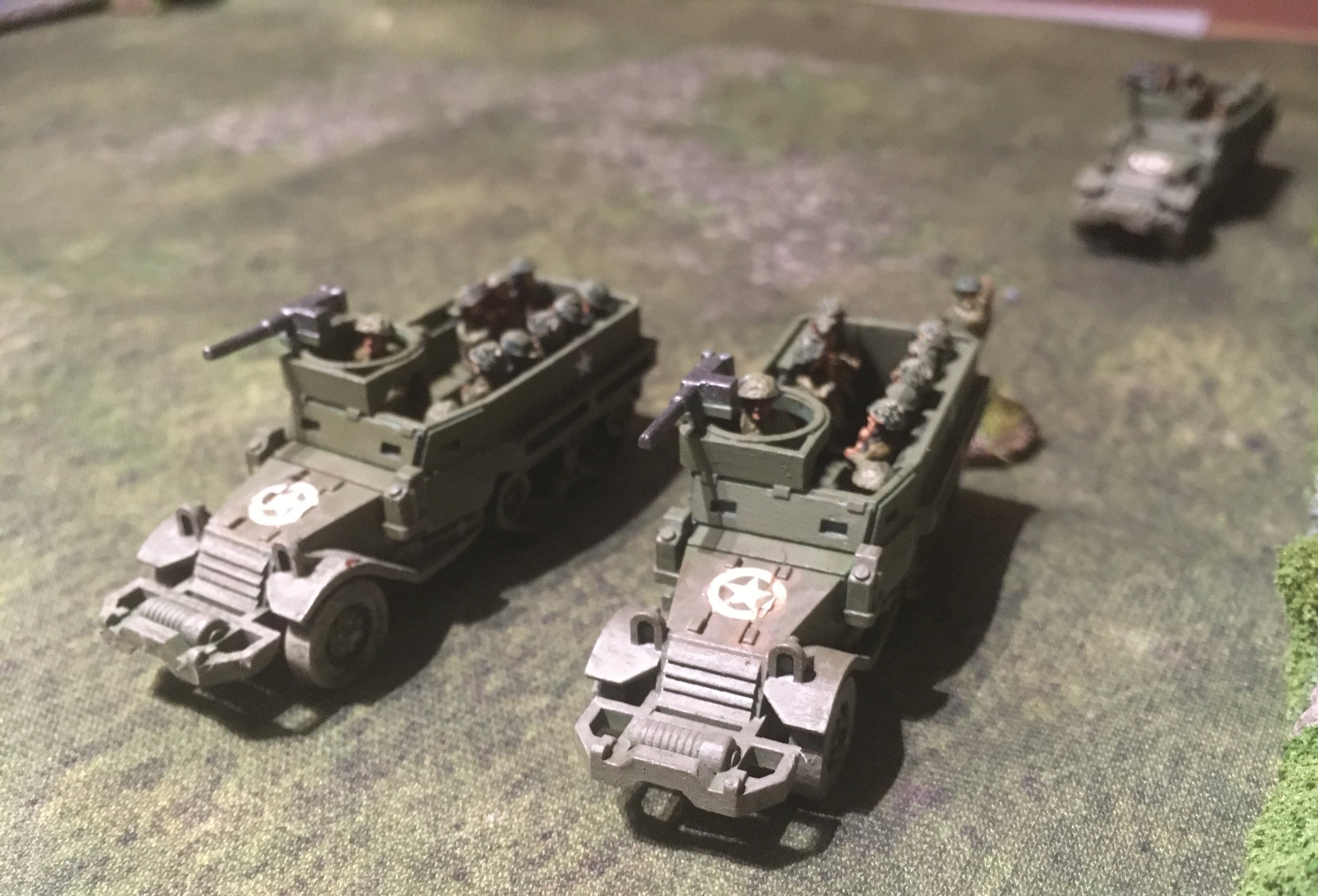
Followed by a platoon of Grenadier Guards.
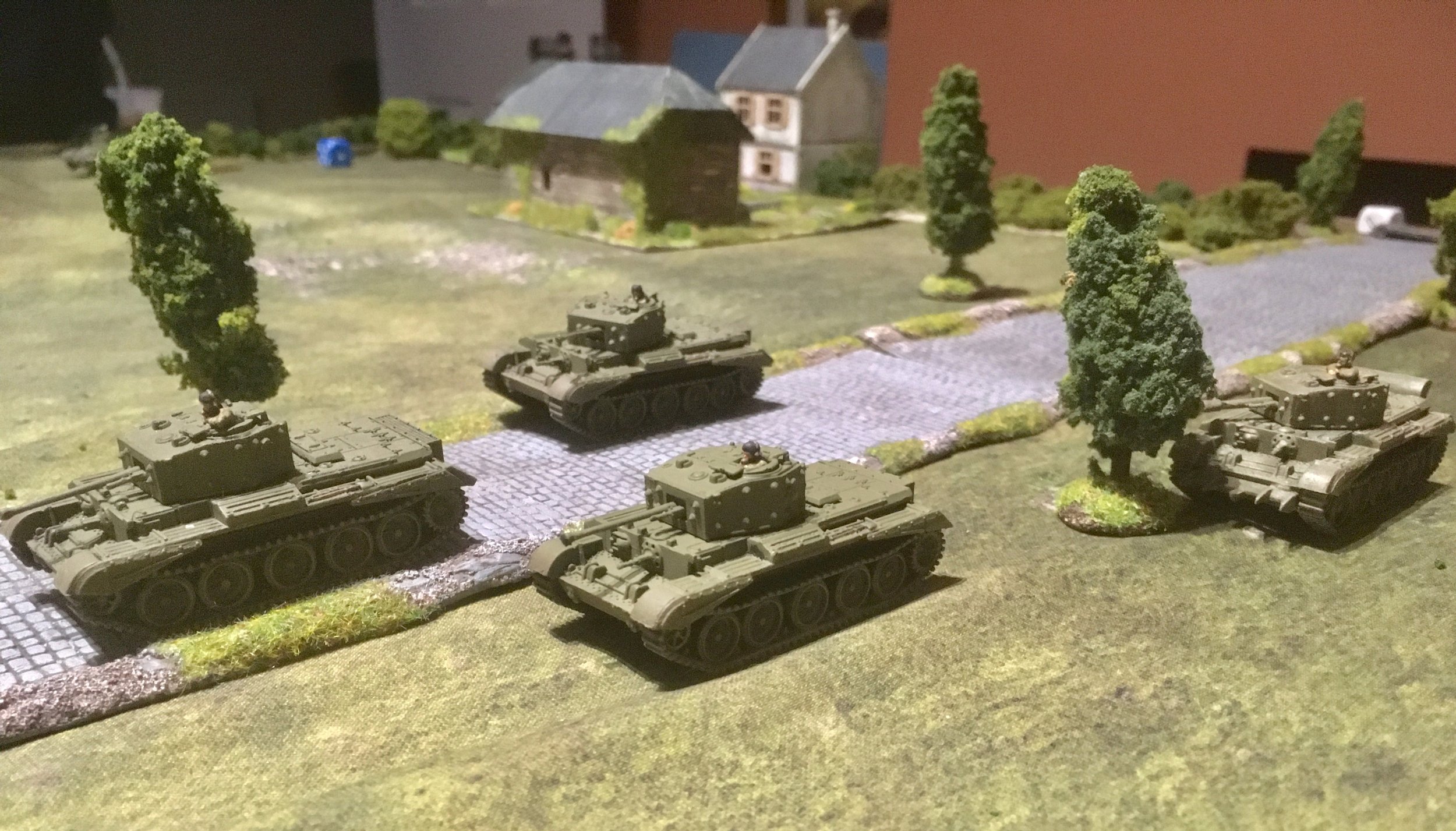
Whilst the Welsh Guard's HQ troop pushed up through the centre.
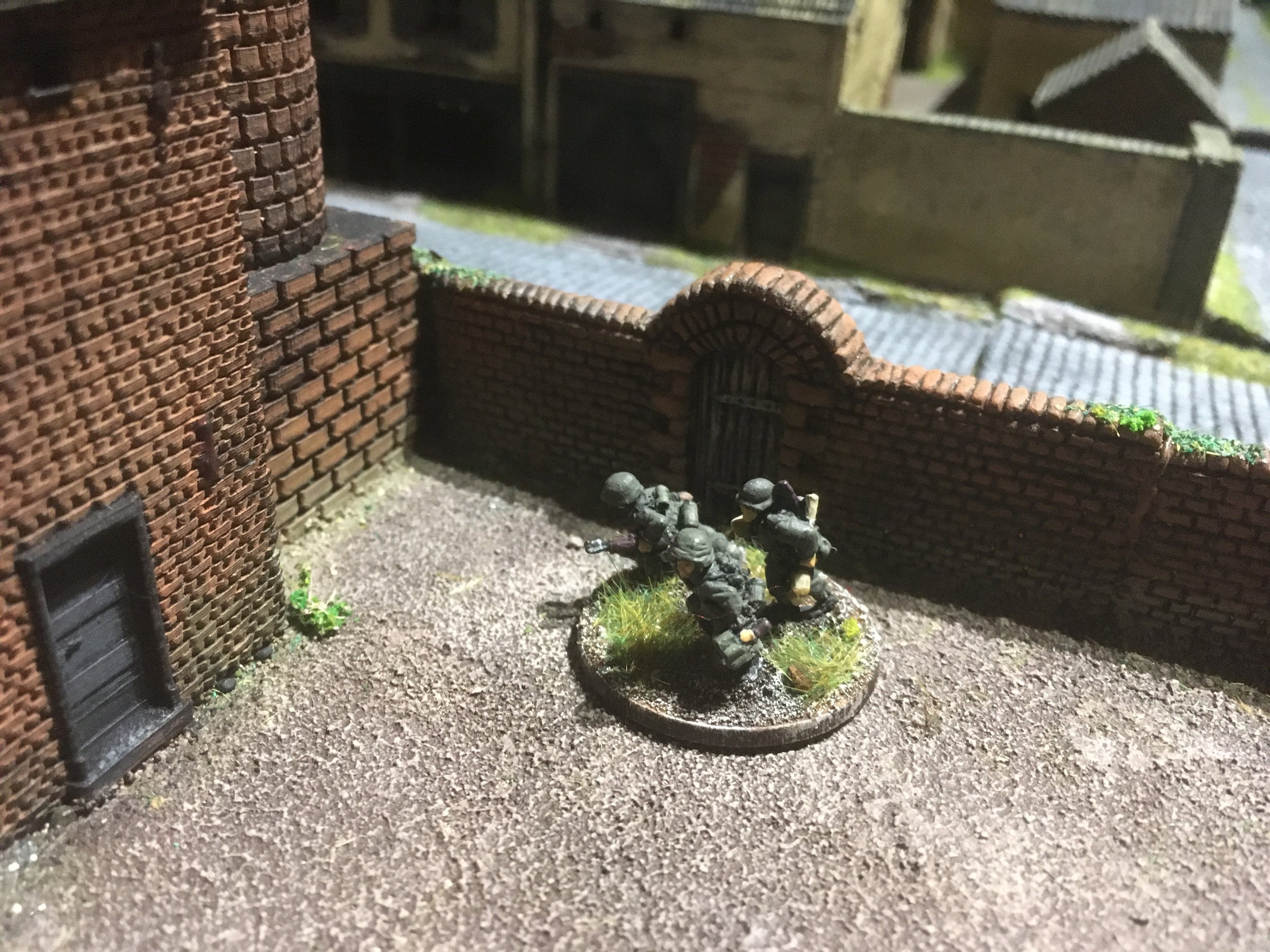
The Panzerknacker team rushed to the collapsing railway line flank...

Whilst the remaining infantry there attempted a desperate, but unsuccessful, close assault on the Staghound.
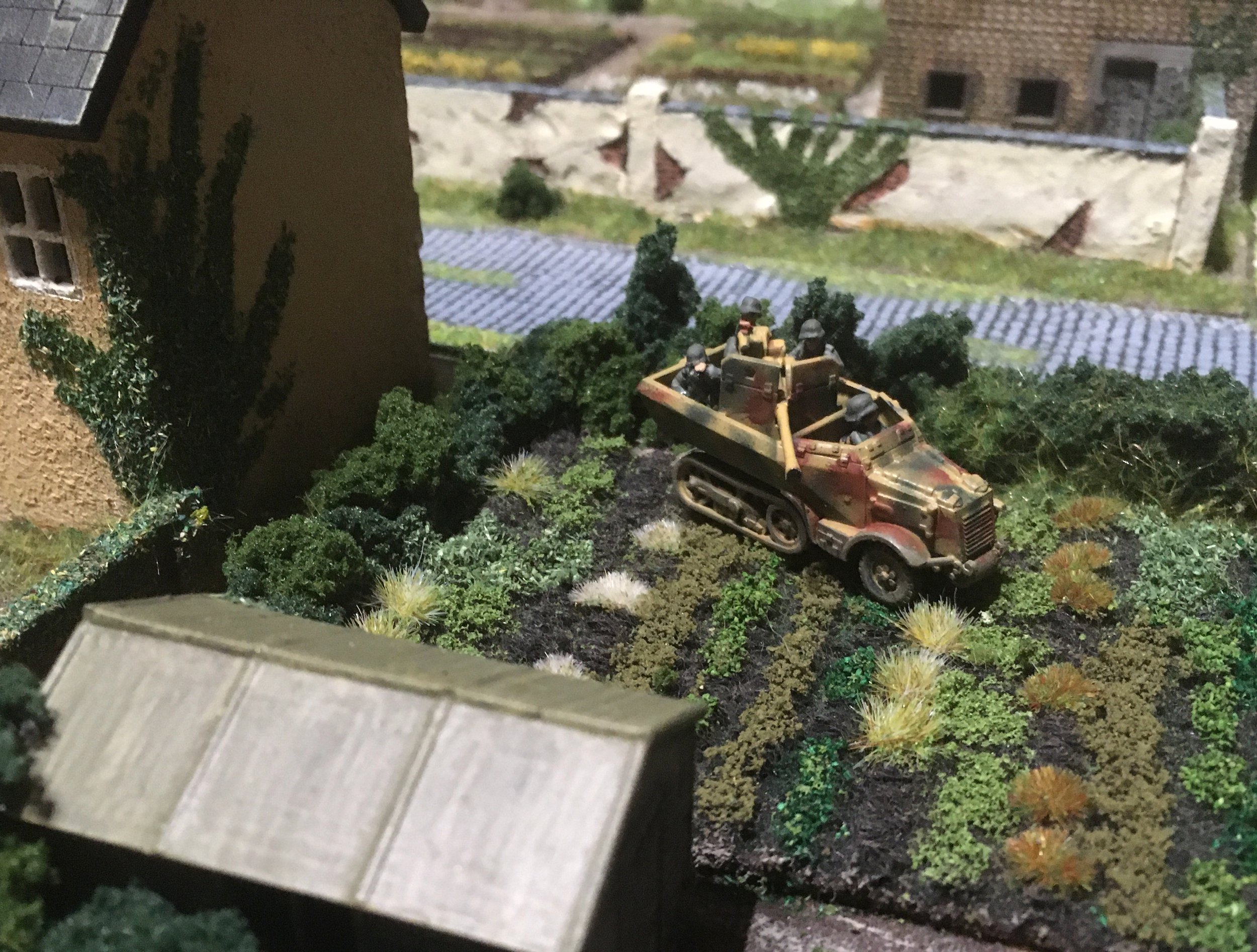
On the German left a U304(f) Flak appeared...
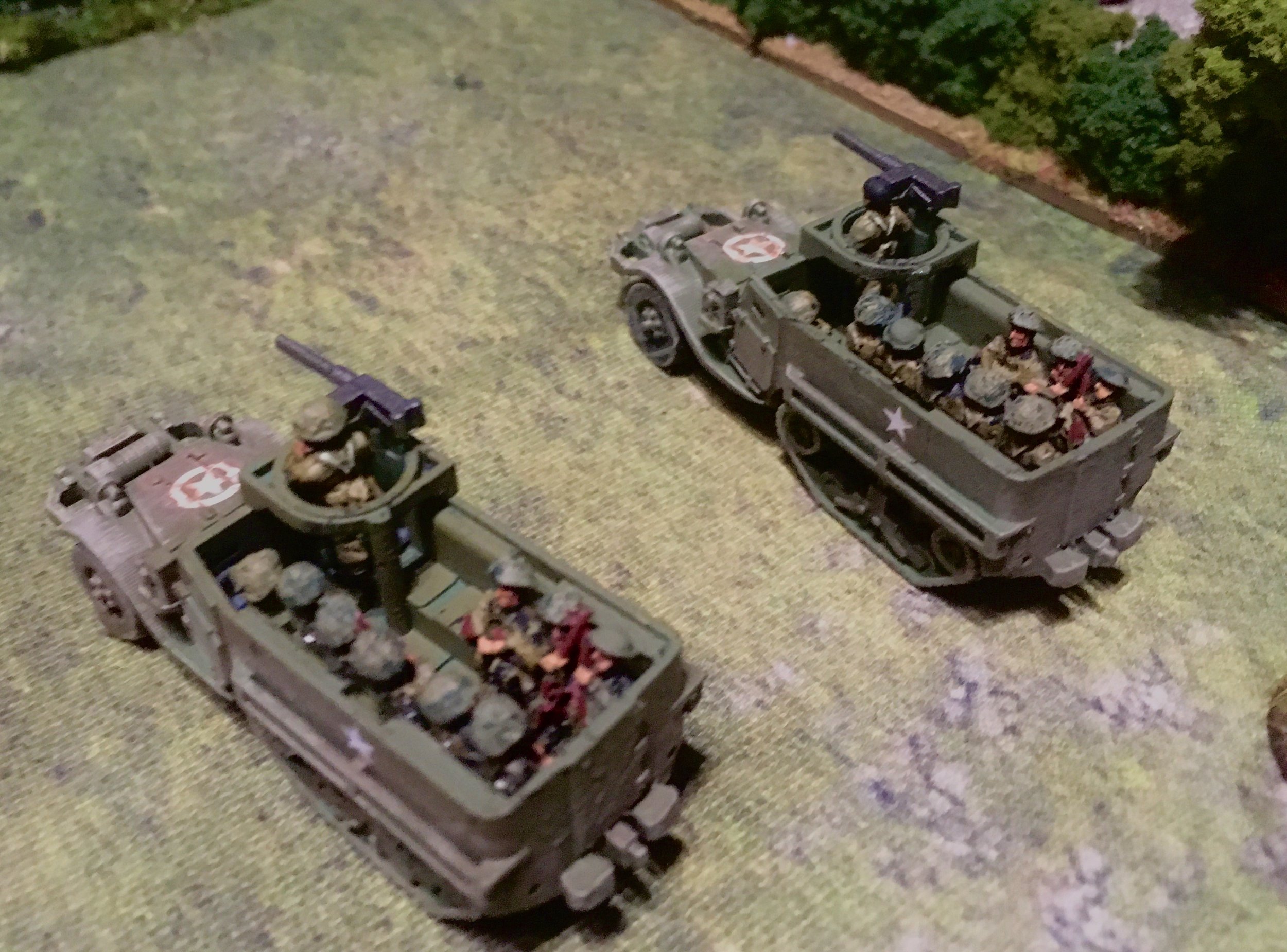
The German commander training list 20mm AA cannon on the second platoon of Grenadier Guards in their M5 half-tracks.

The U304(f) opened fire, its 20mm gun destroying one M5, killing several guardsmen and inflicting Shock on the survivors.
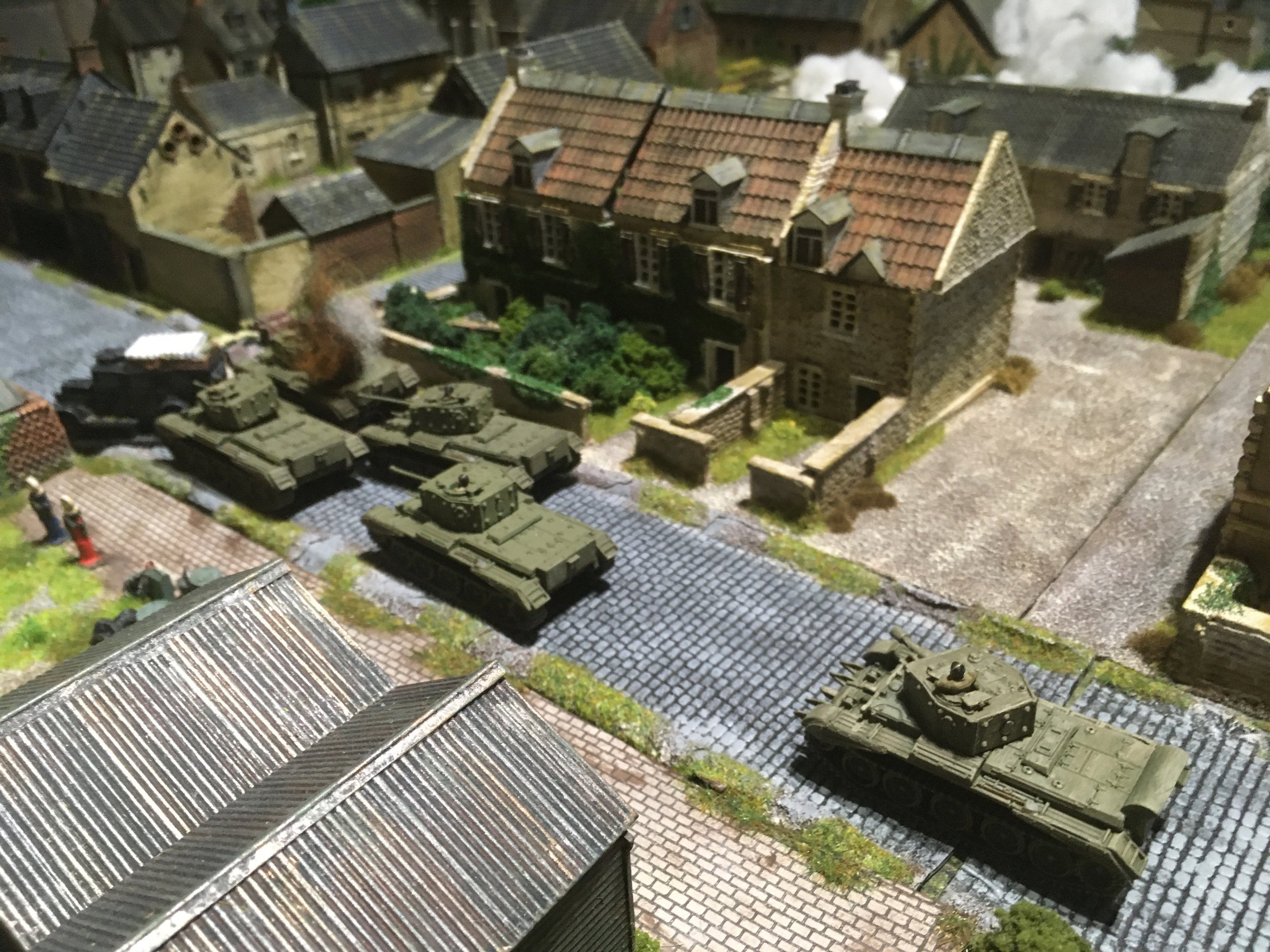
However in the centre, the Welsh HQ troop was now pushing through the German barricade.

Whilst the first Grenadier Guards platoon and the original Welsh Firefly pushed up the left by the railway...
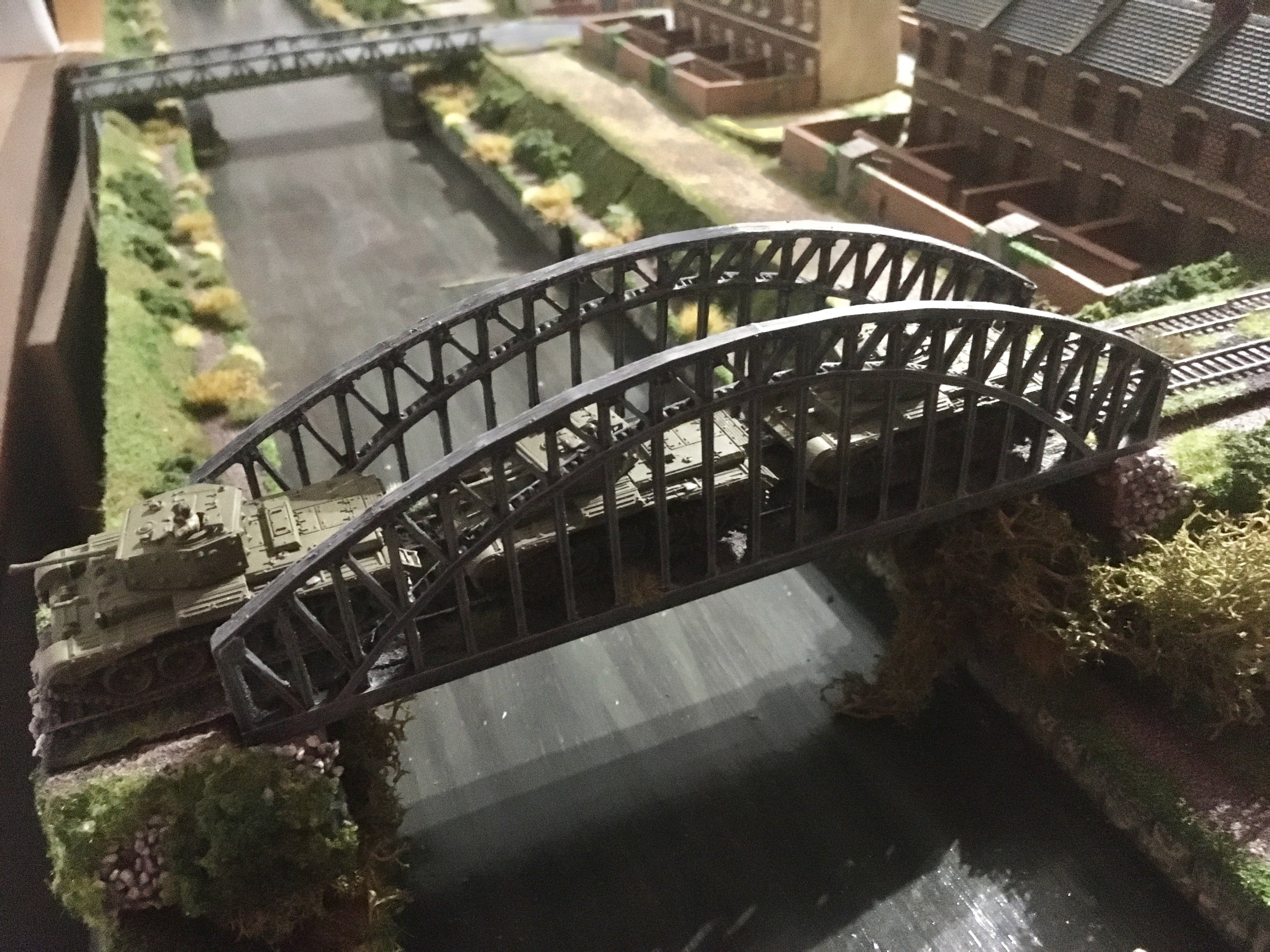
Following more Welsh armour which was now crossing the railway bridge en route to Brussels.
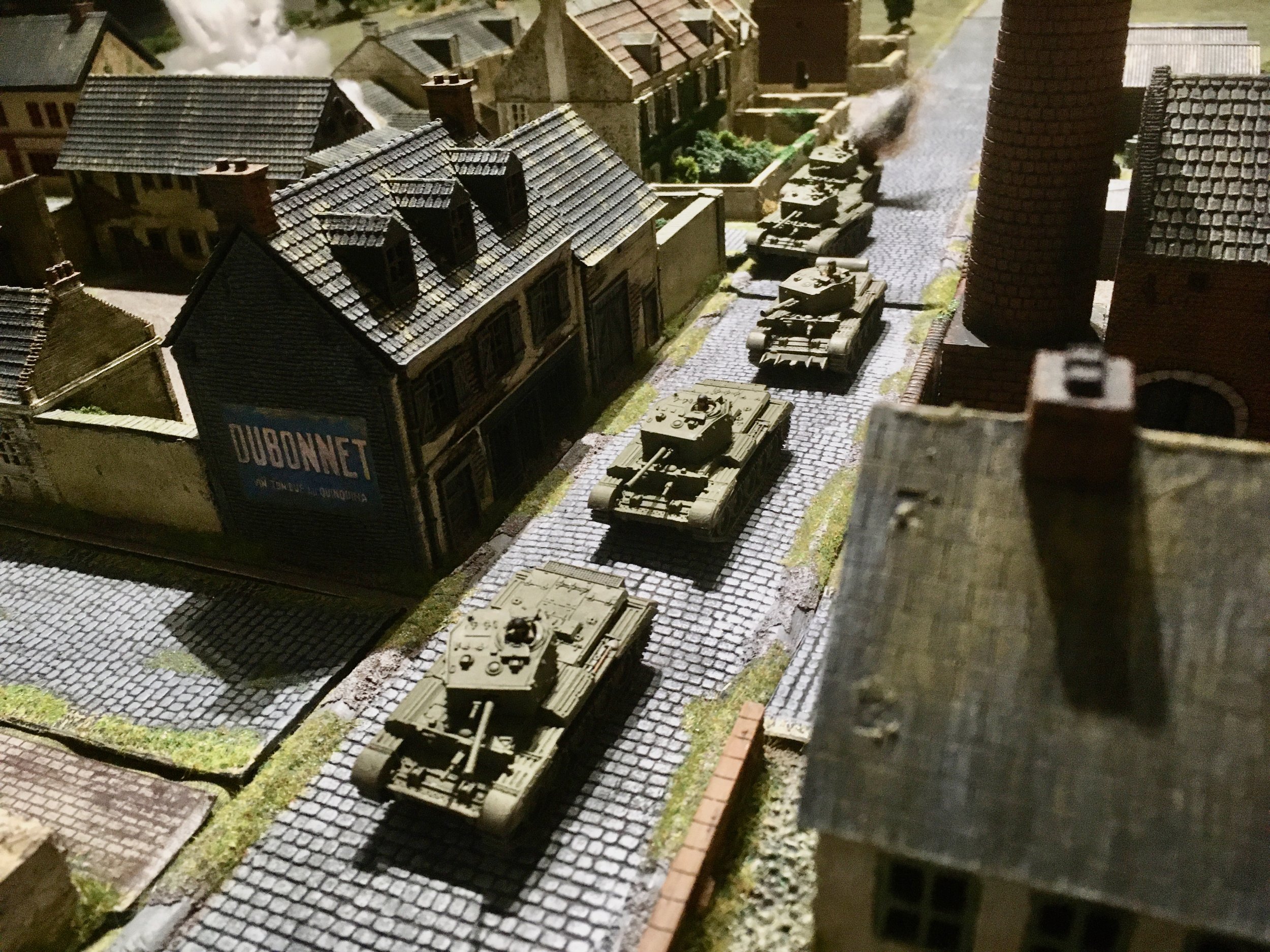
Having cleared the barricade the HQ troop pushed through Halle.
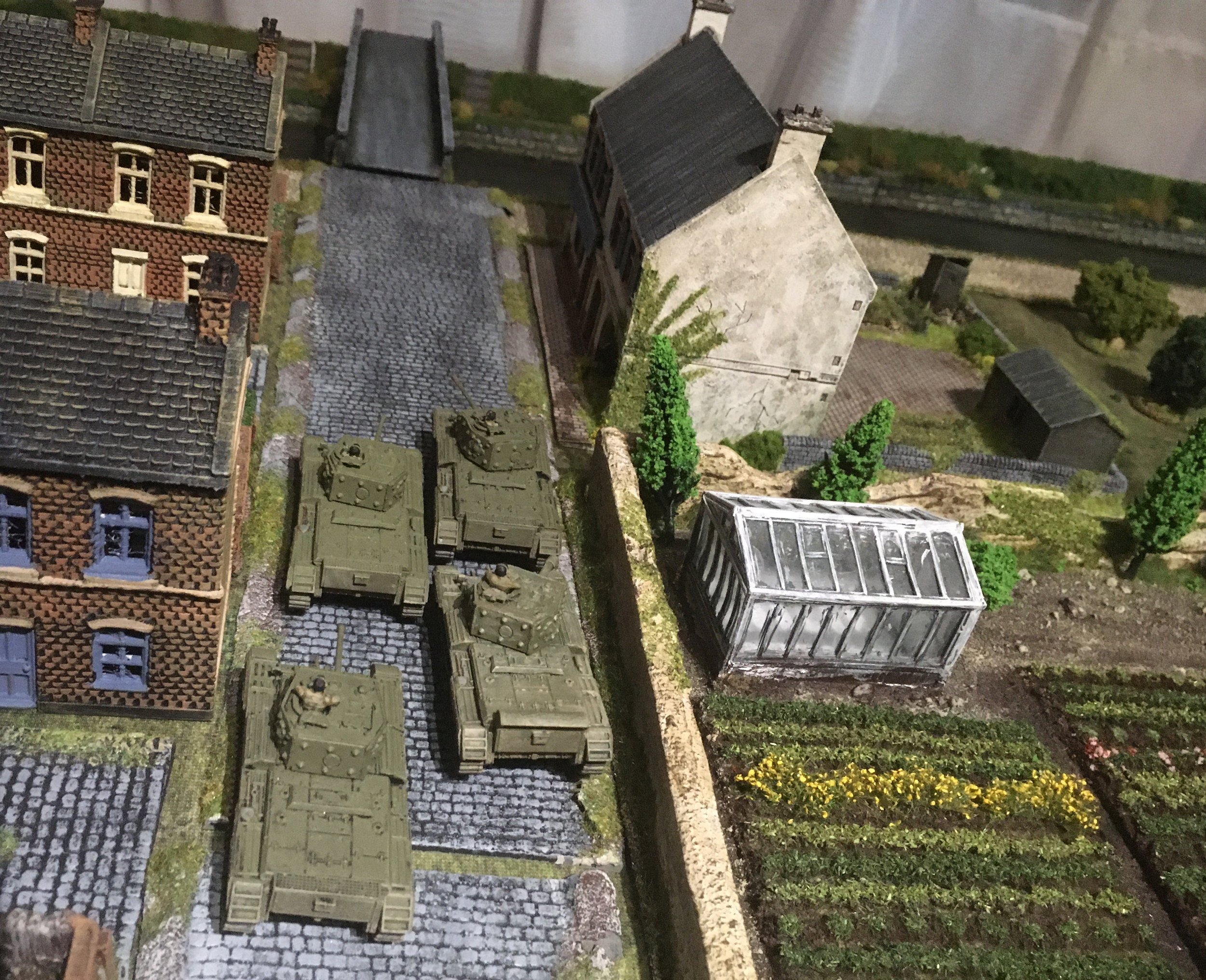
Moving unopposed towards the road bridge.
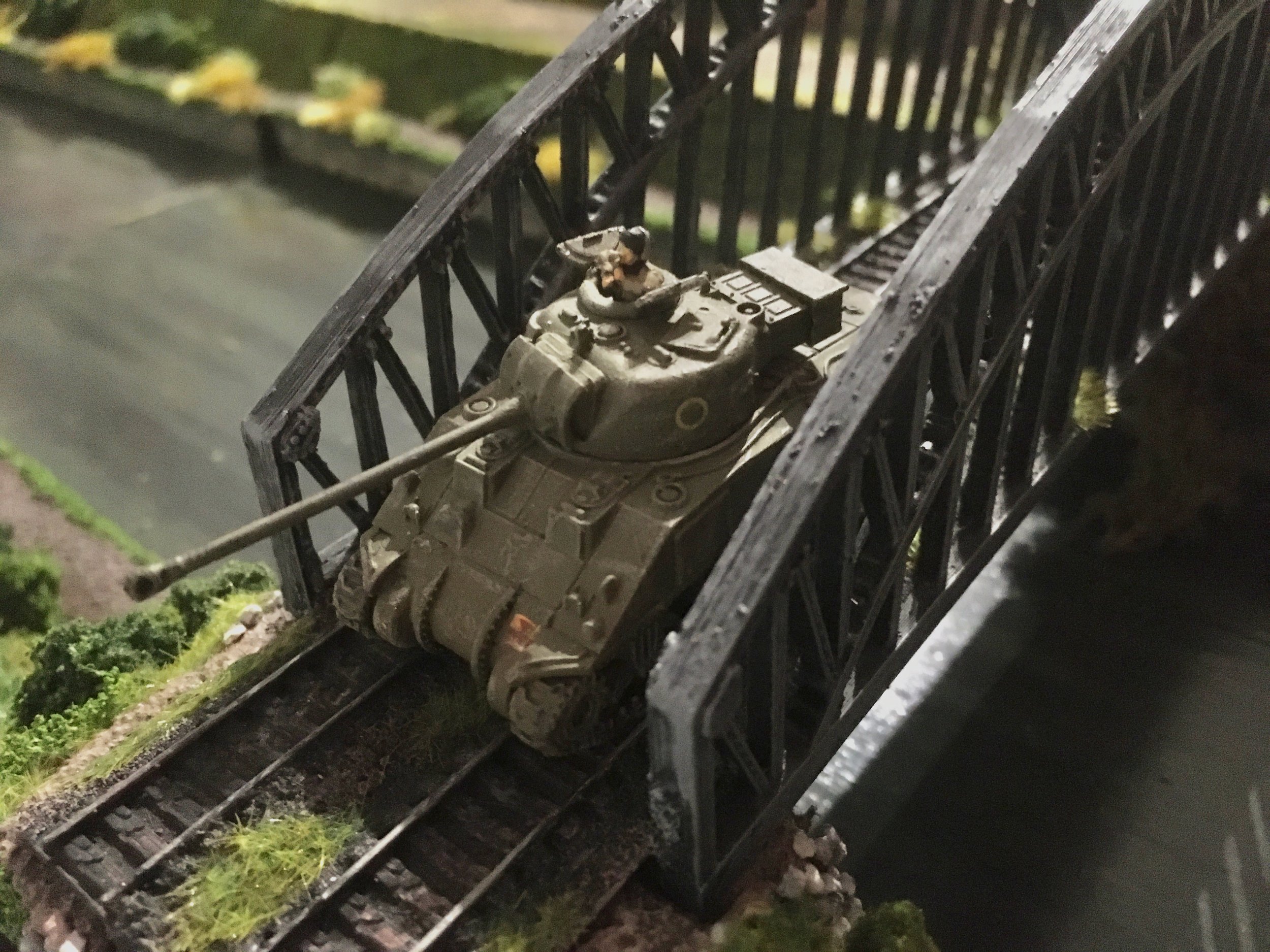
Whilst a Welsh Guards Sherman Firefly crossed the canal.
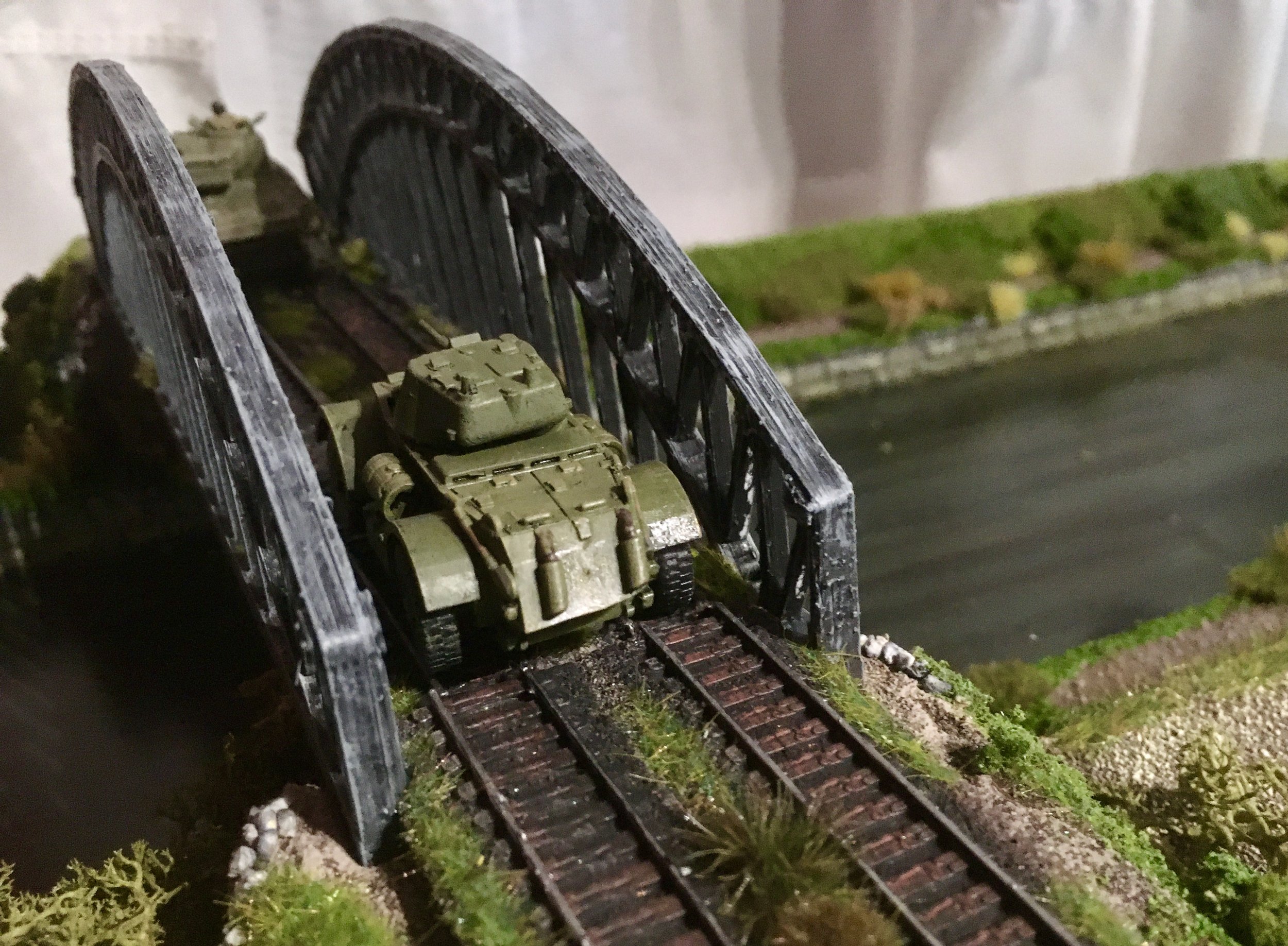
Followed by the remaining Household Cavalry Staghound - the road to Brussels was now well and truly open.
A resounding British (Welsh) victory for Jenny and myself. Andy had been very unlucky in his support option draws (he could have had a King Tiger or a Jadgpanther!) though we made sure we did not get our armour stuck trying to push through the town - as it appeared some players did at Operation Market Larden yesterday... :-)
Steve Blease













